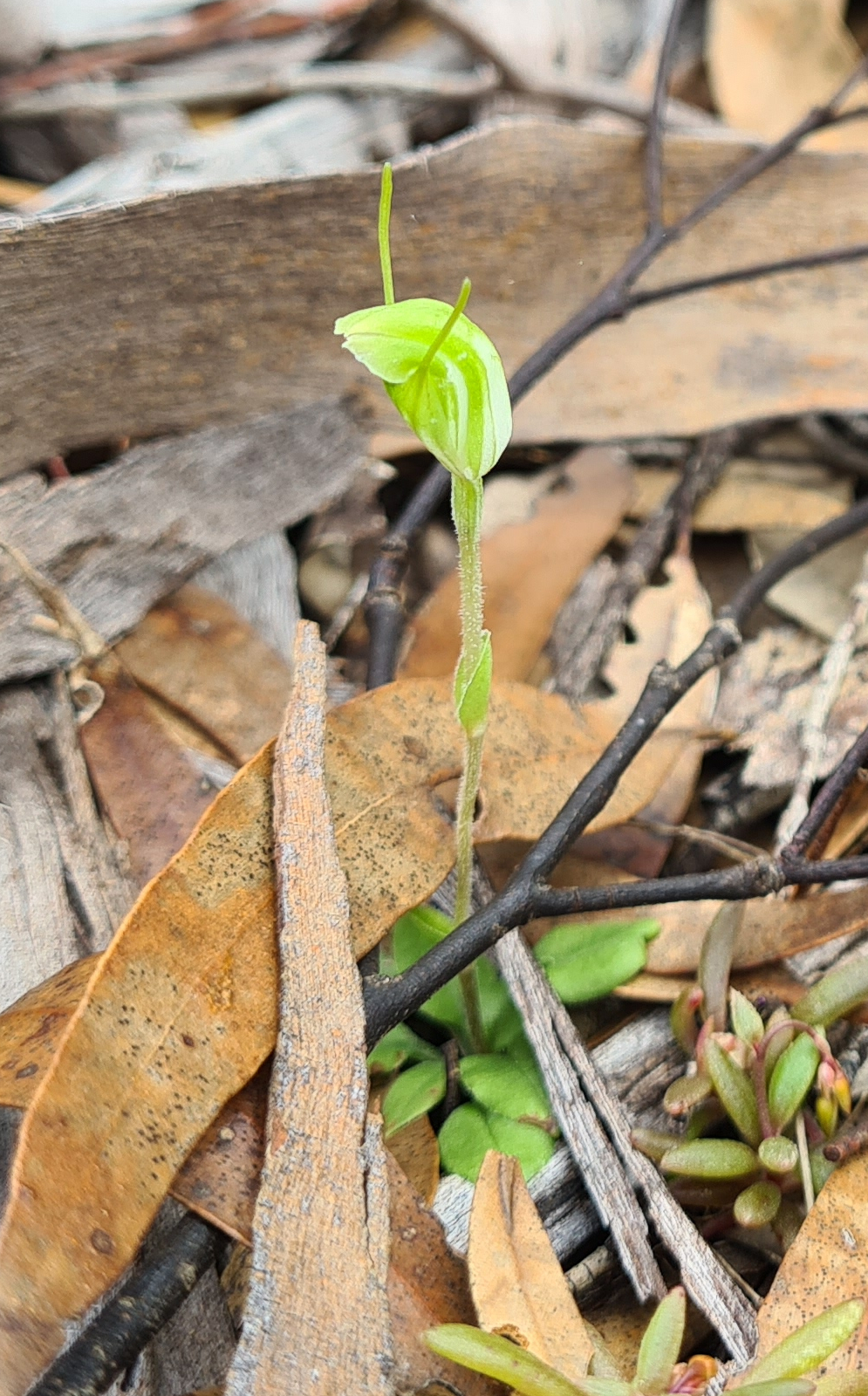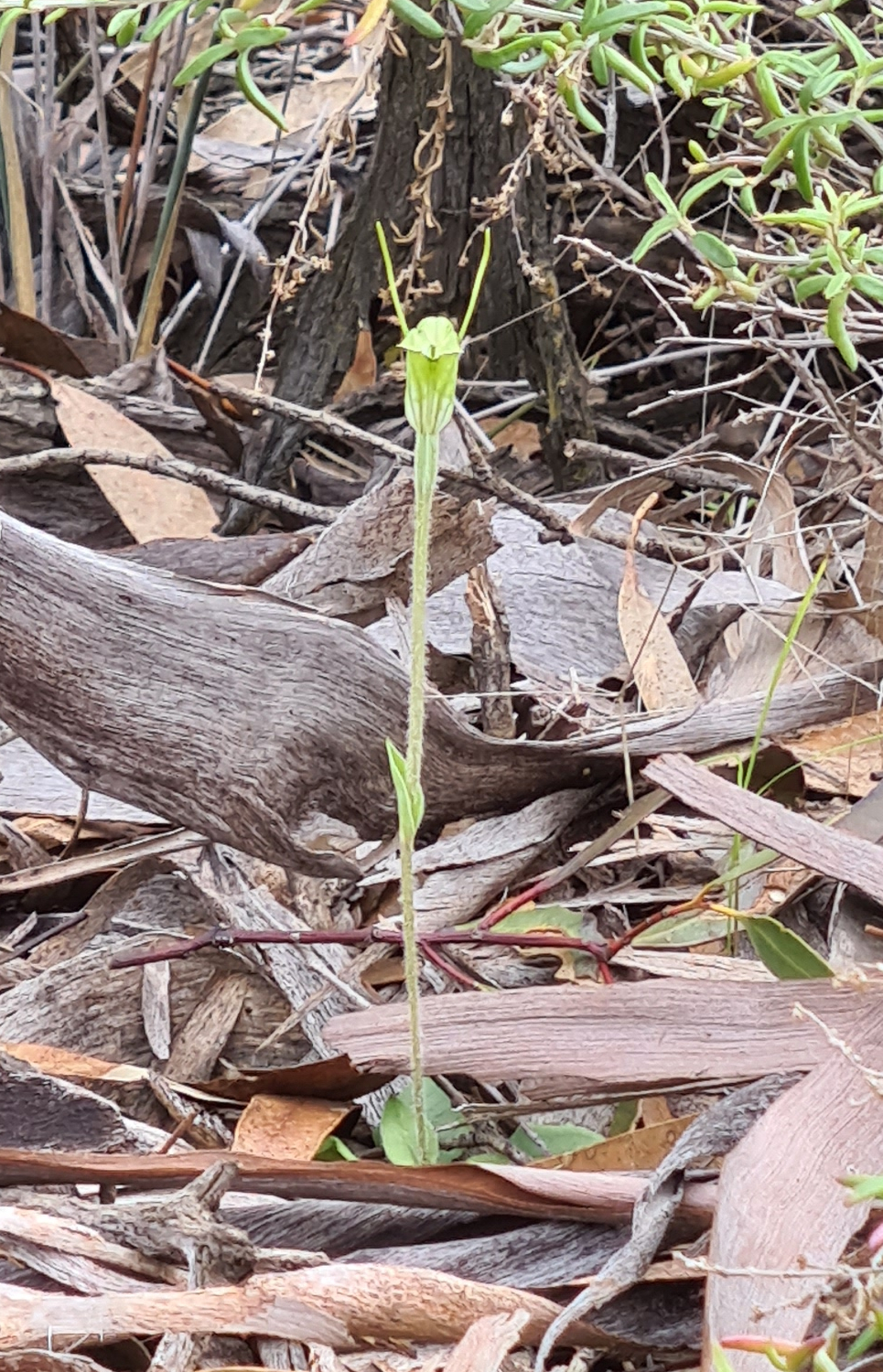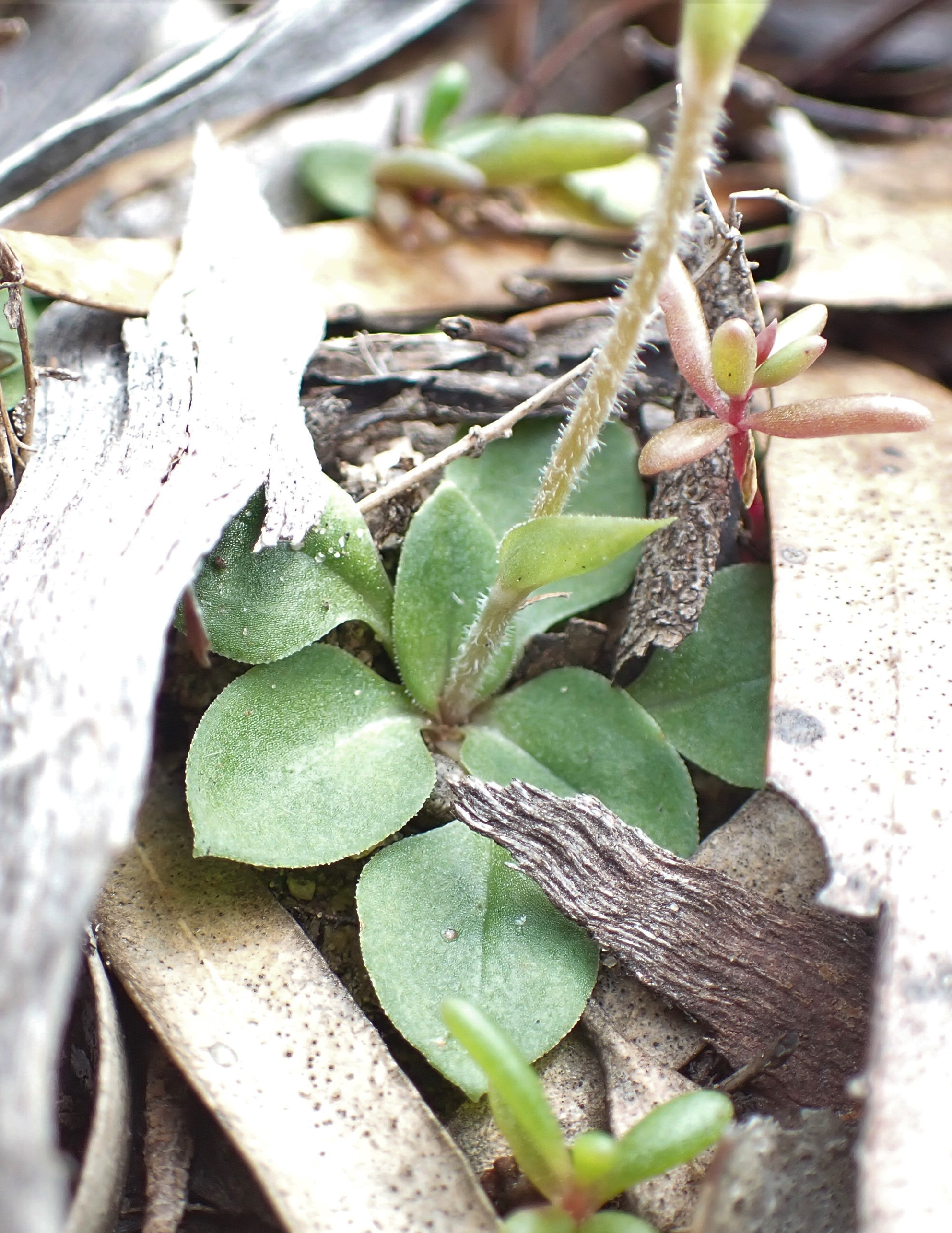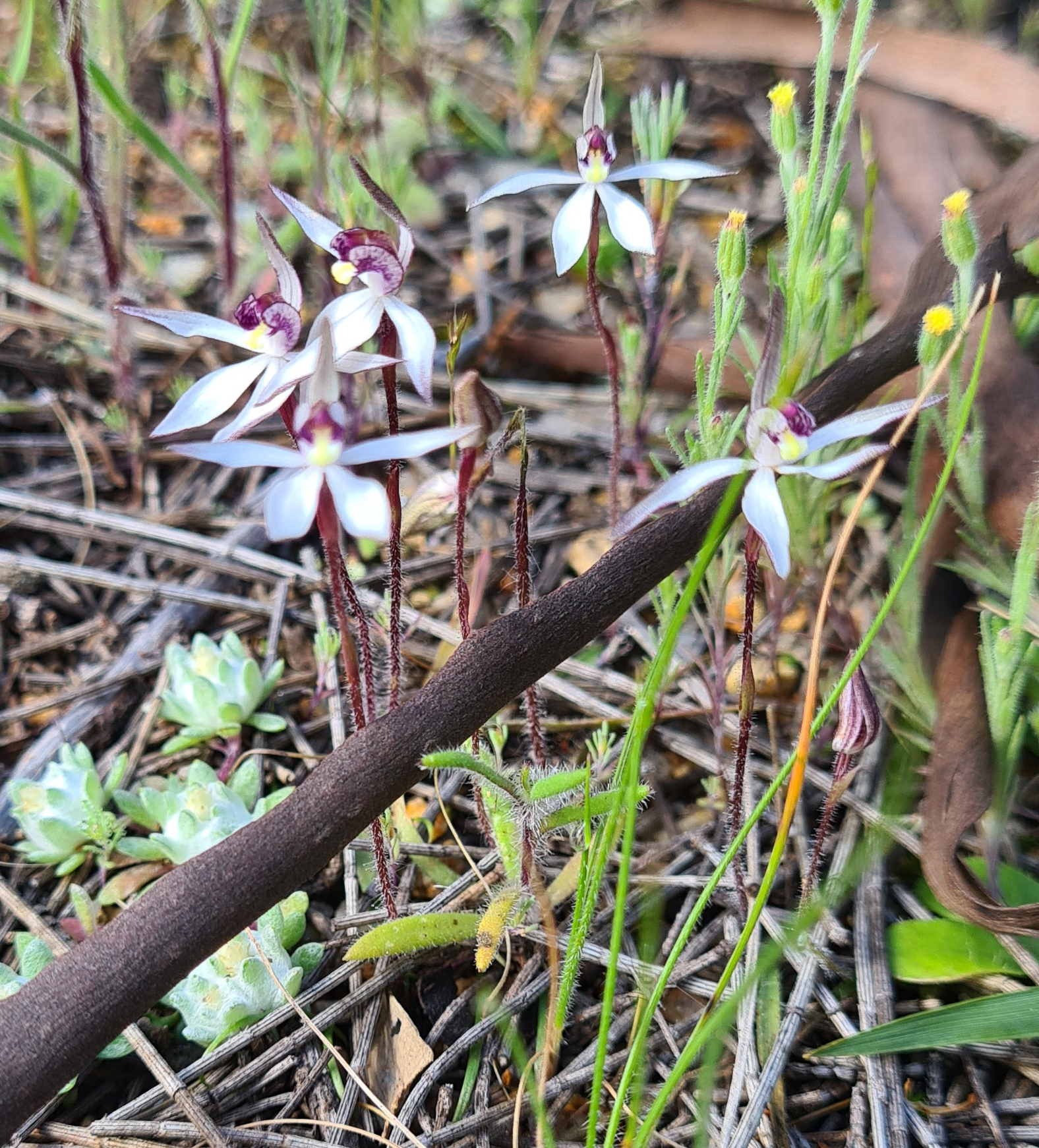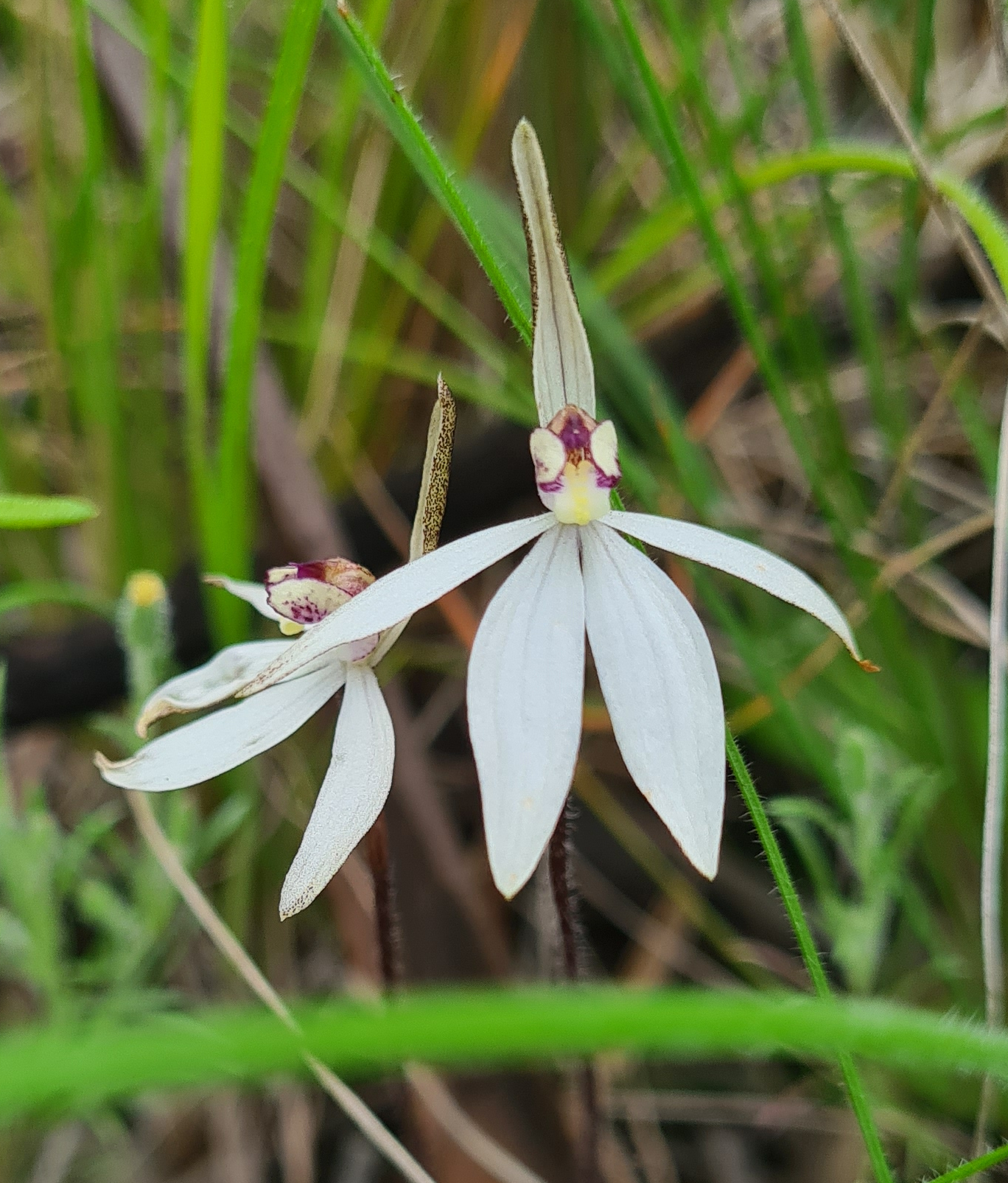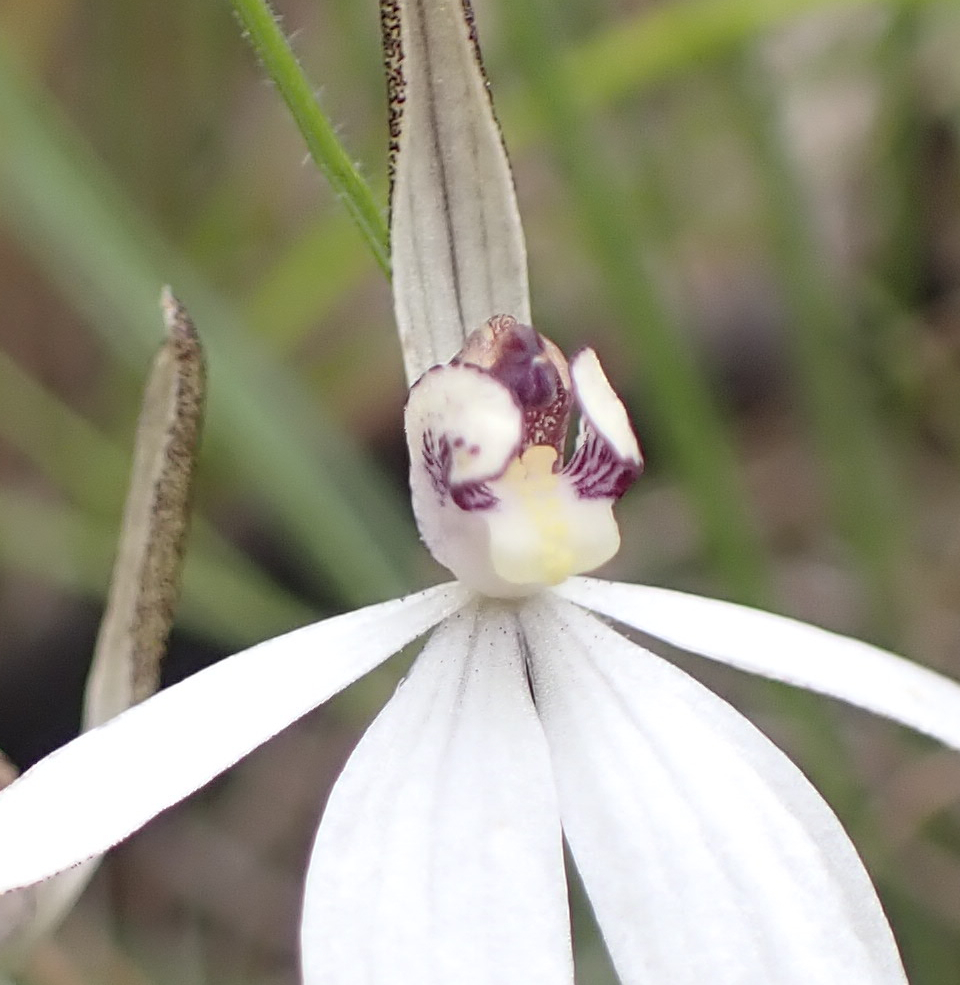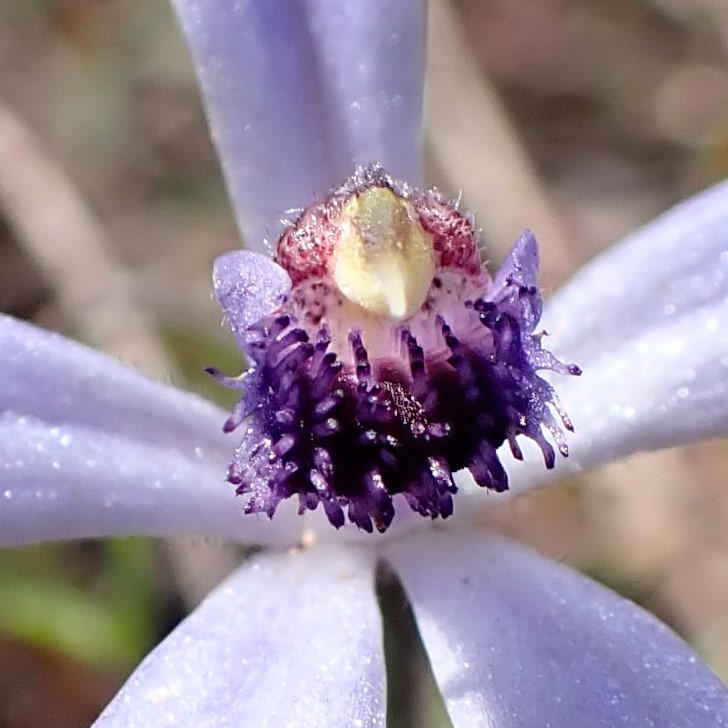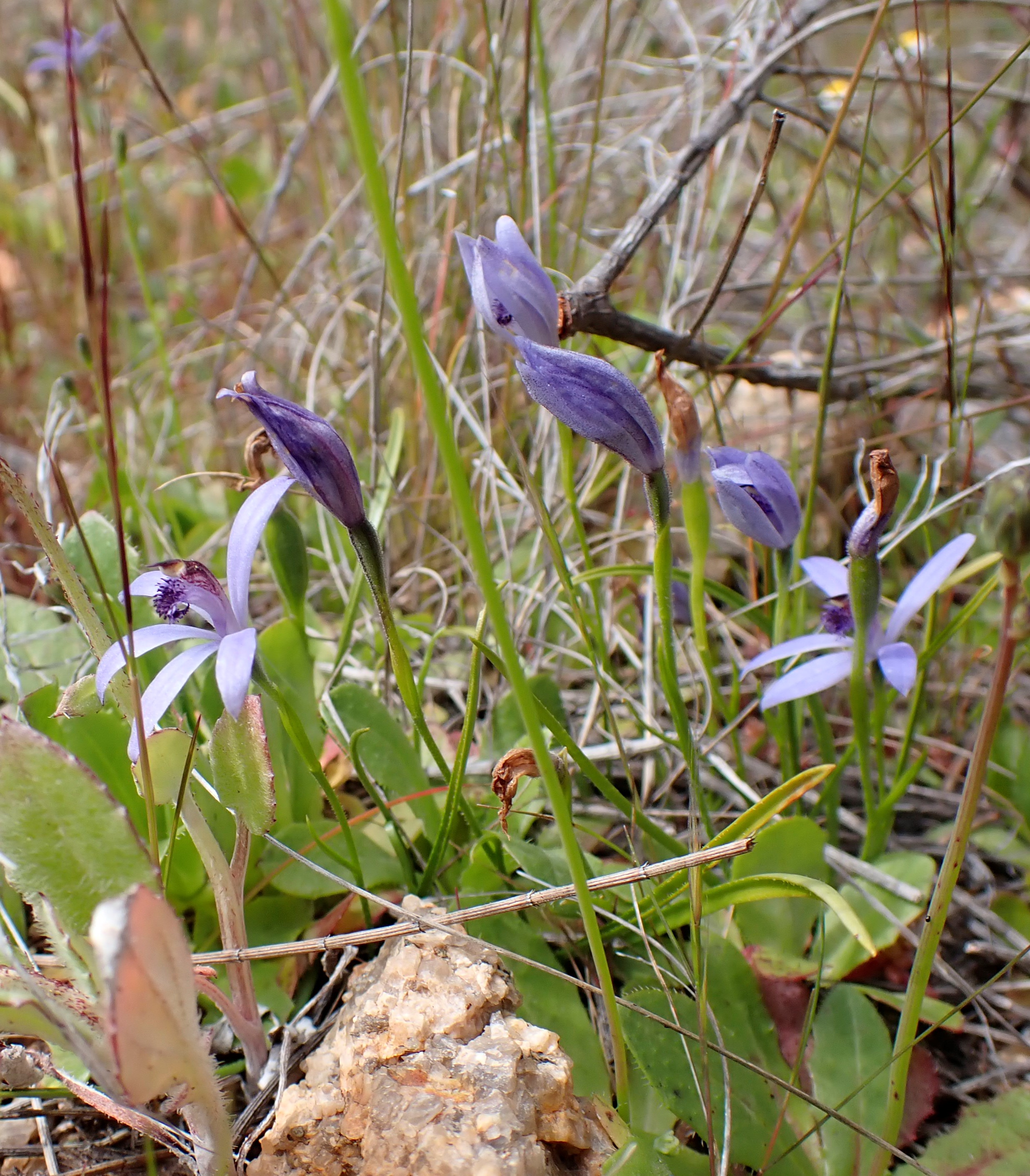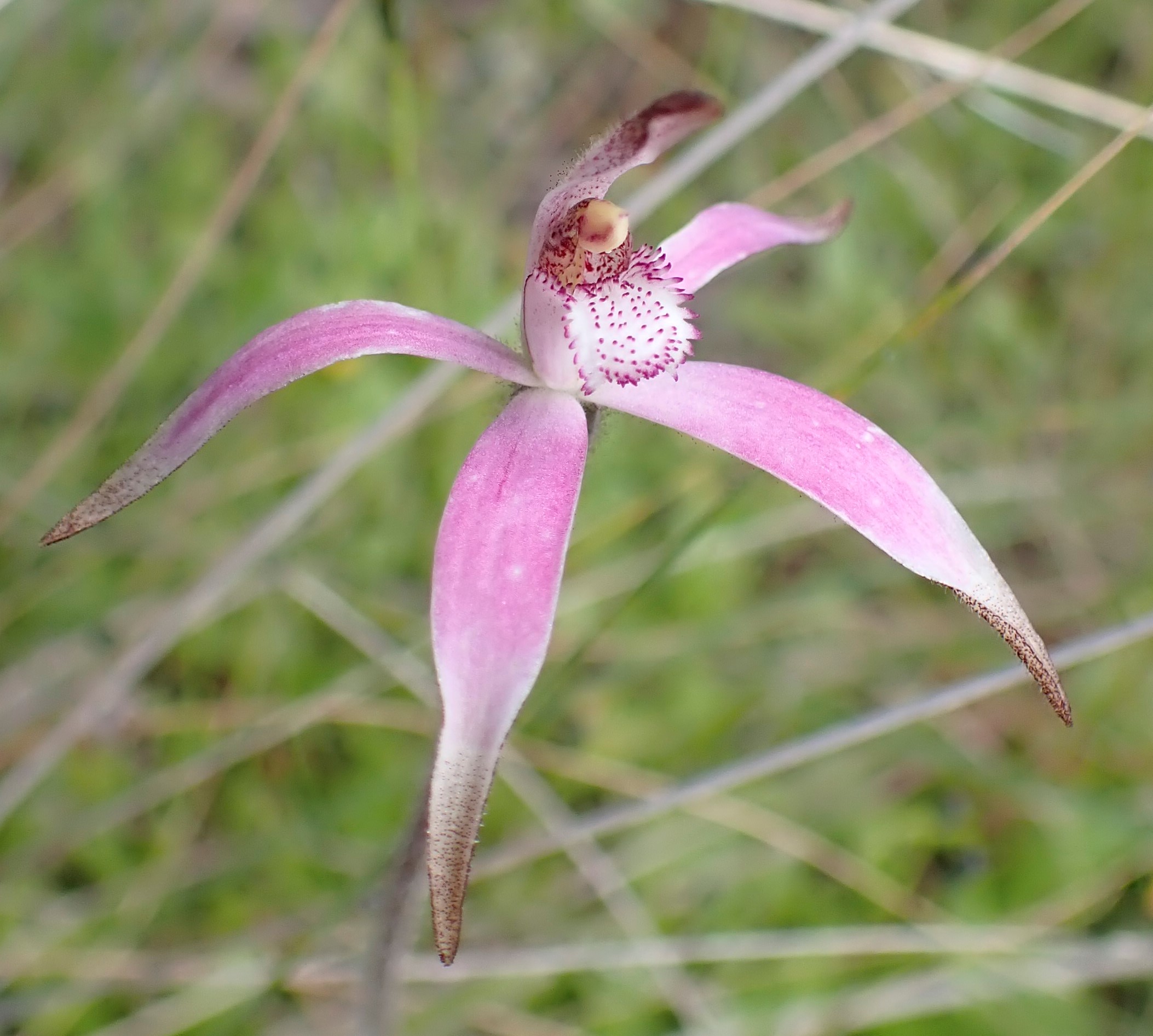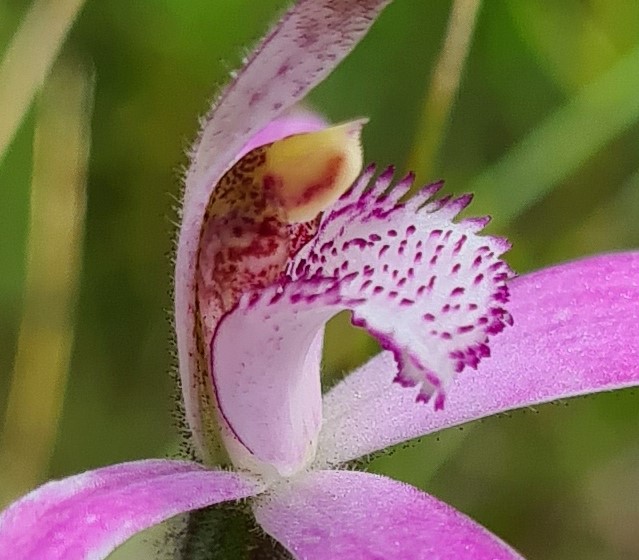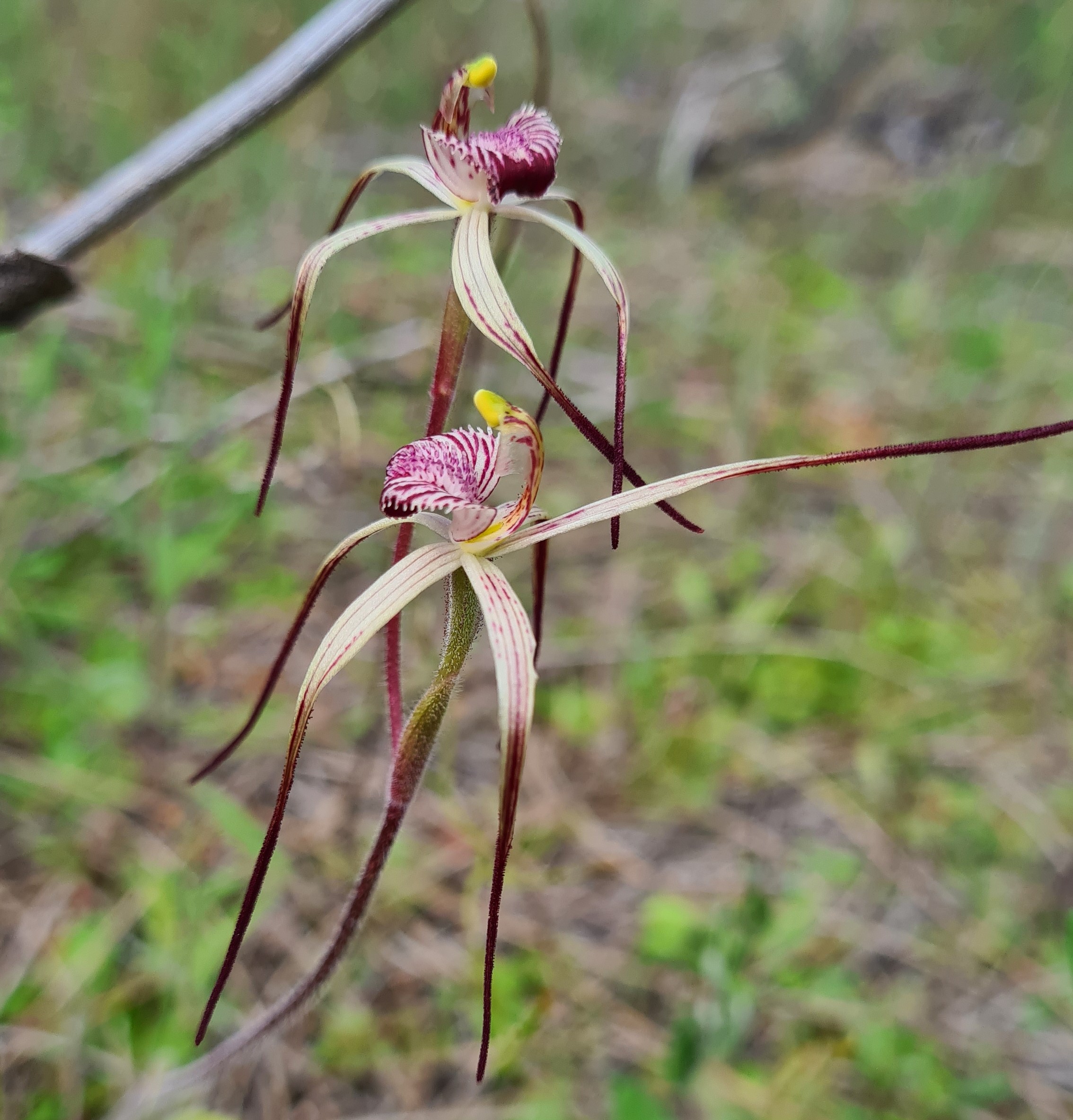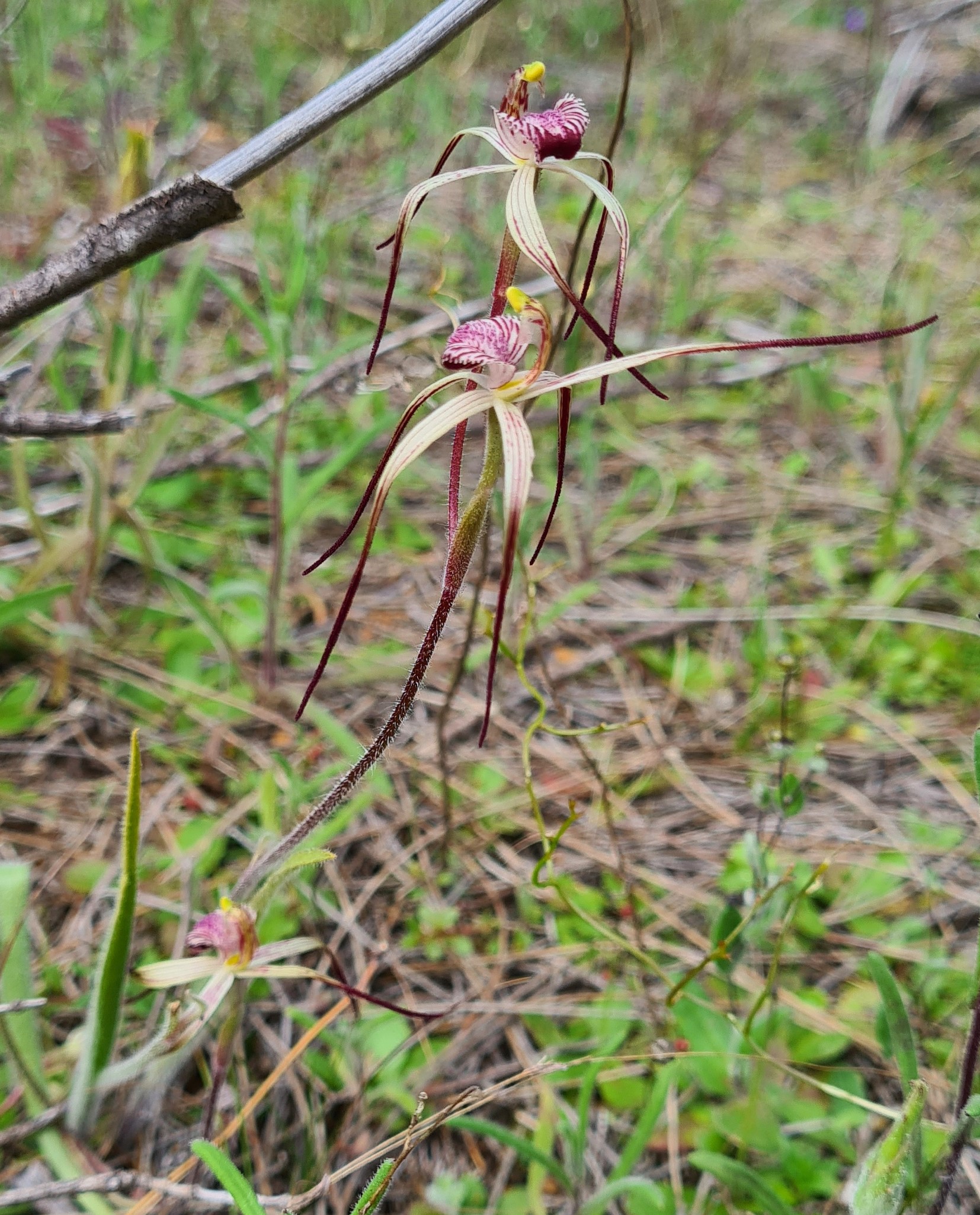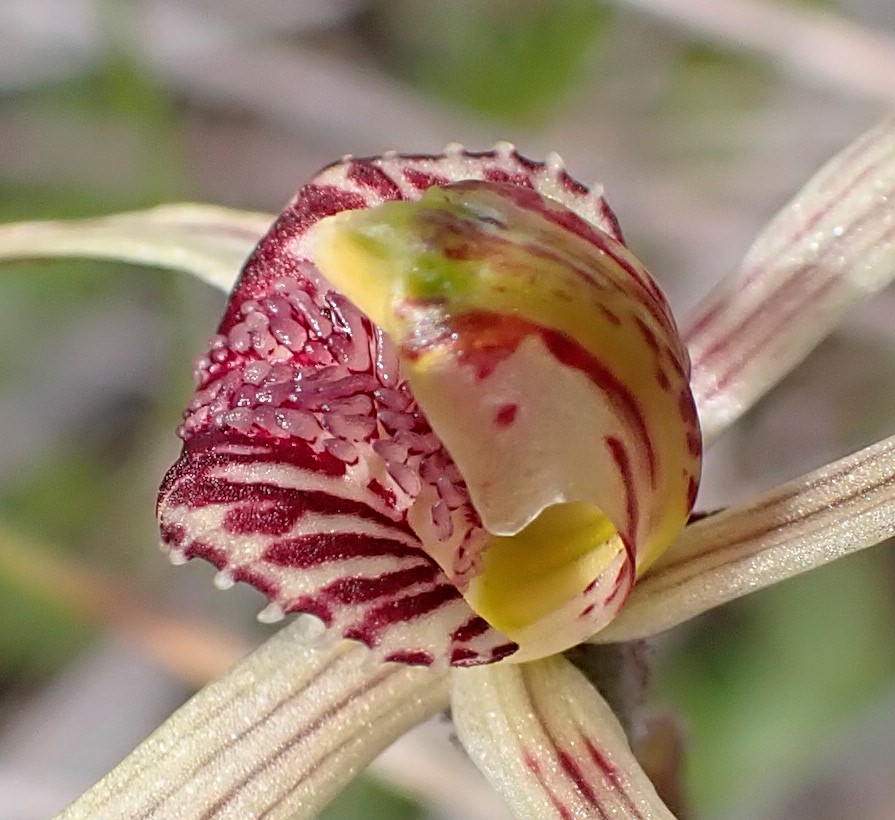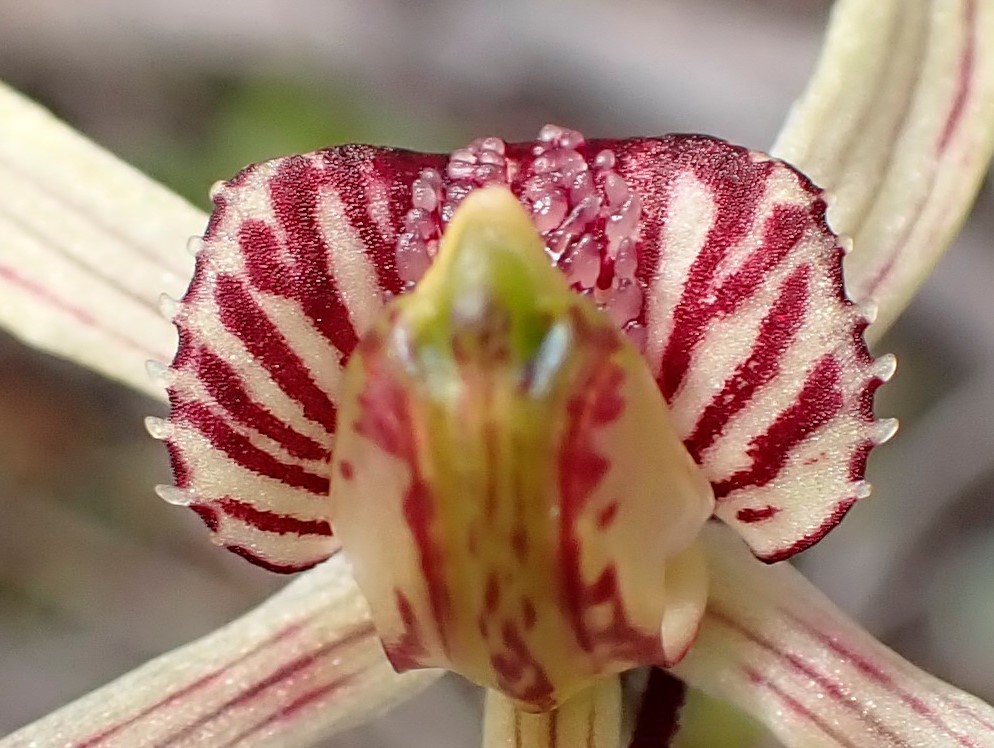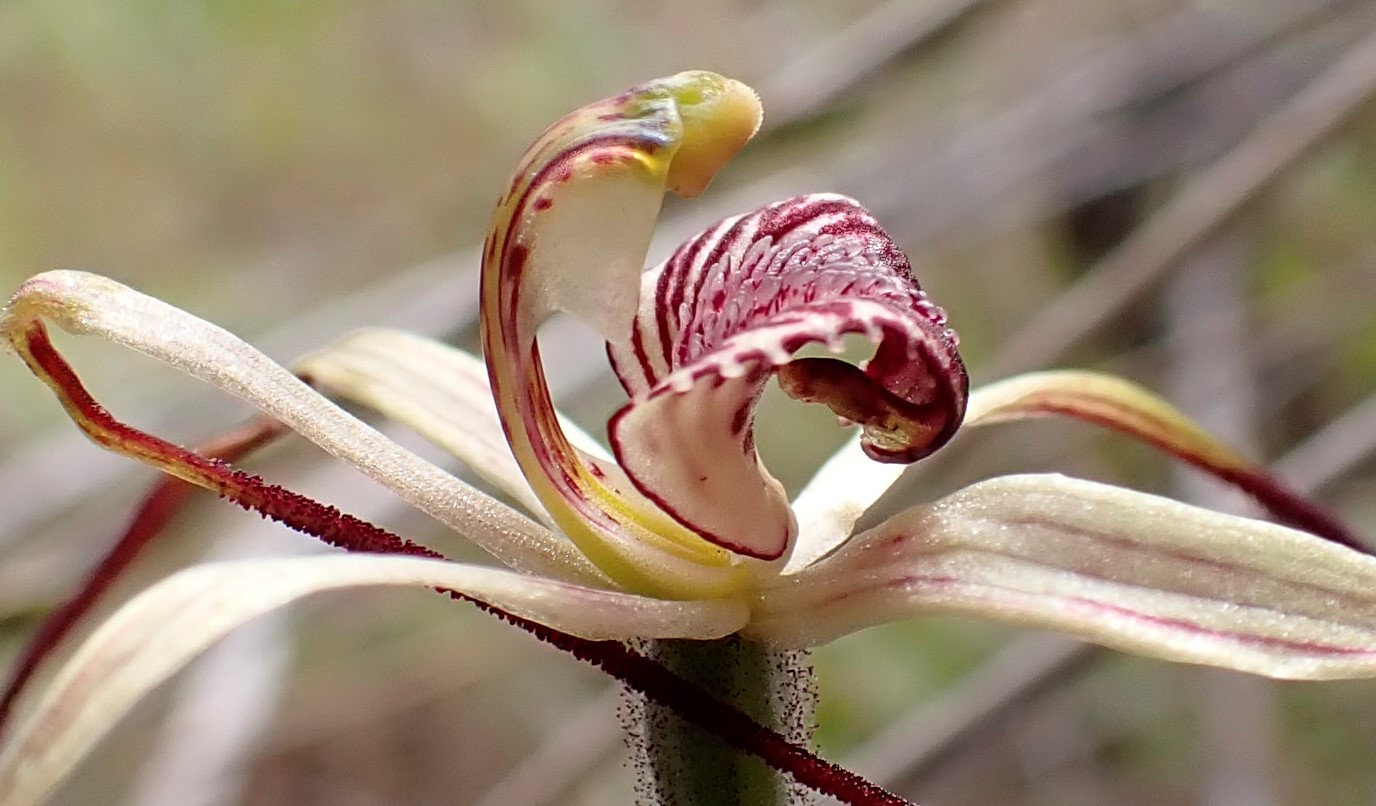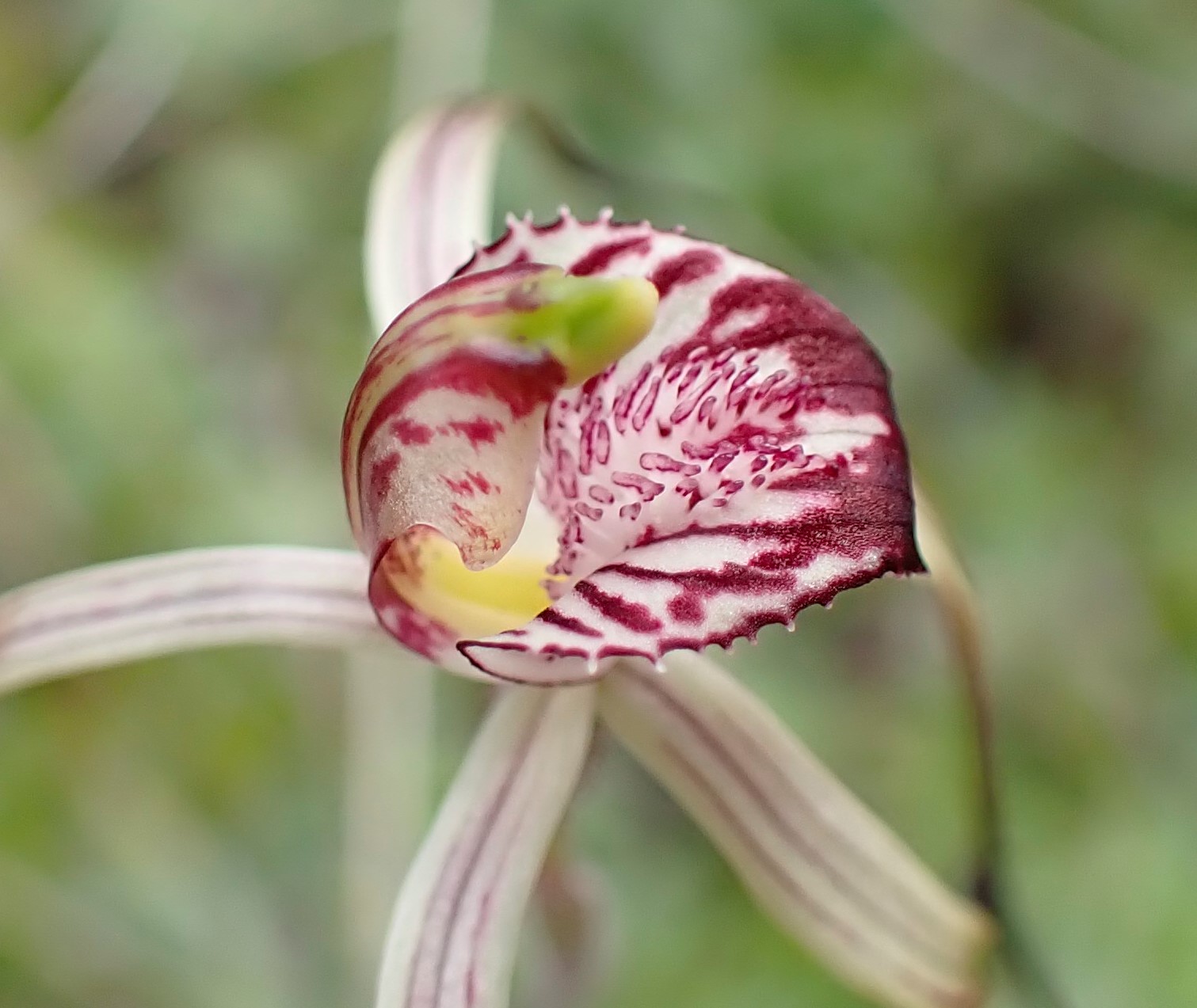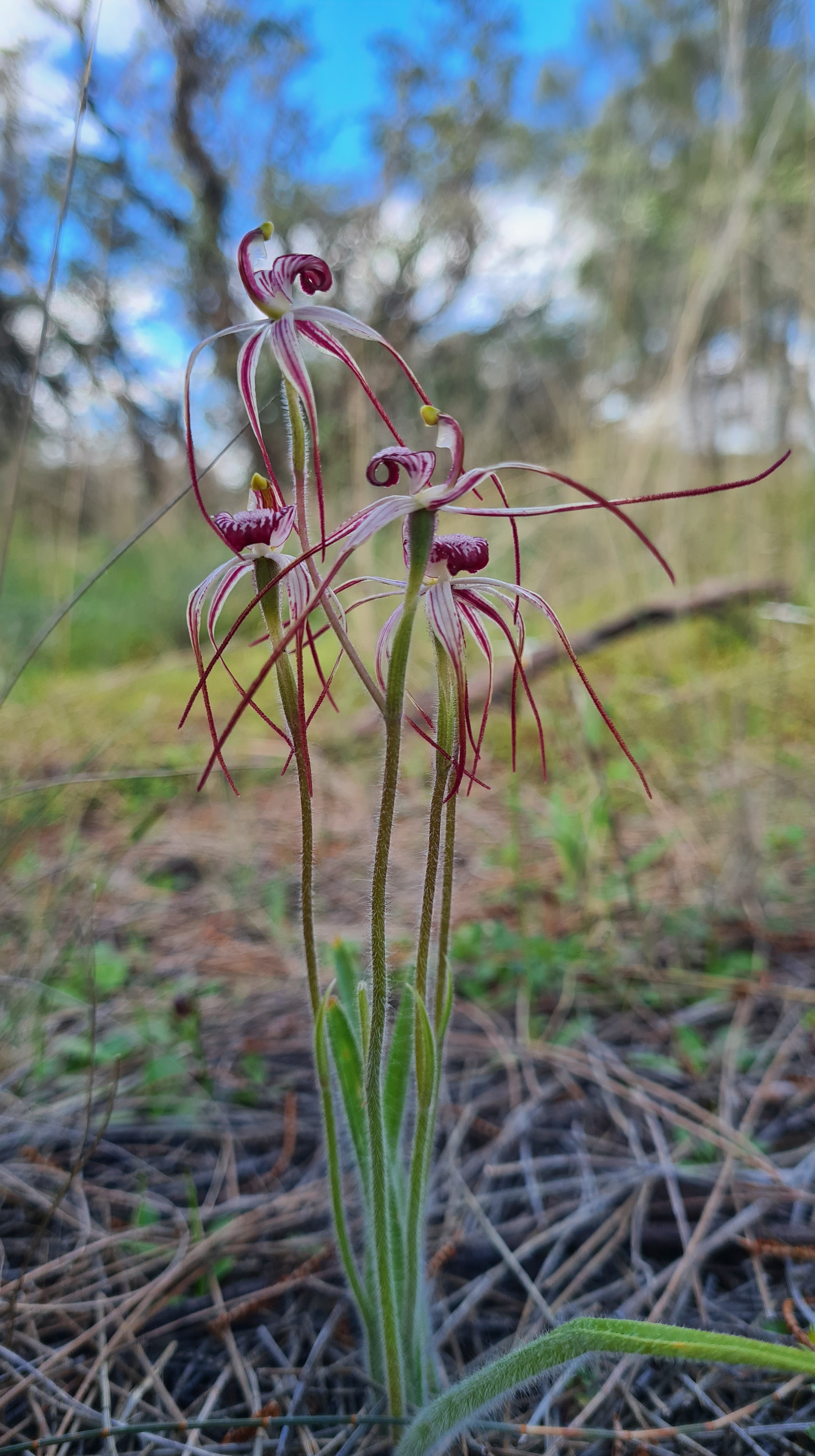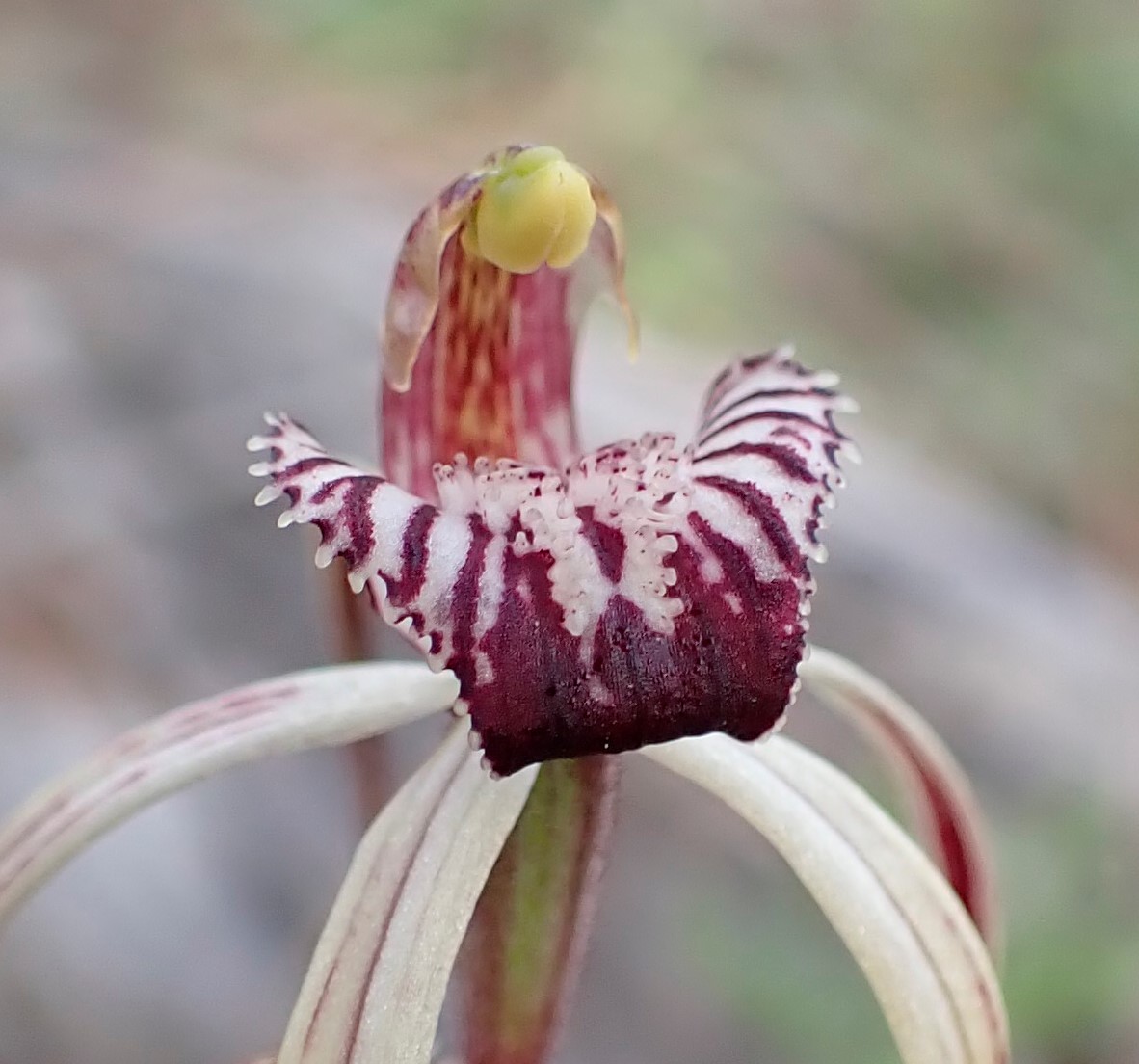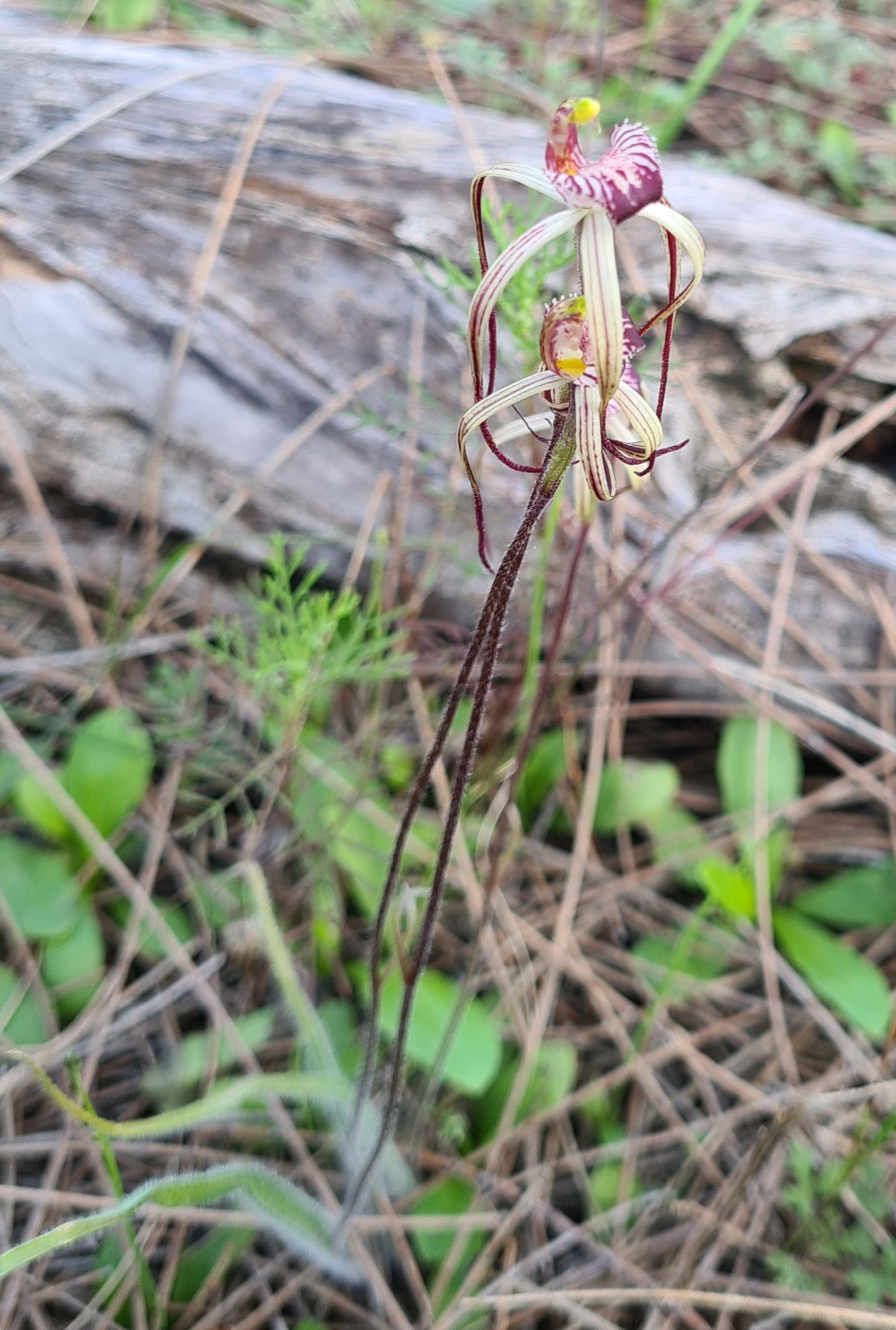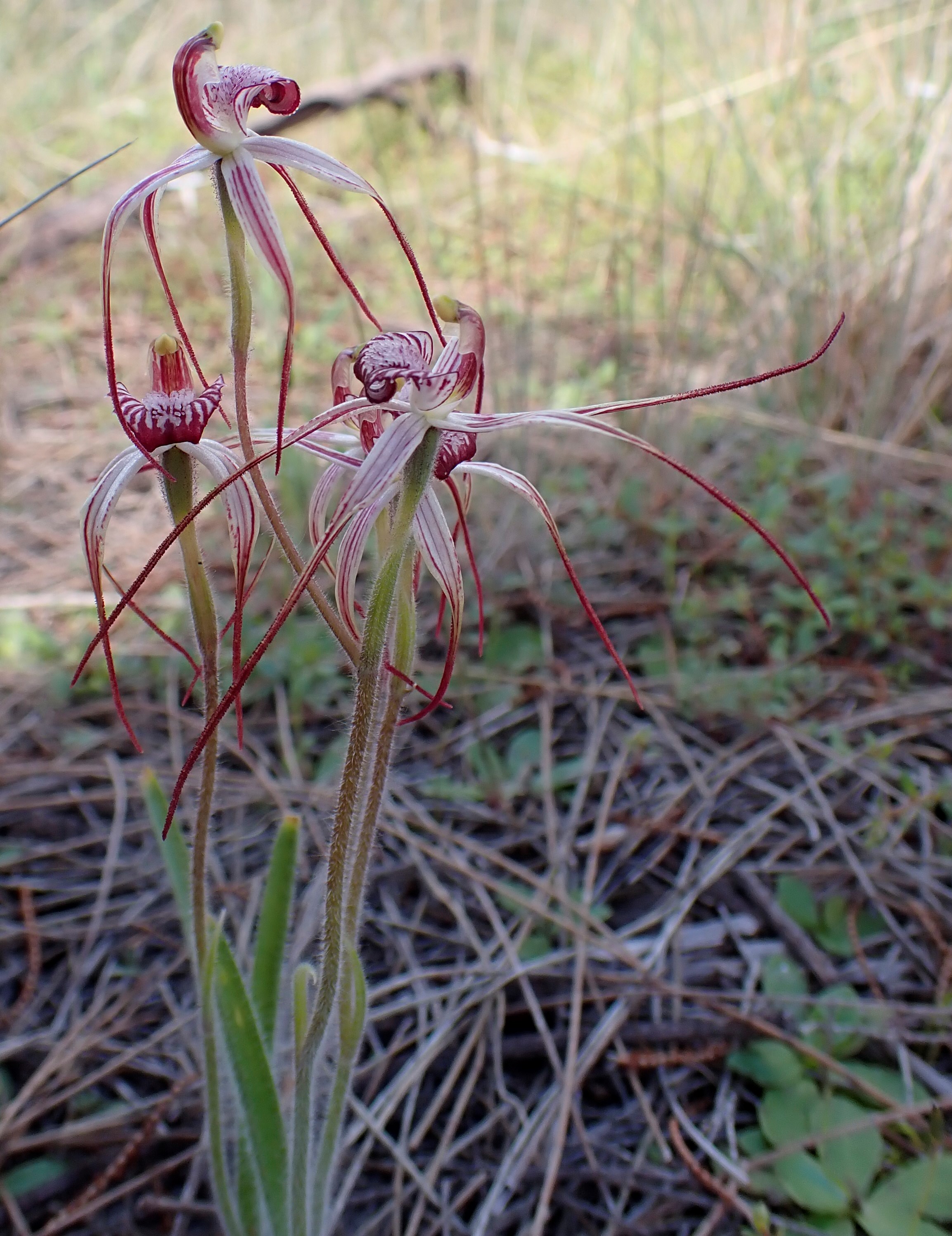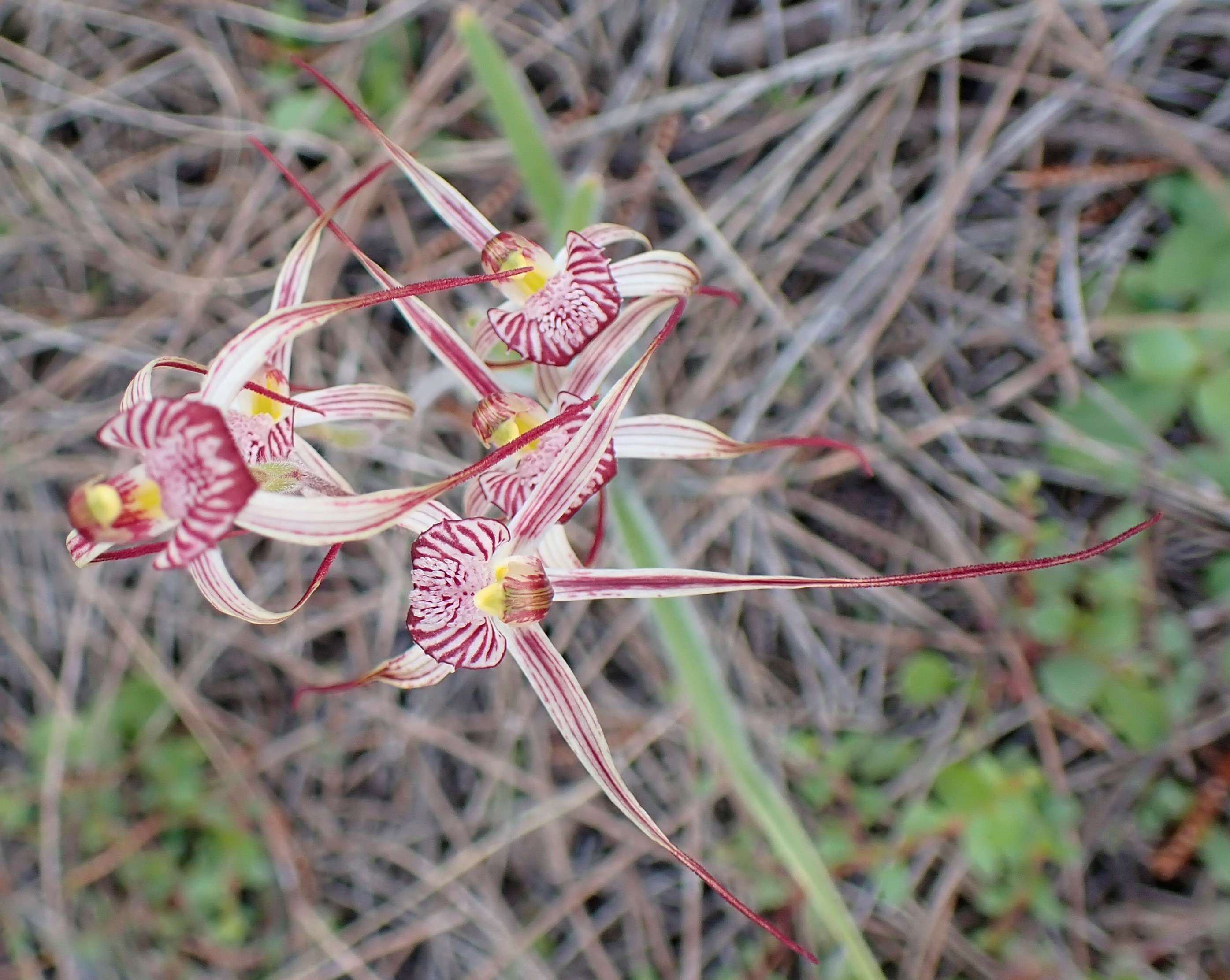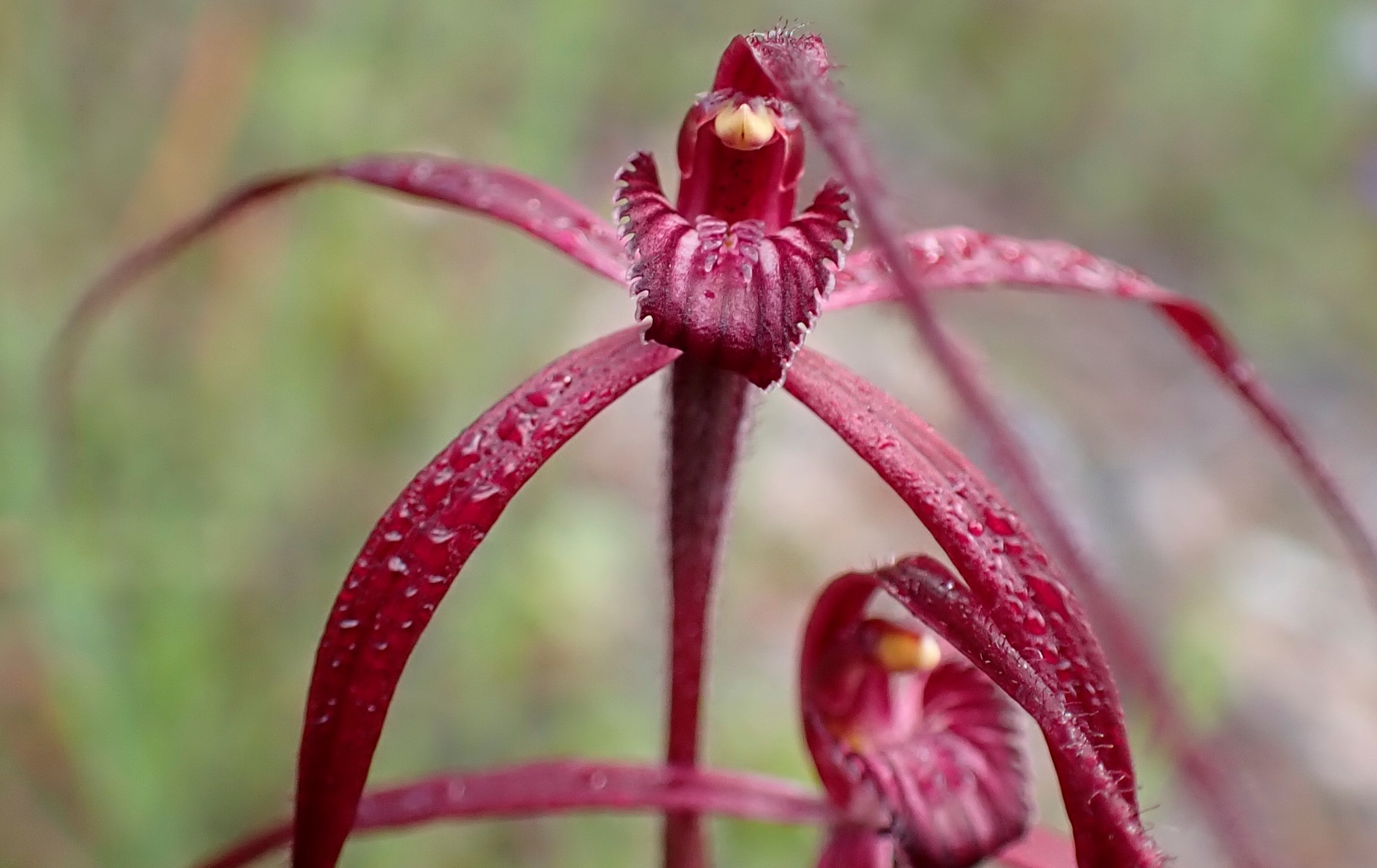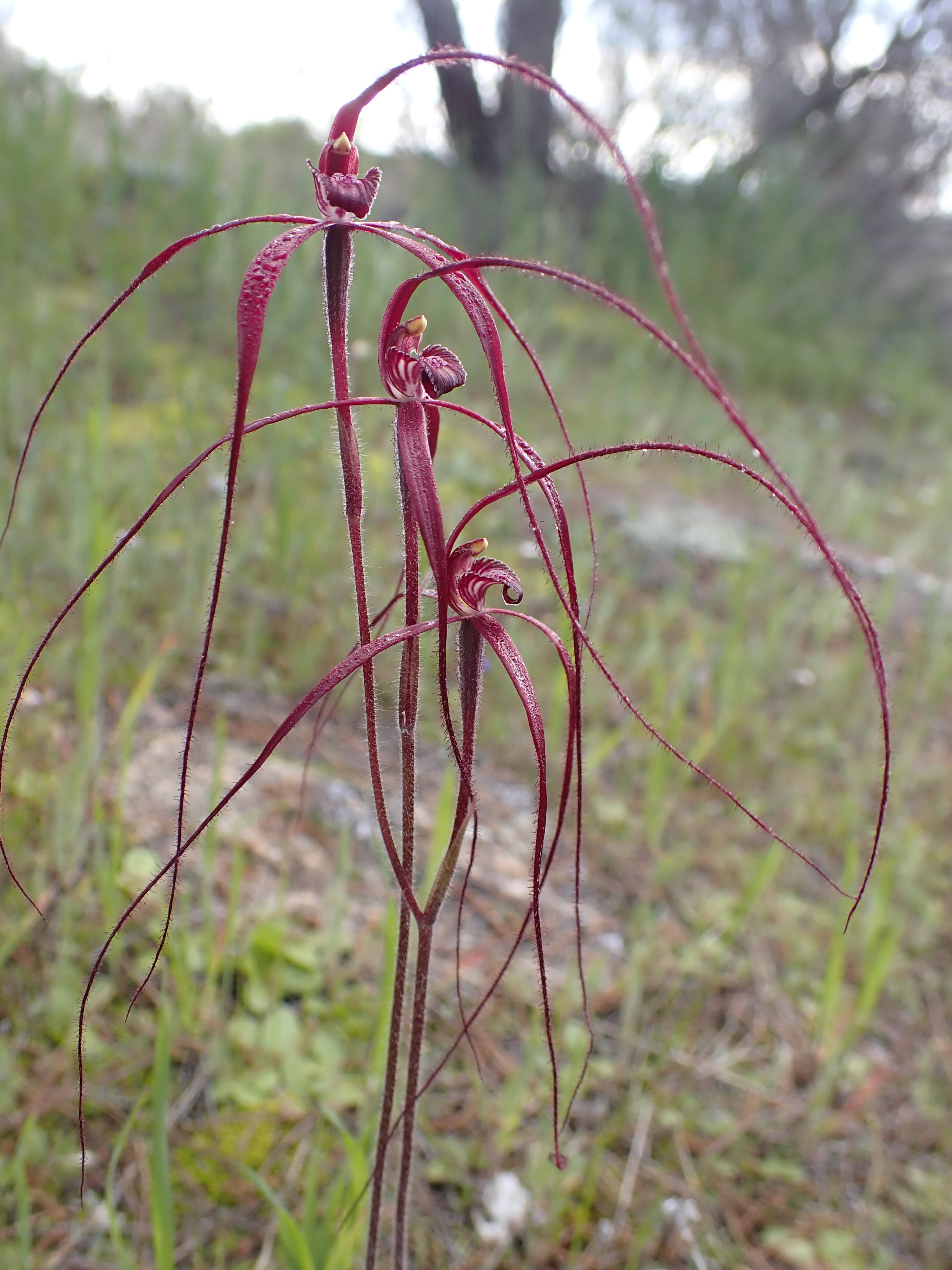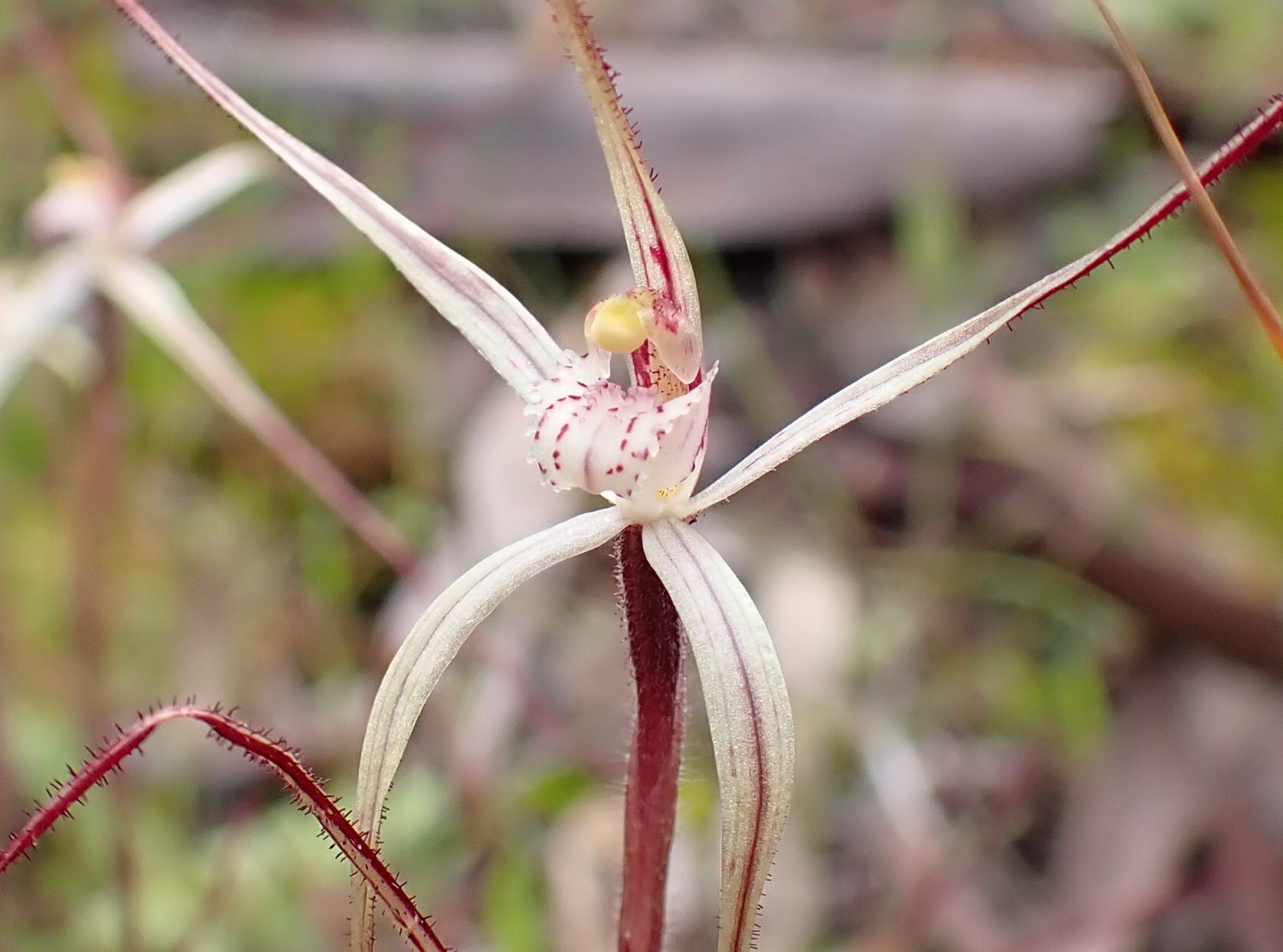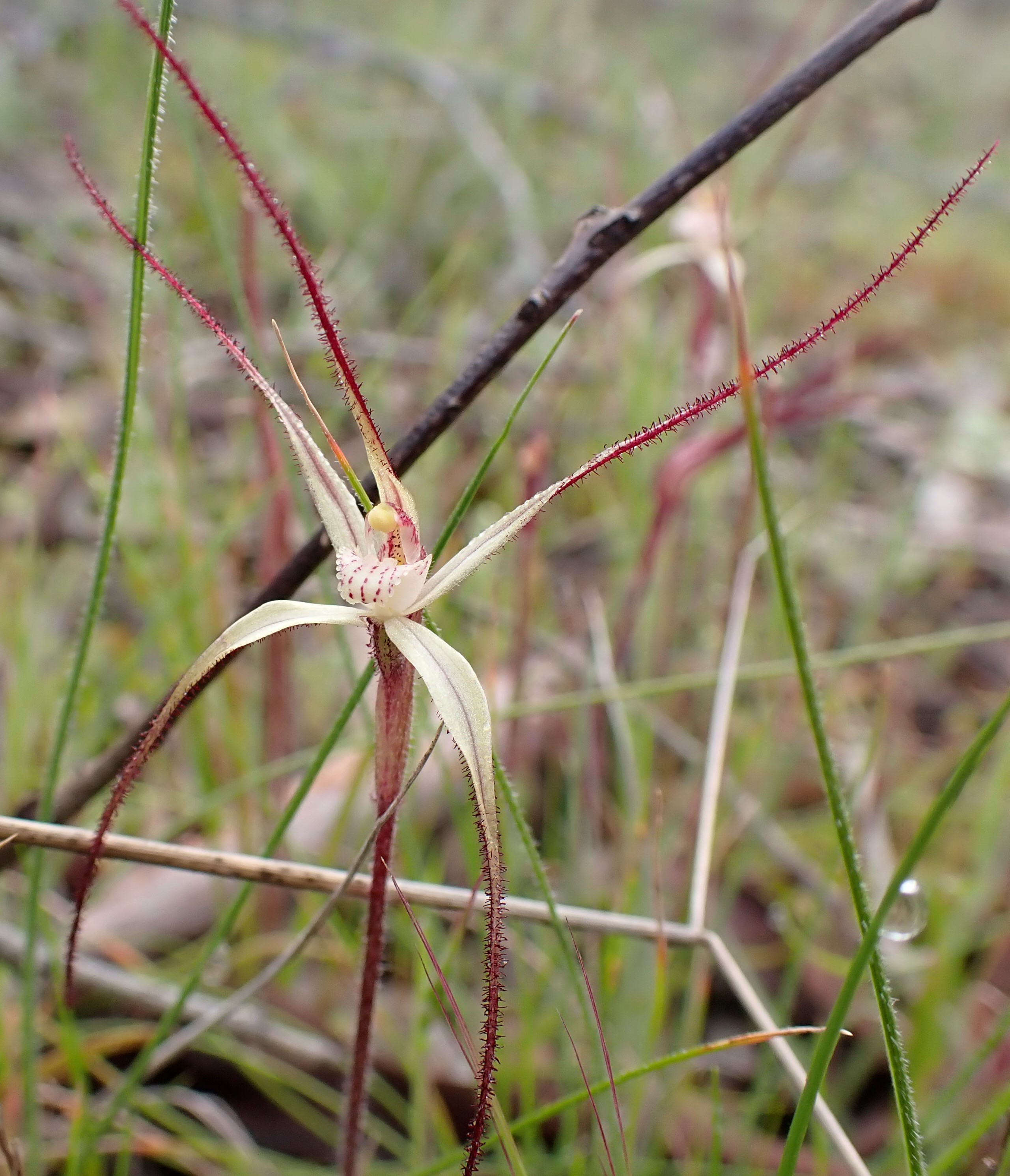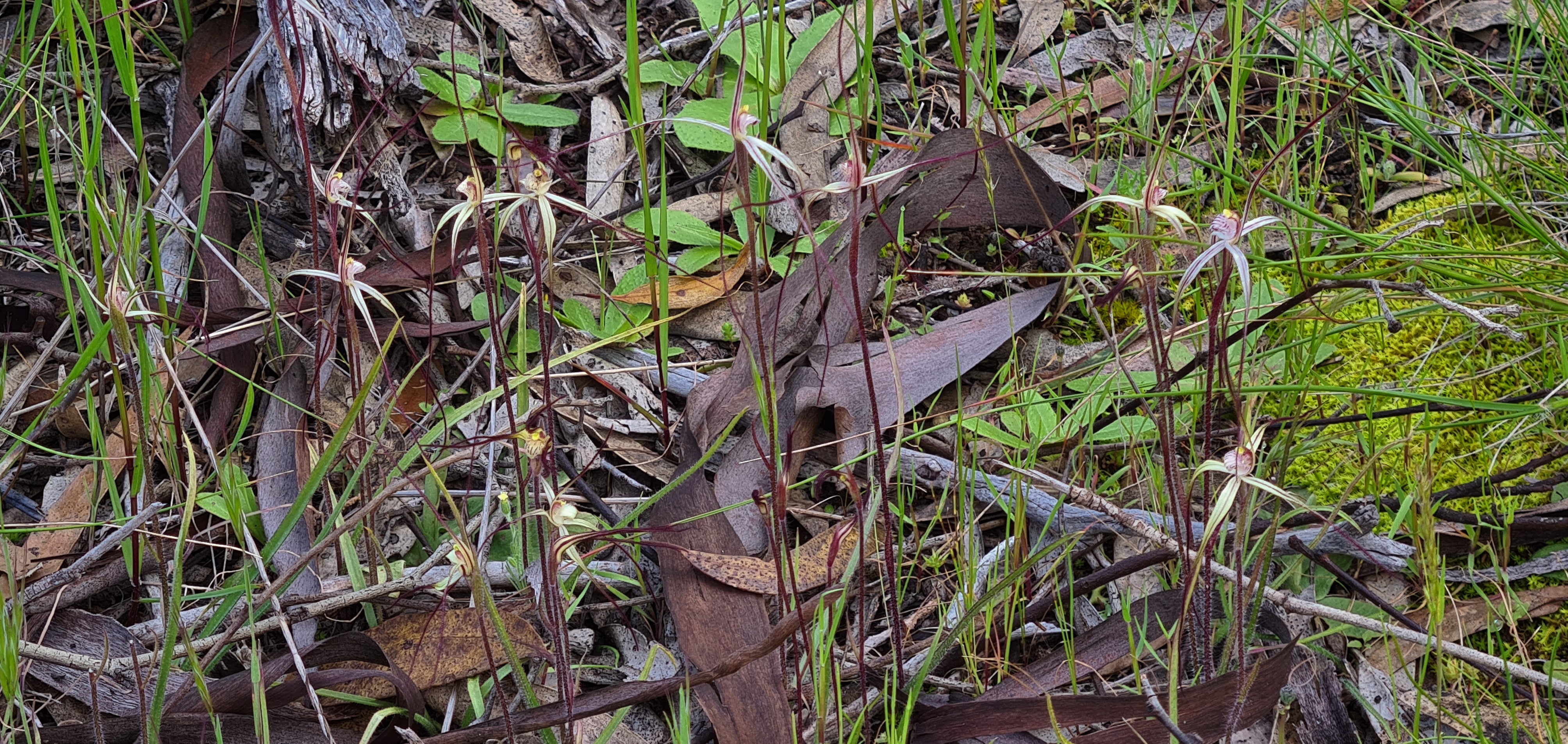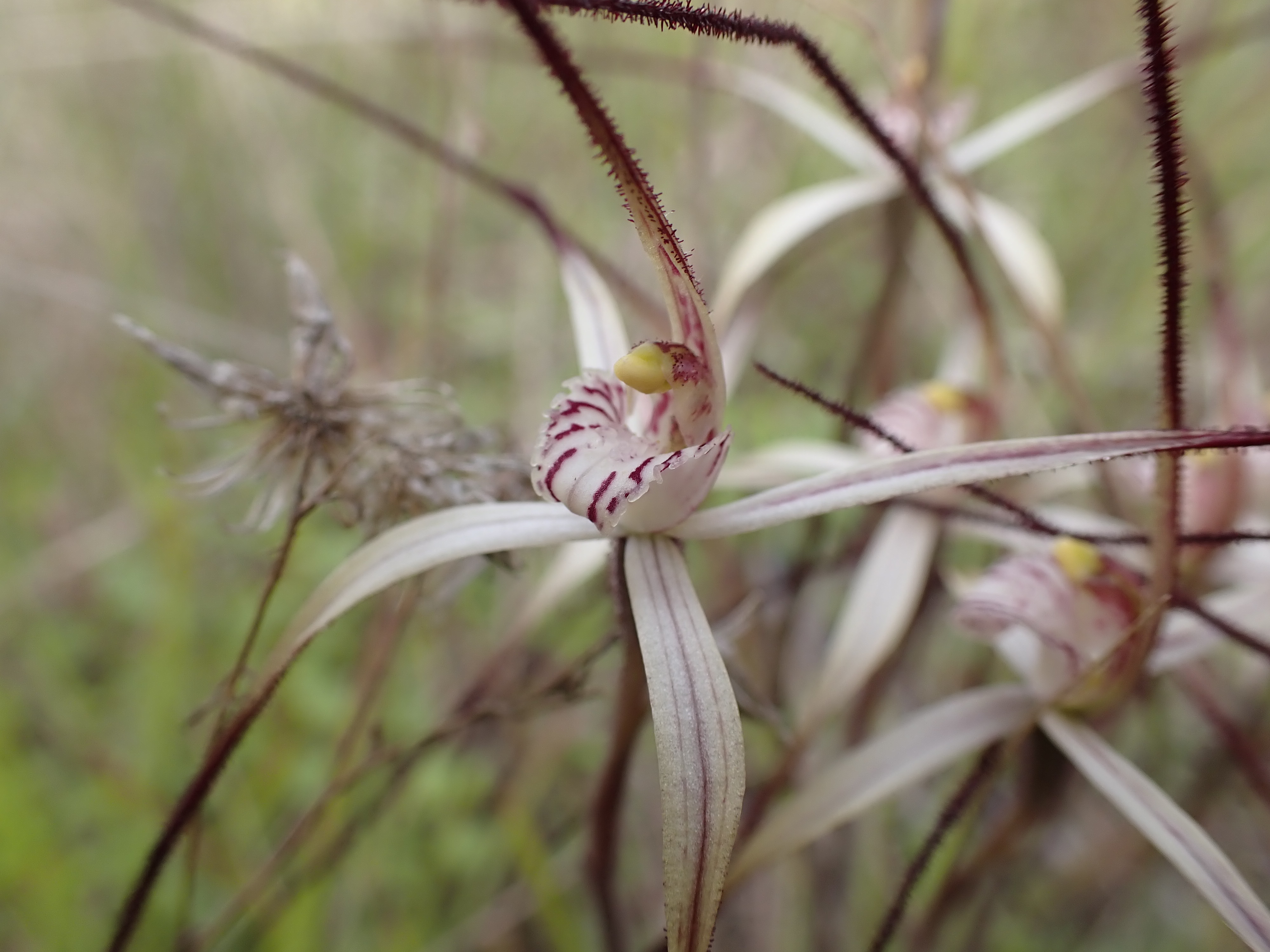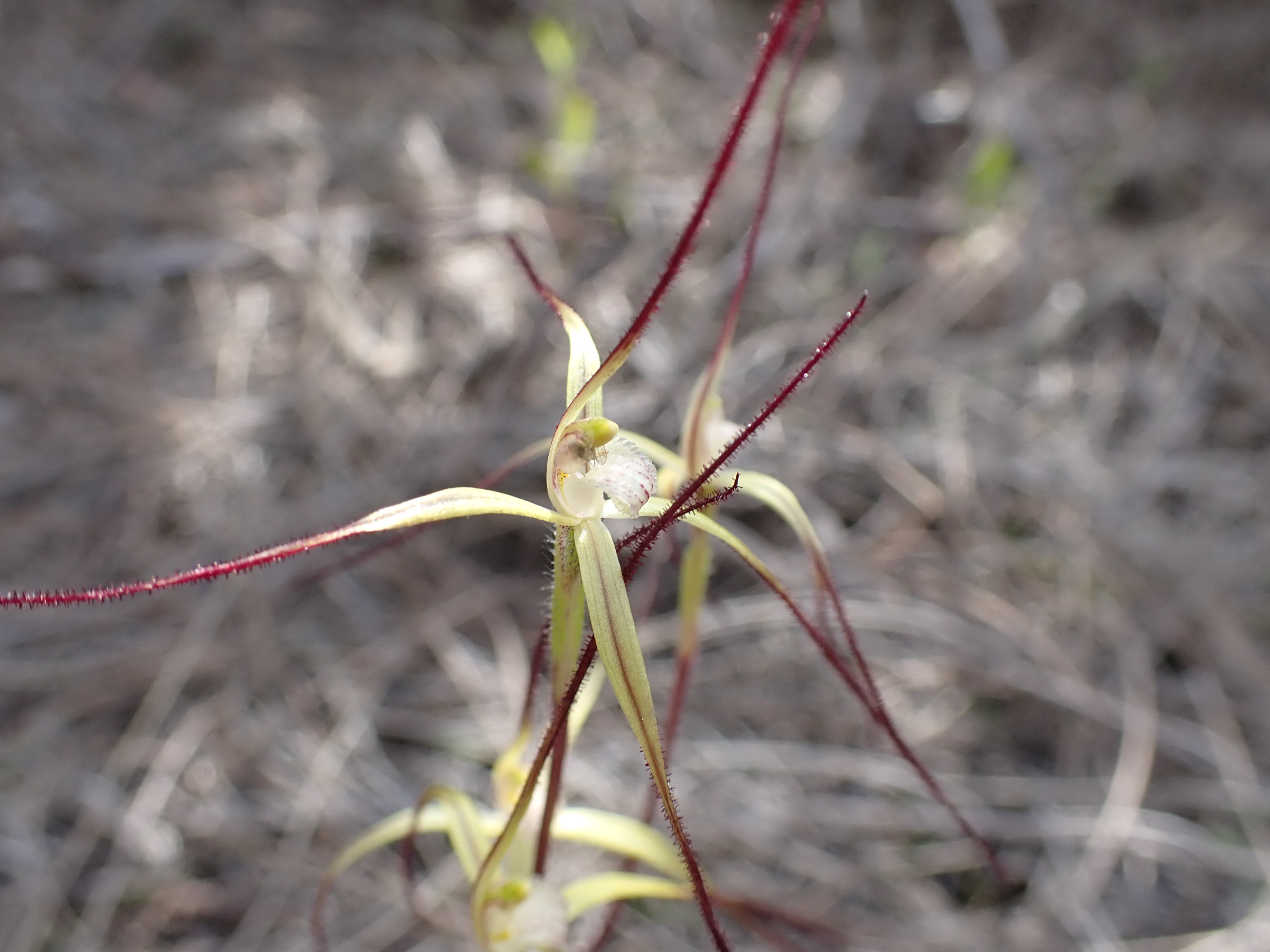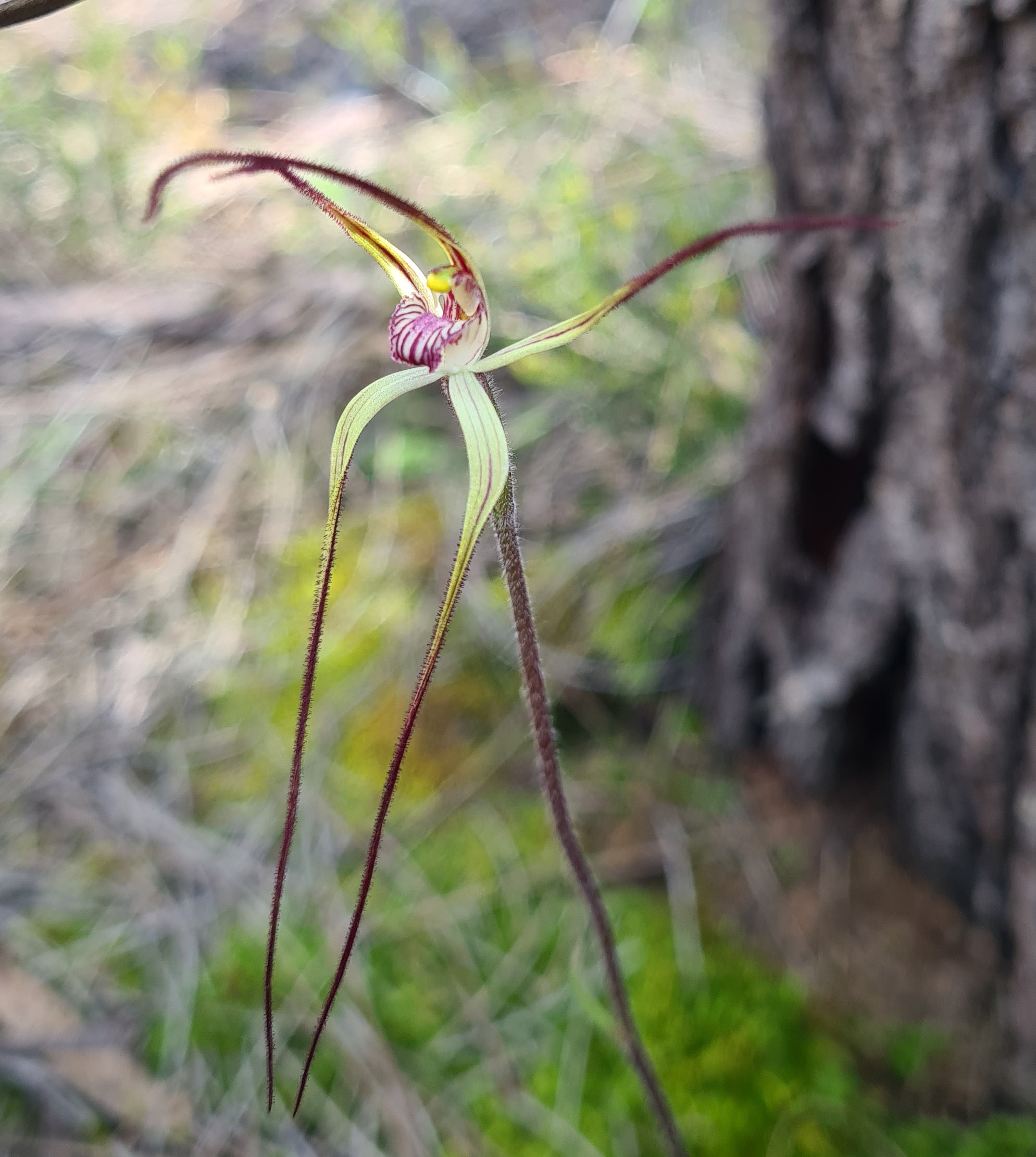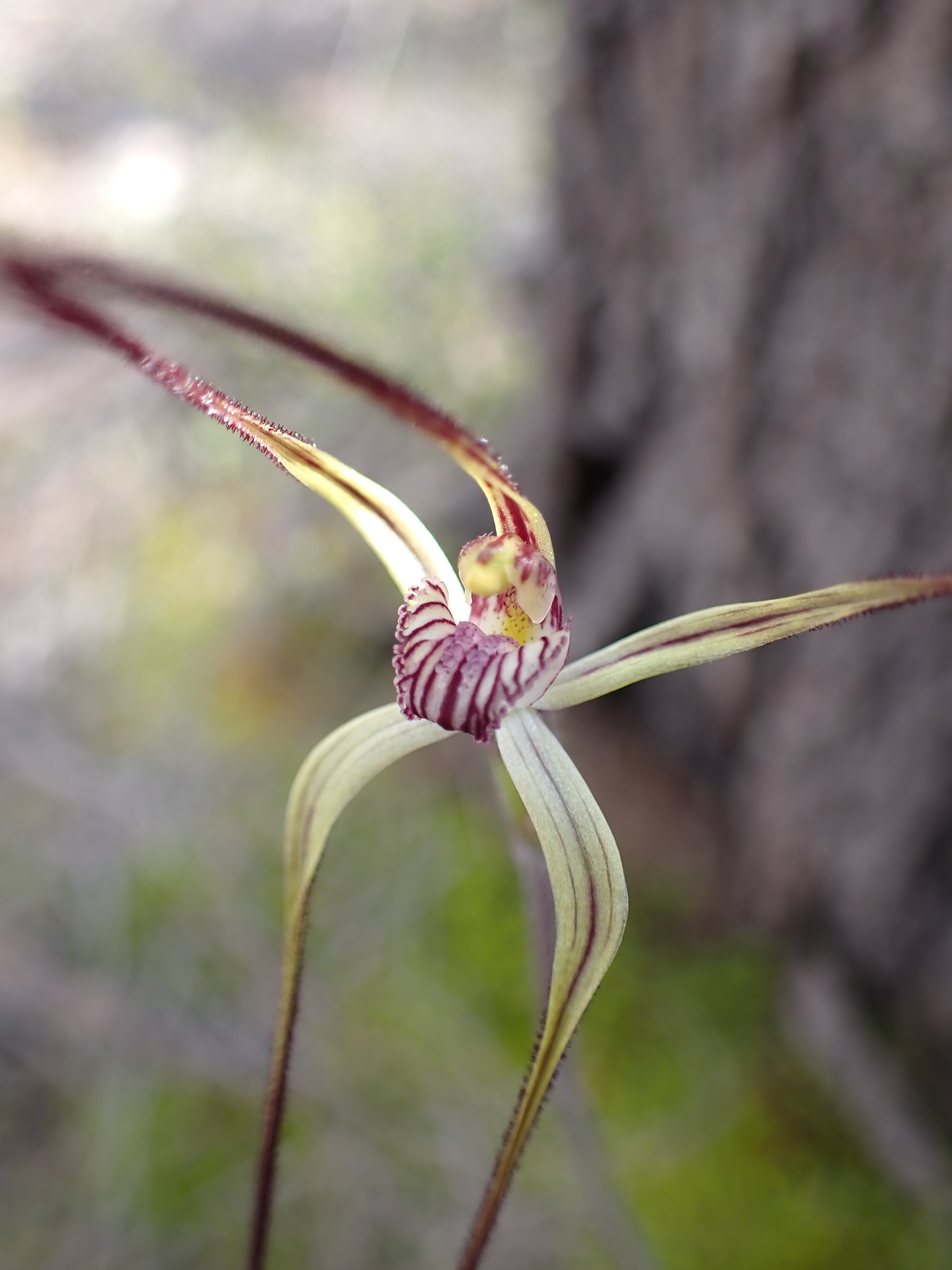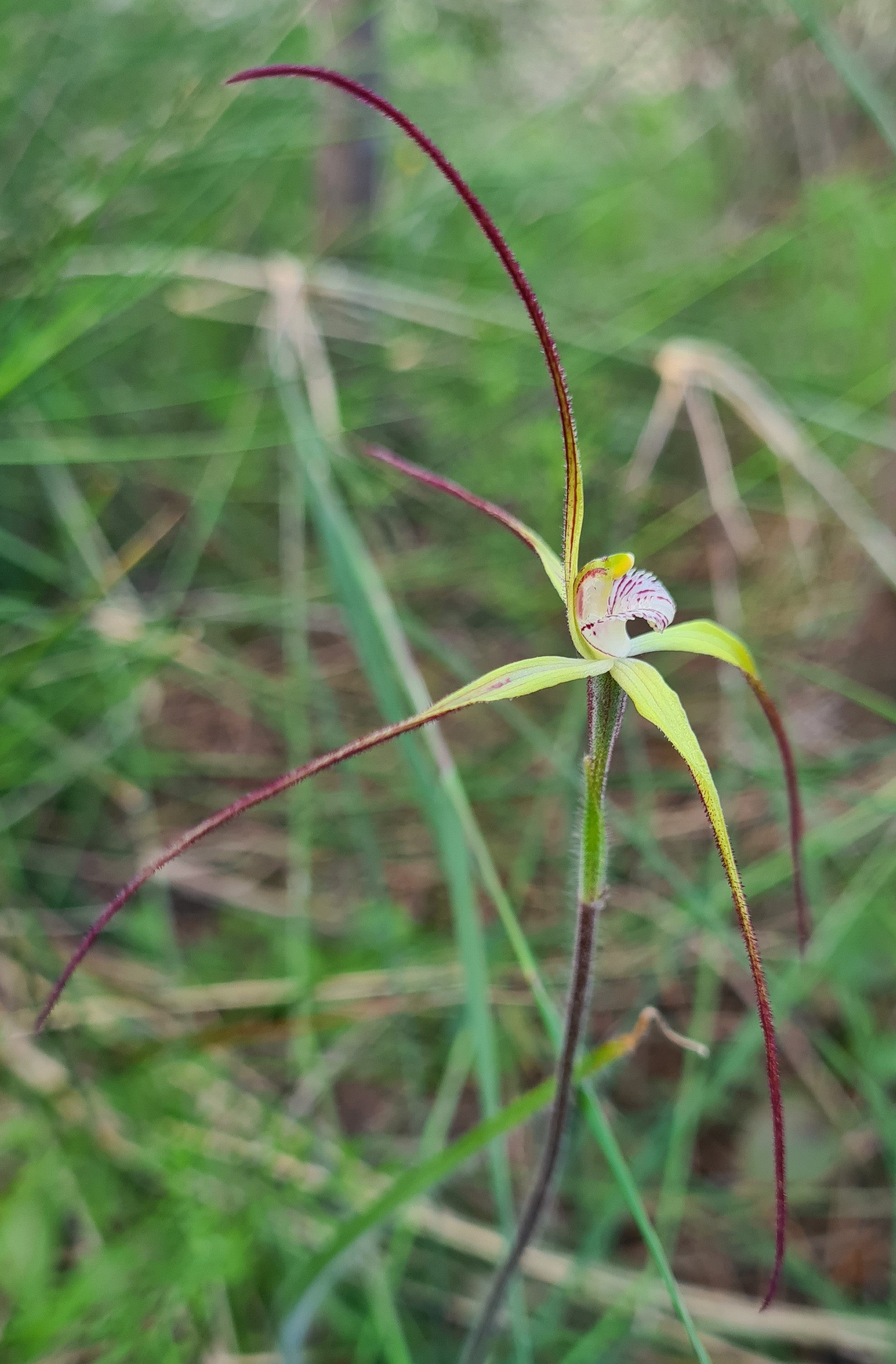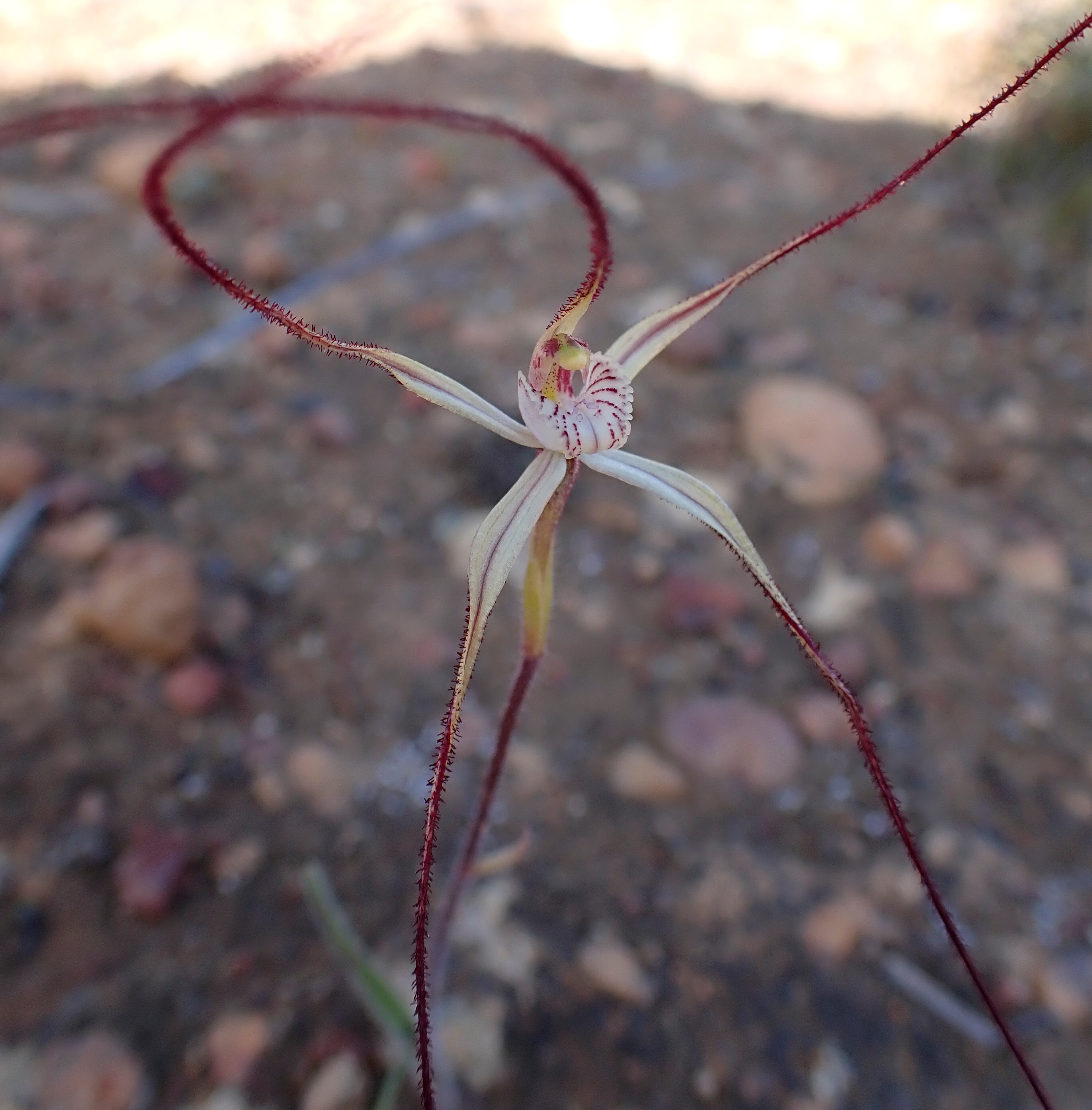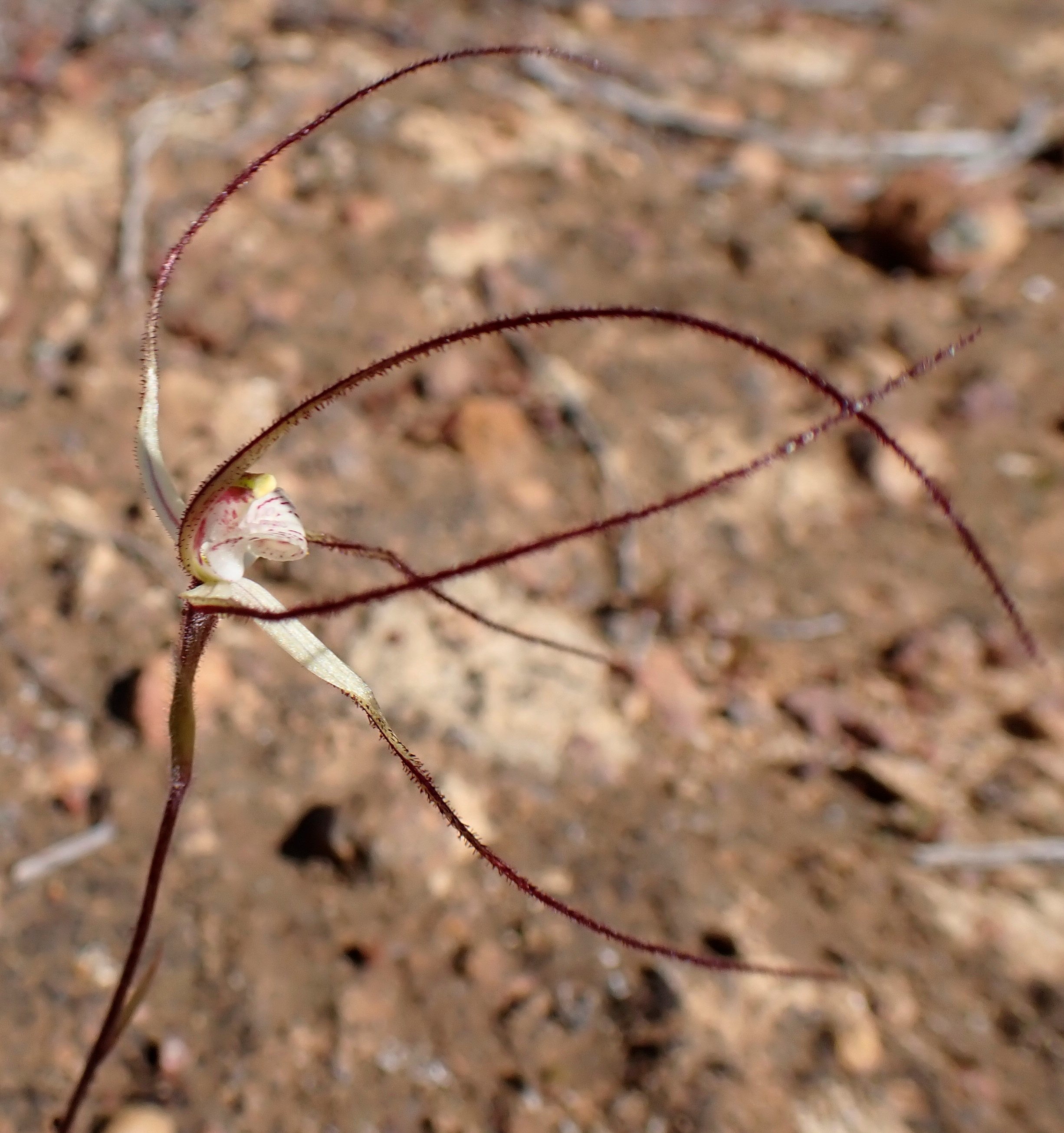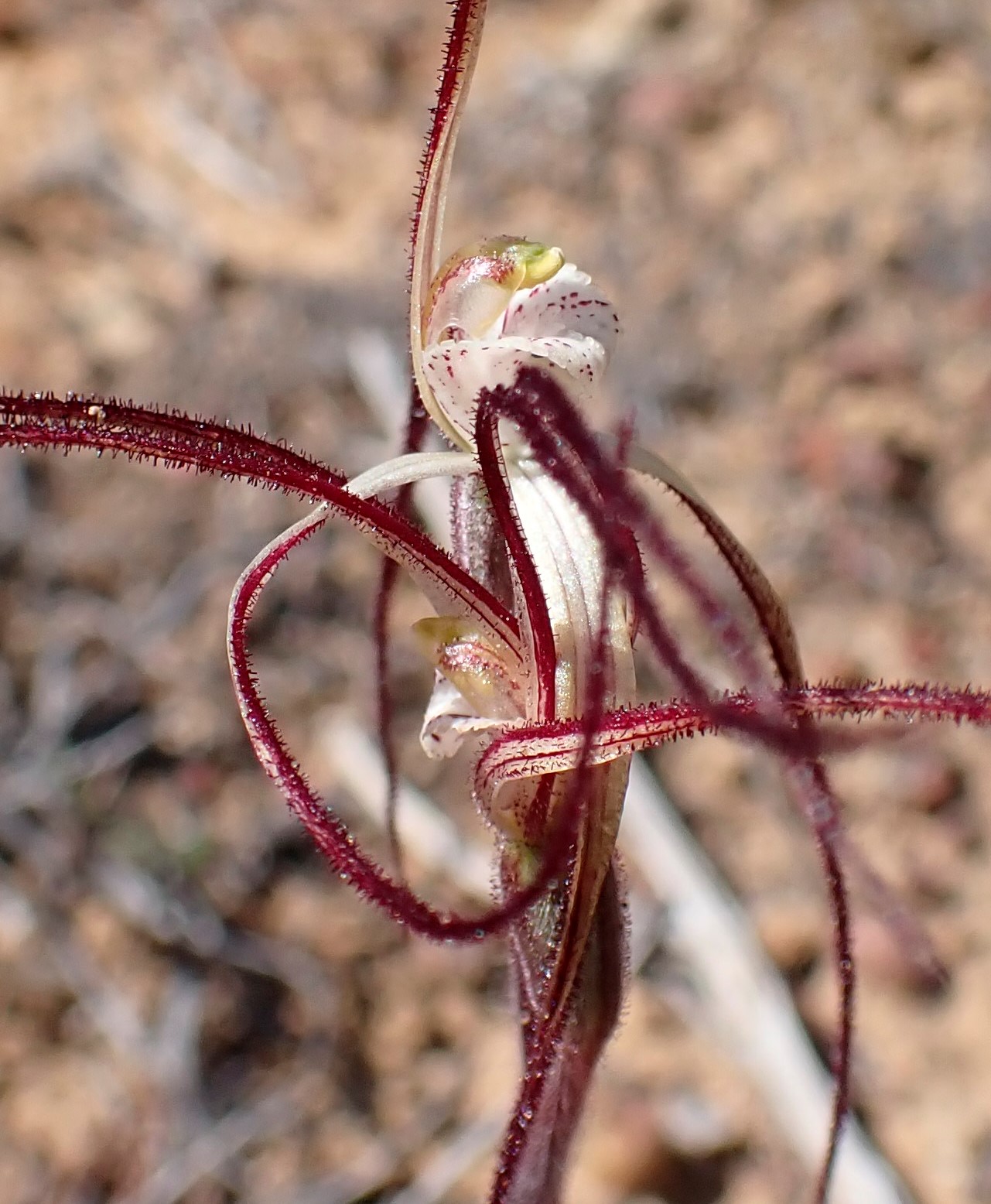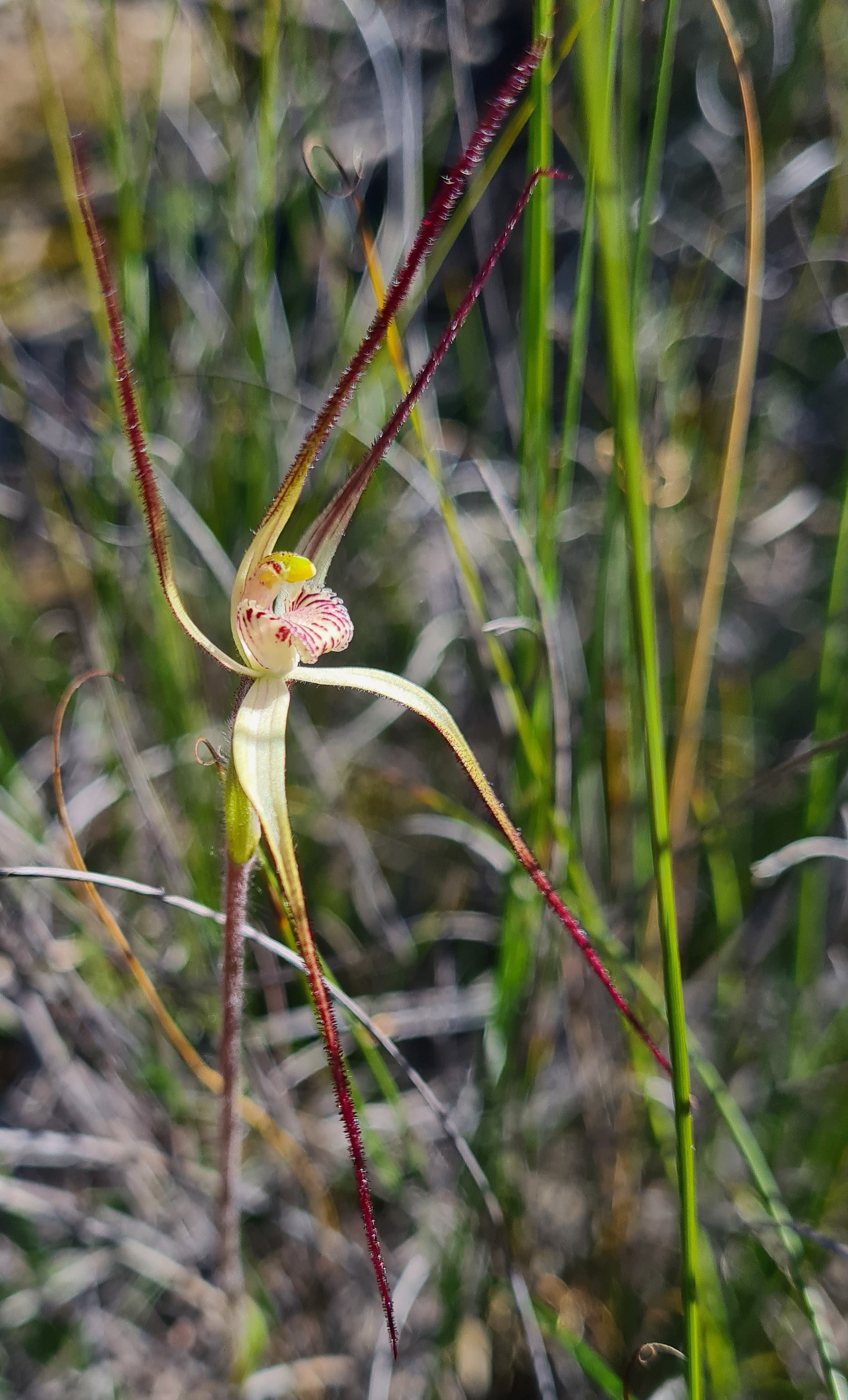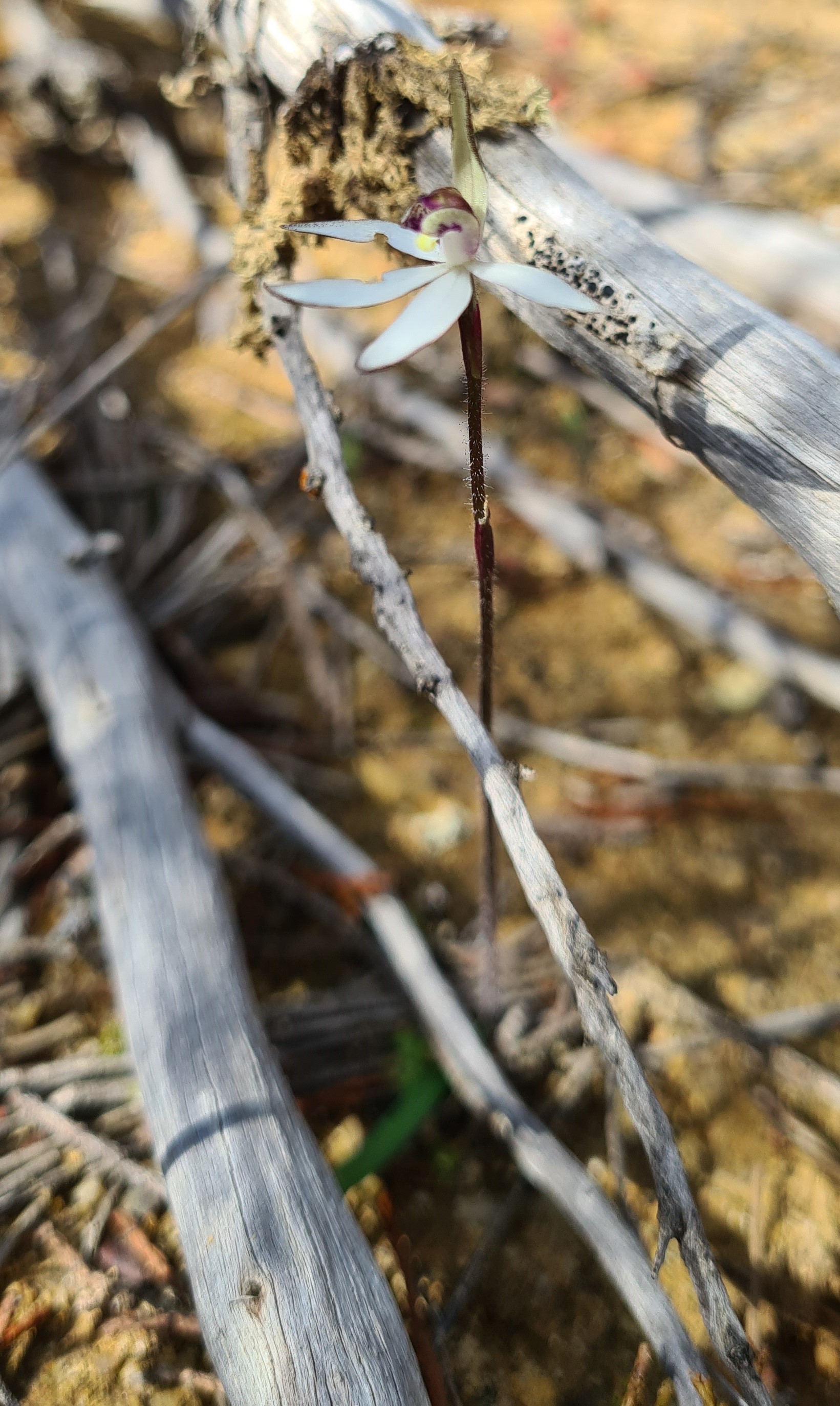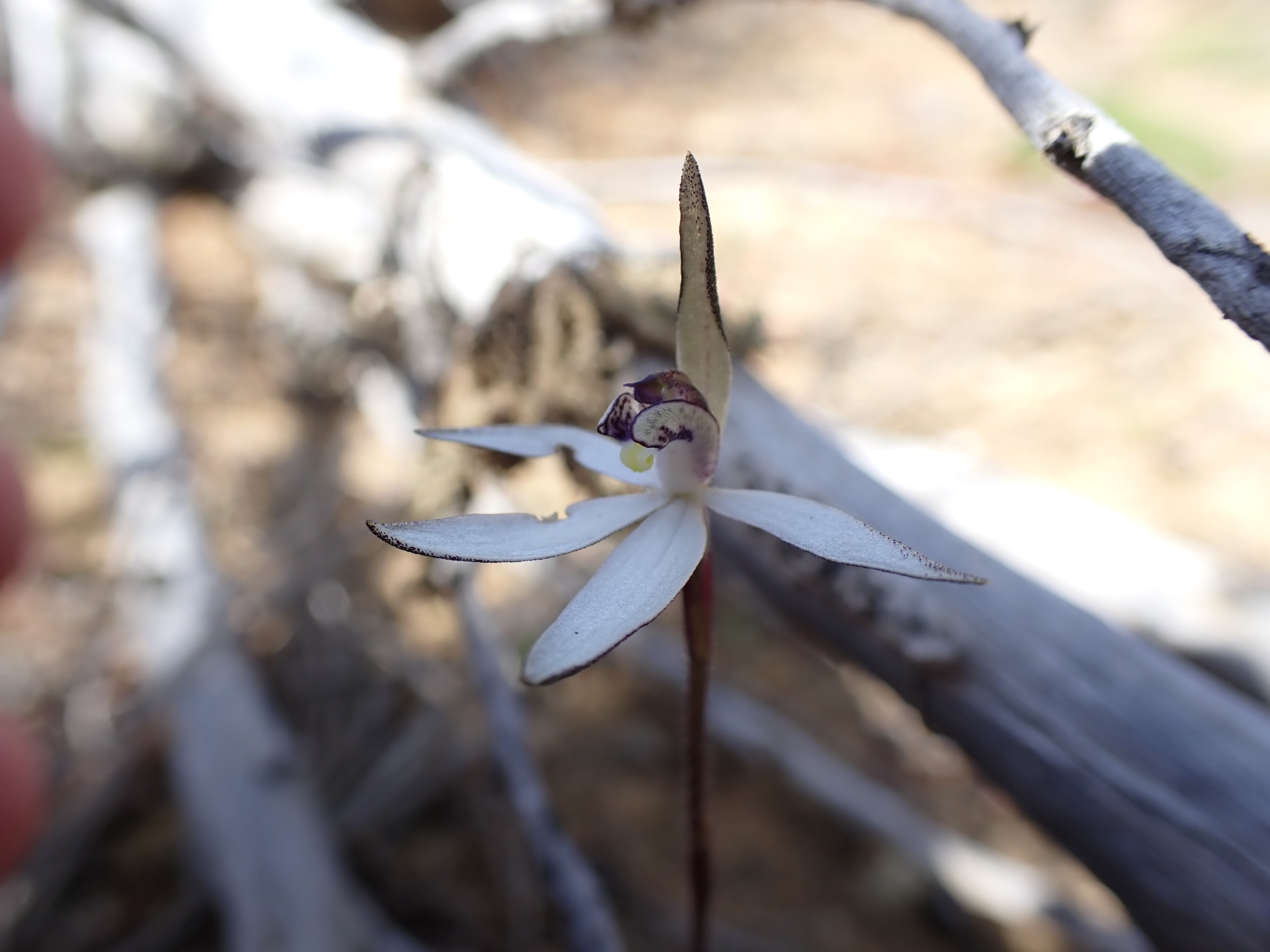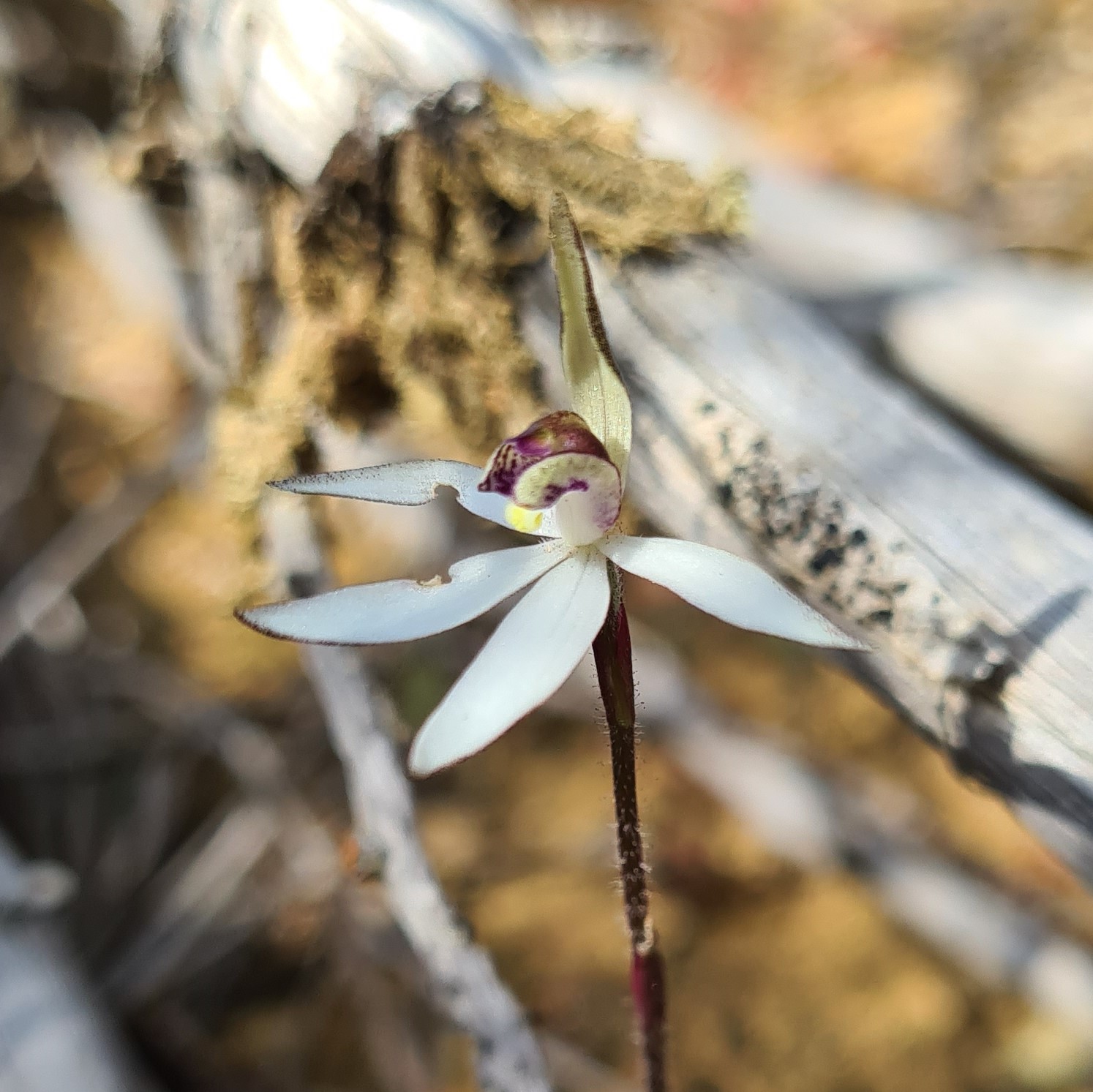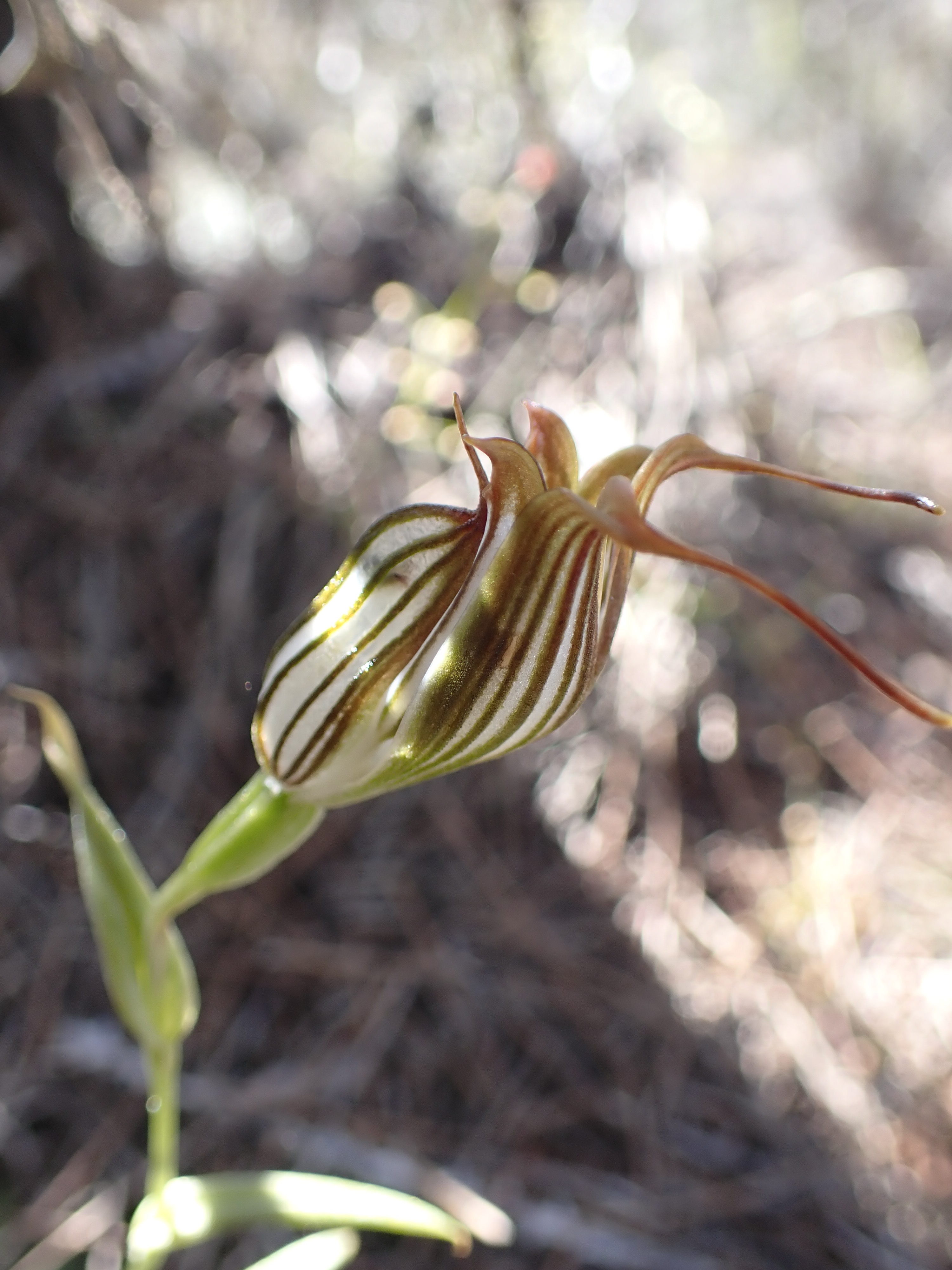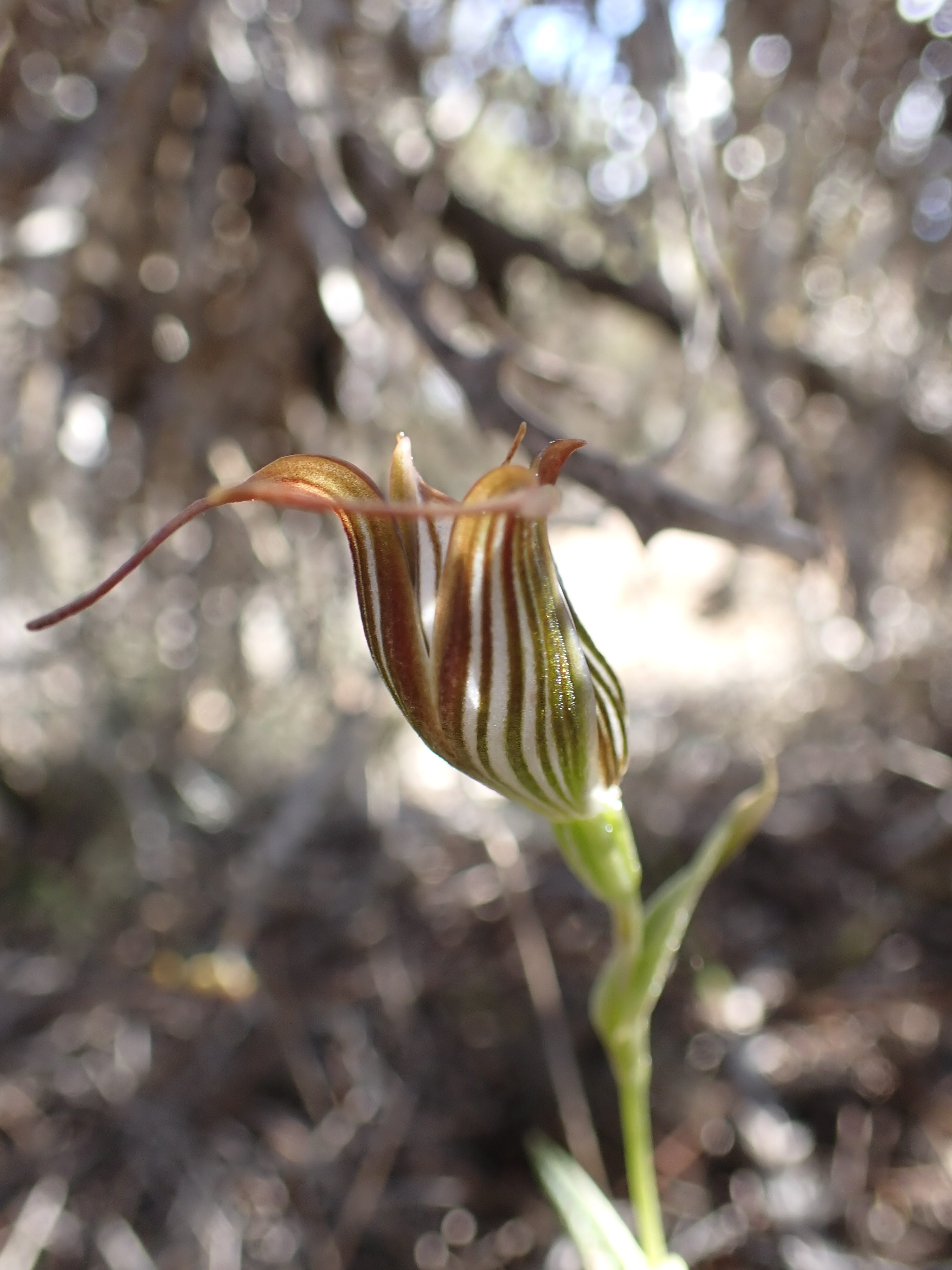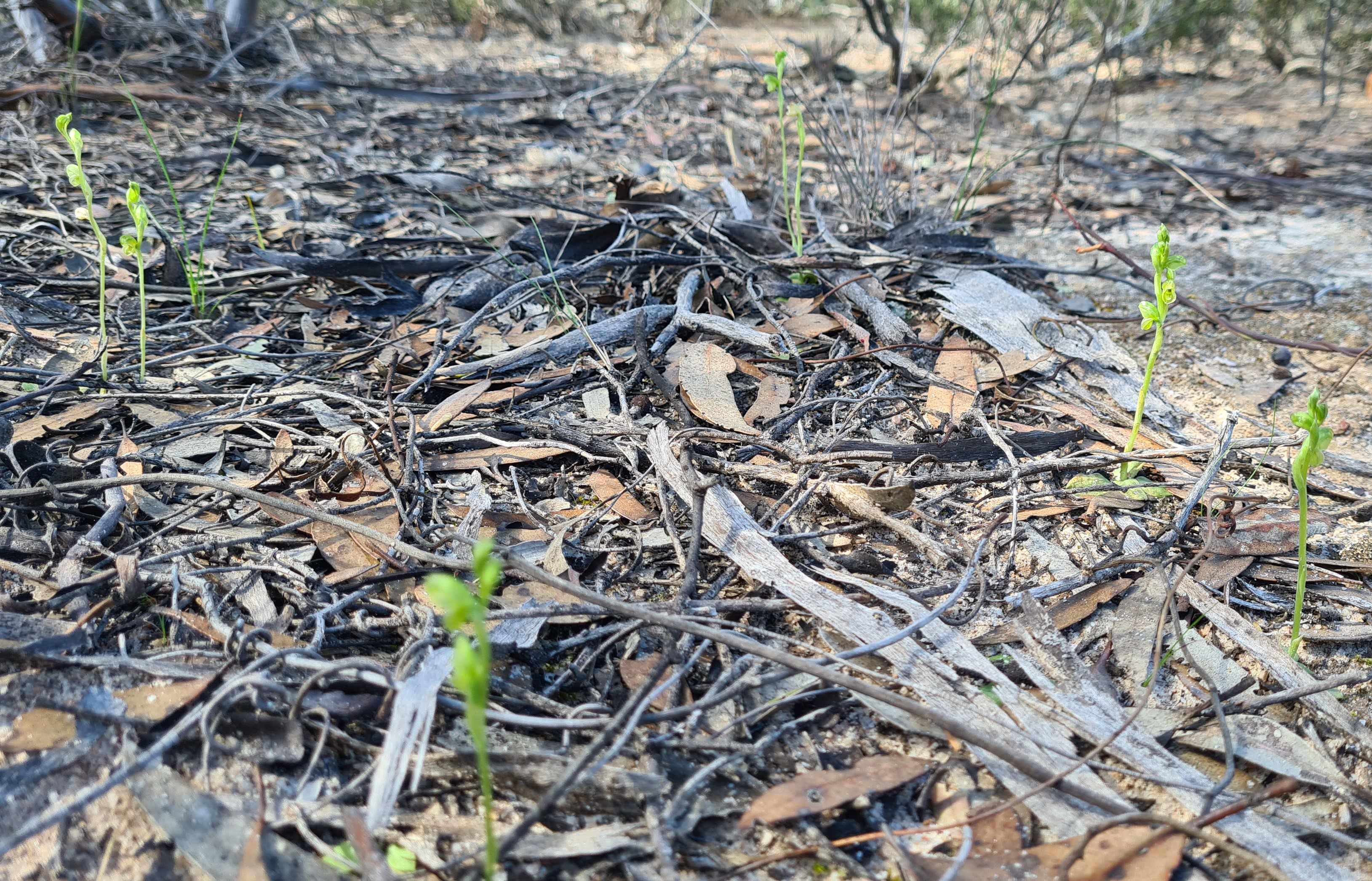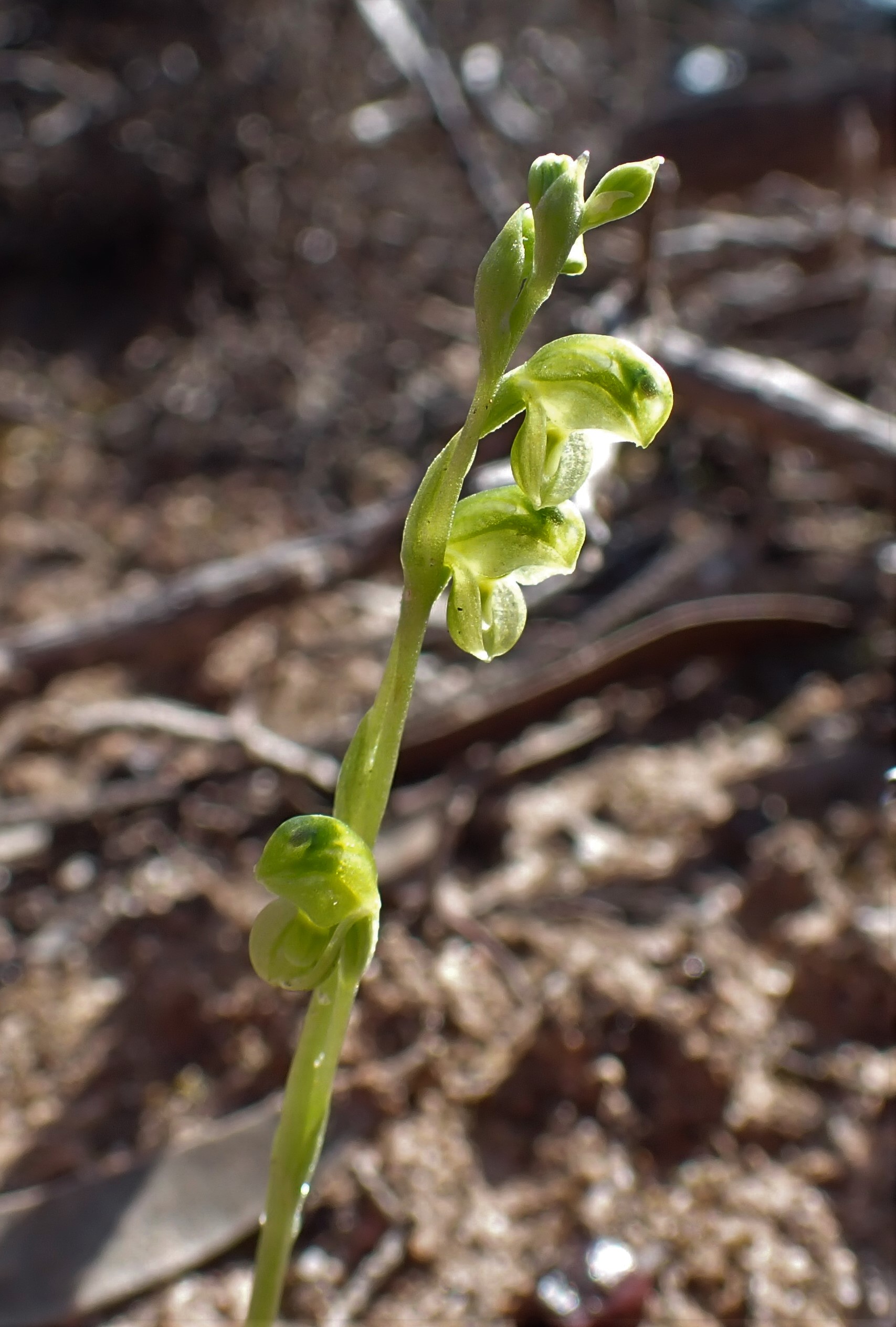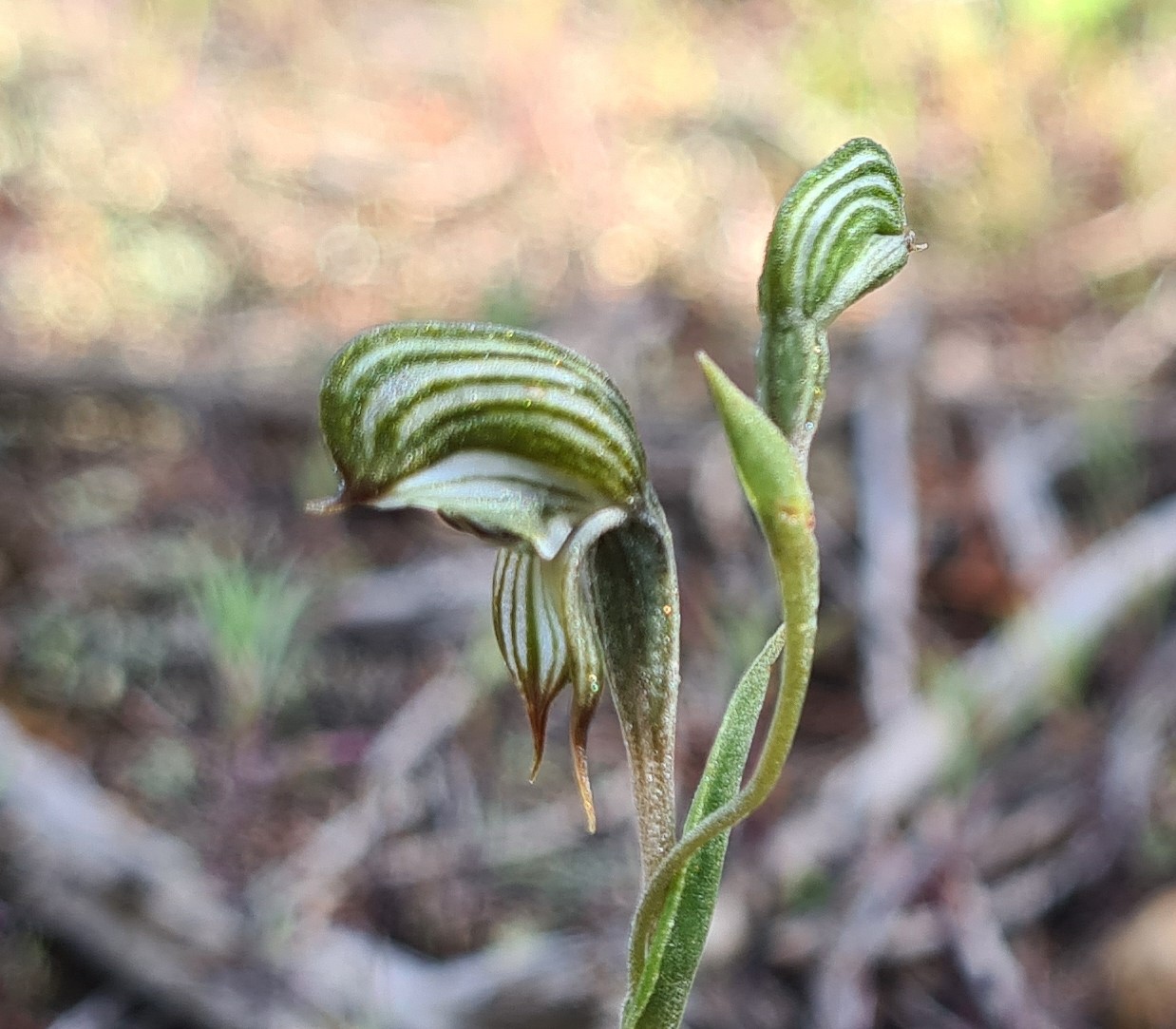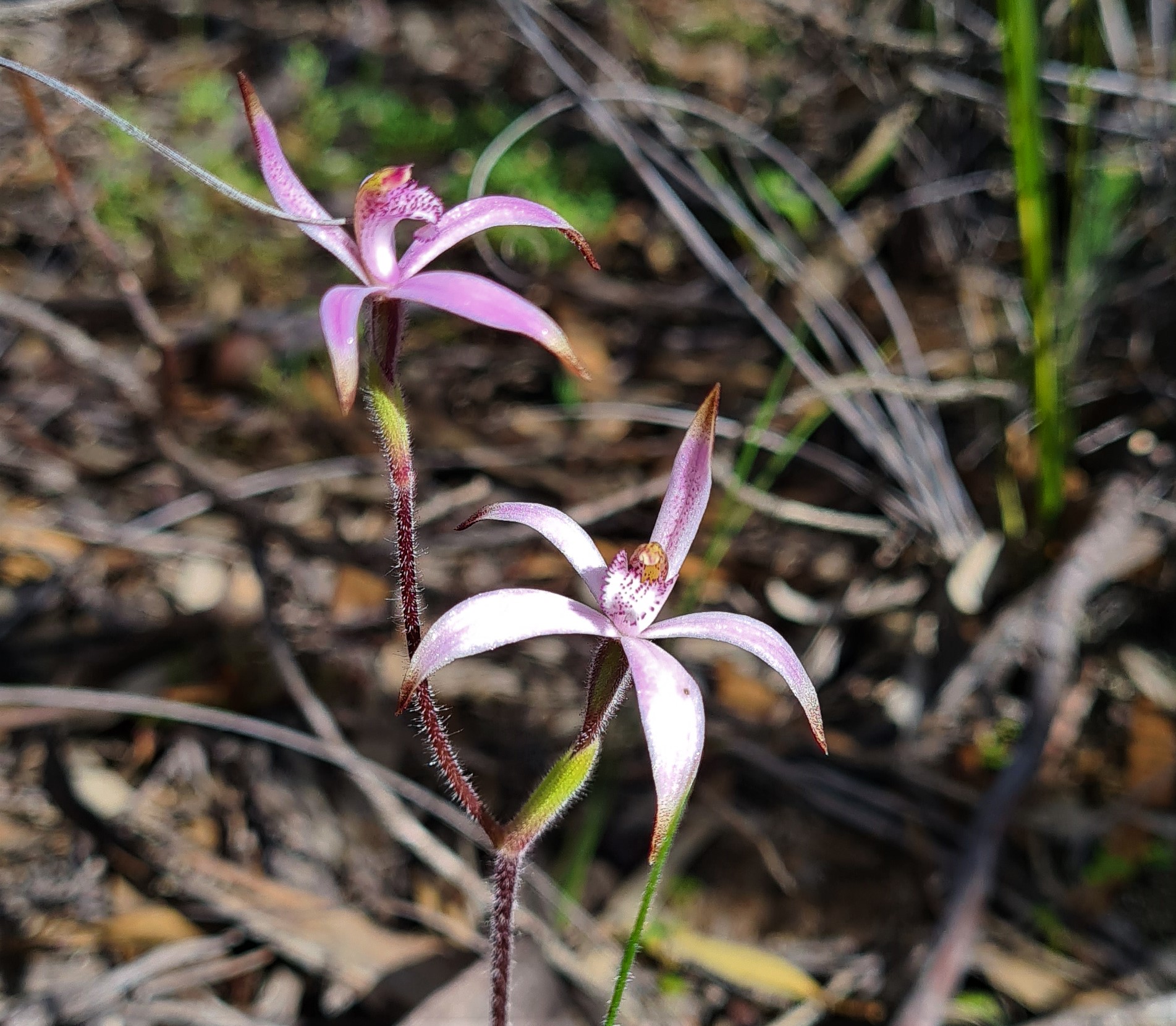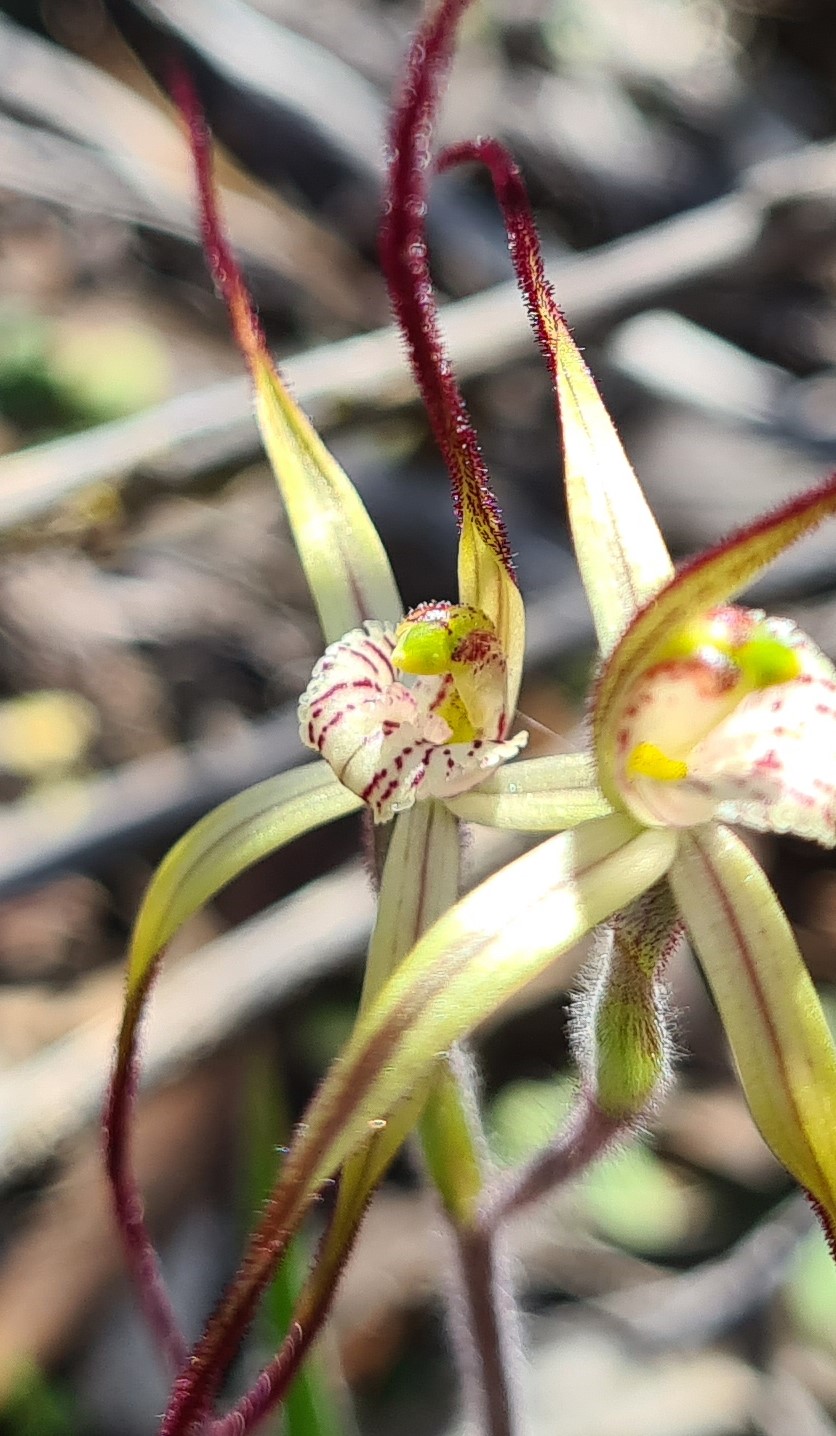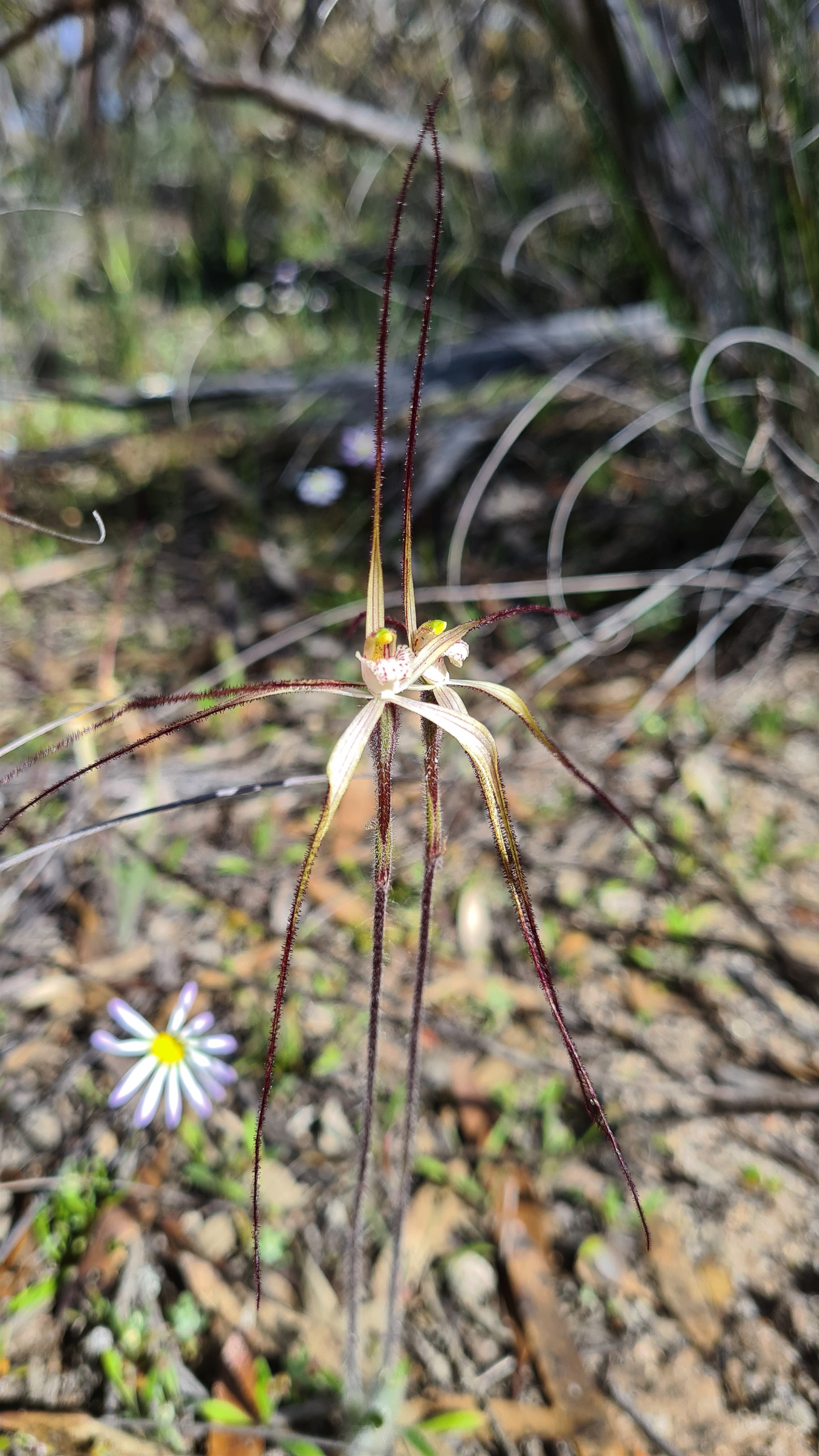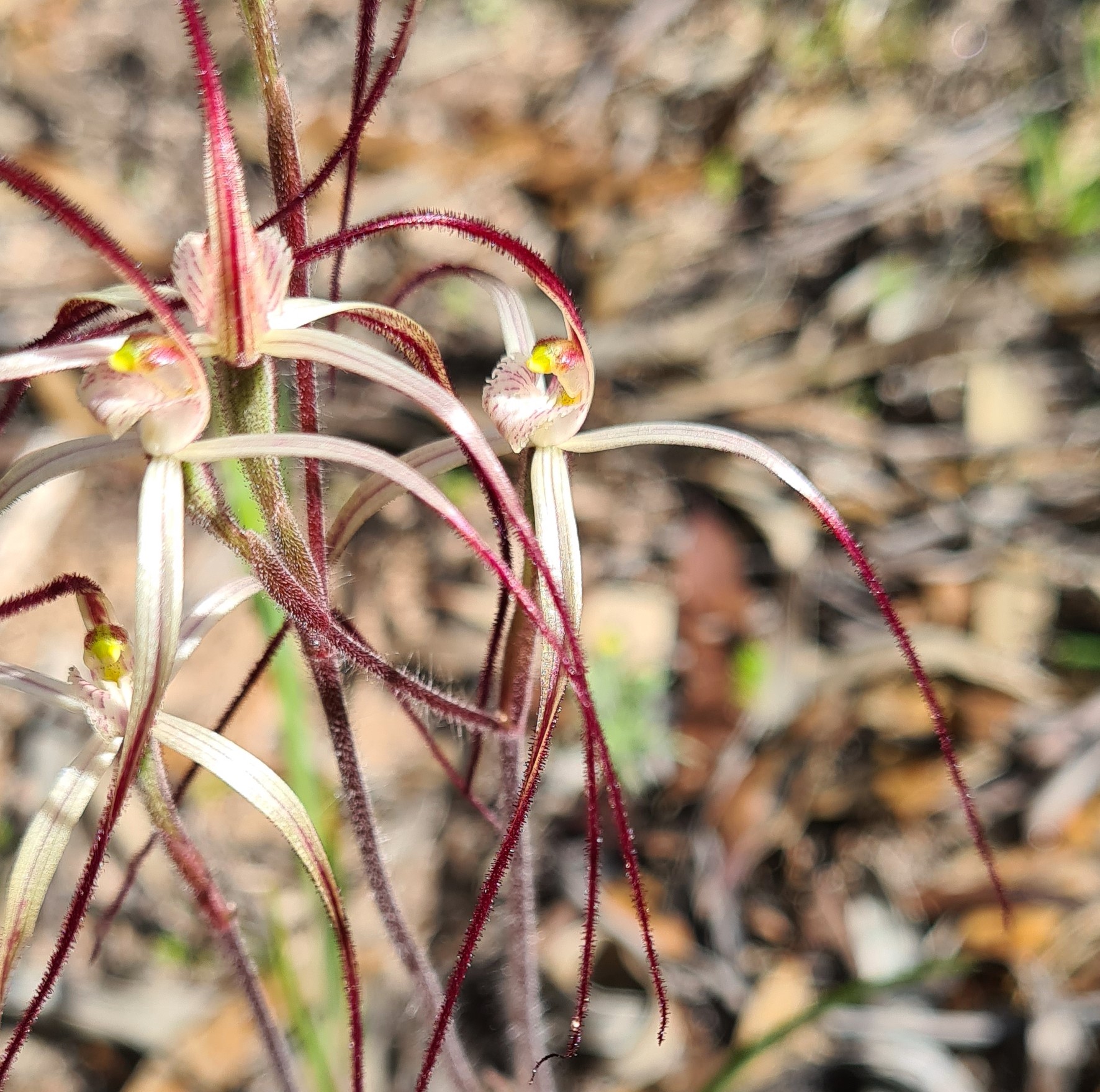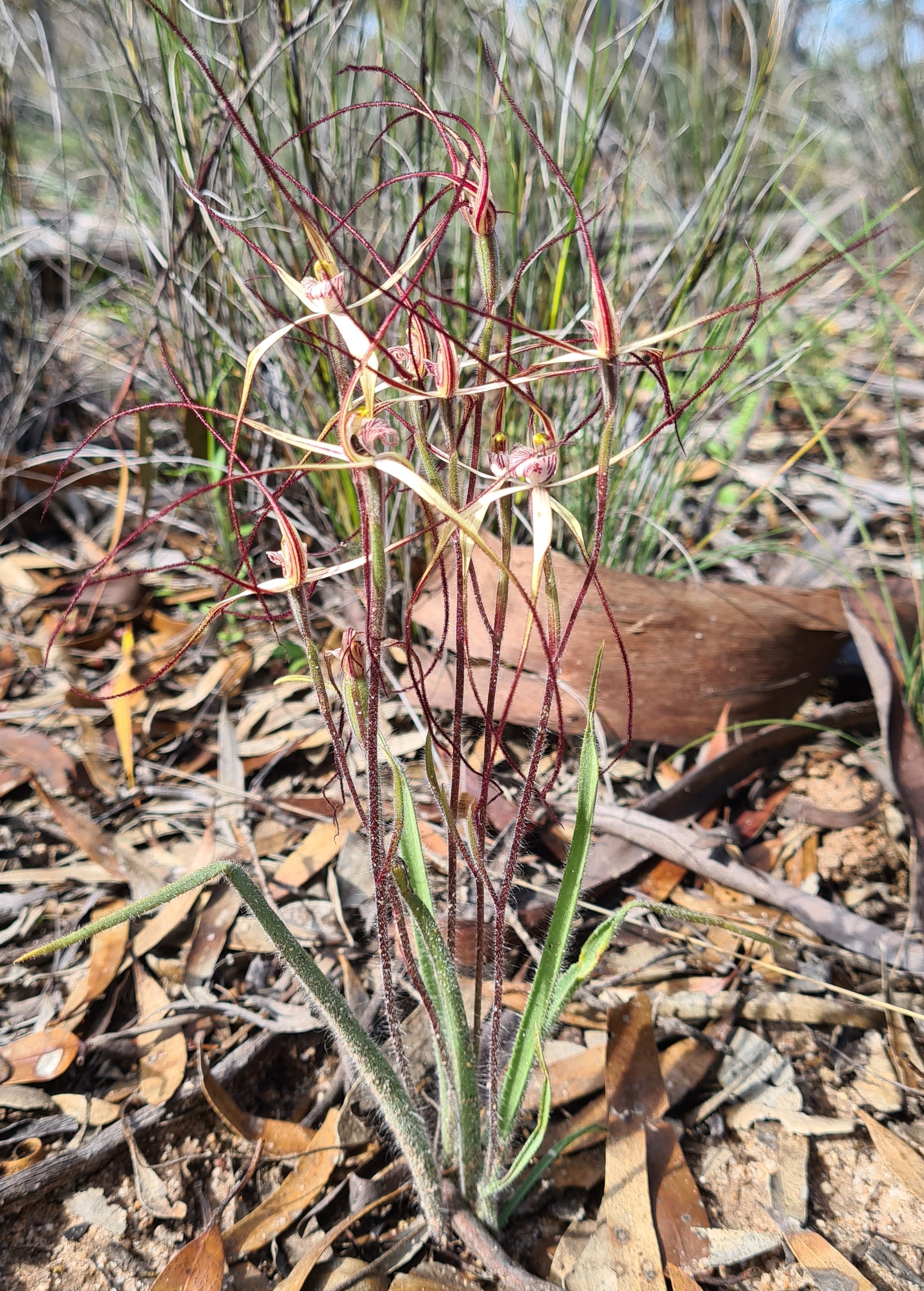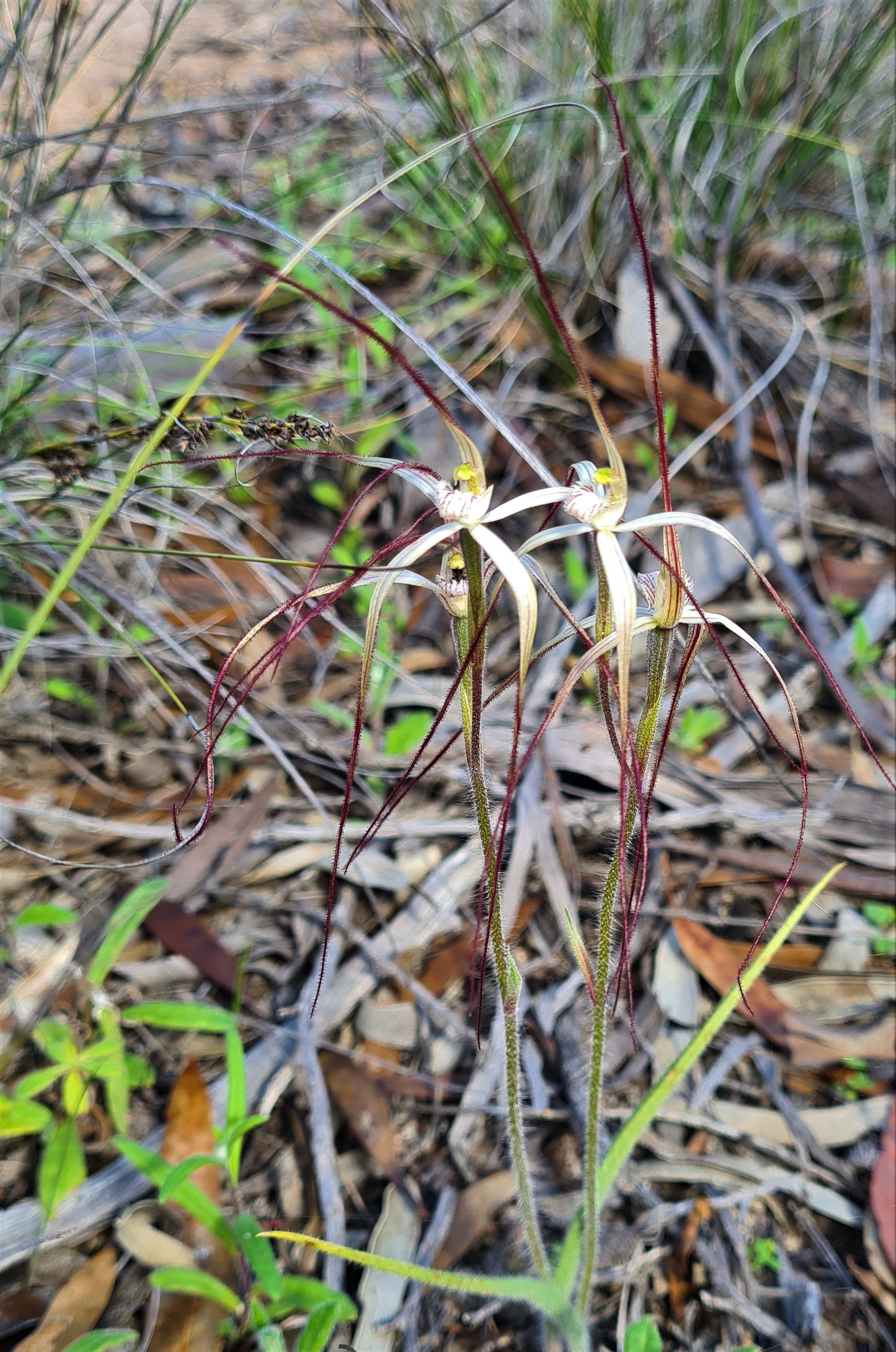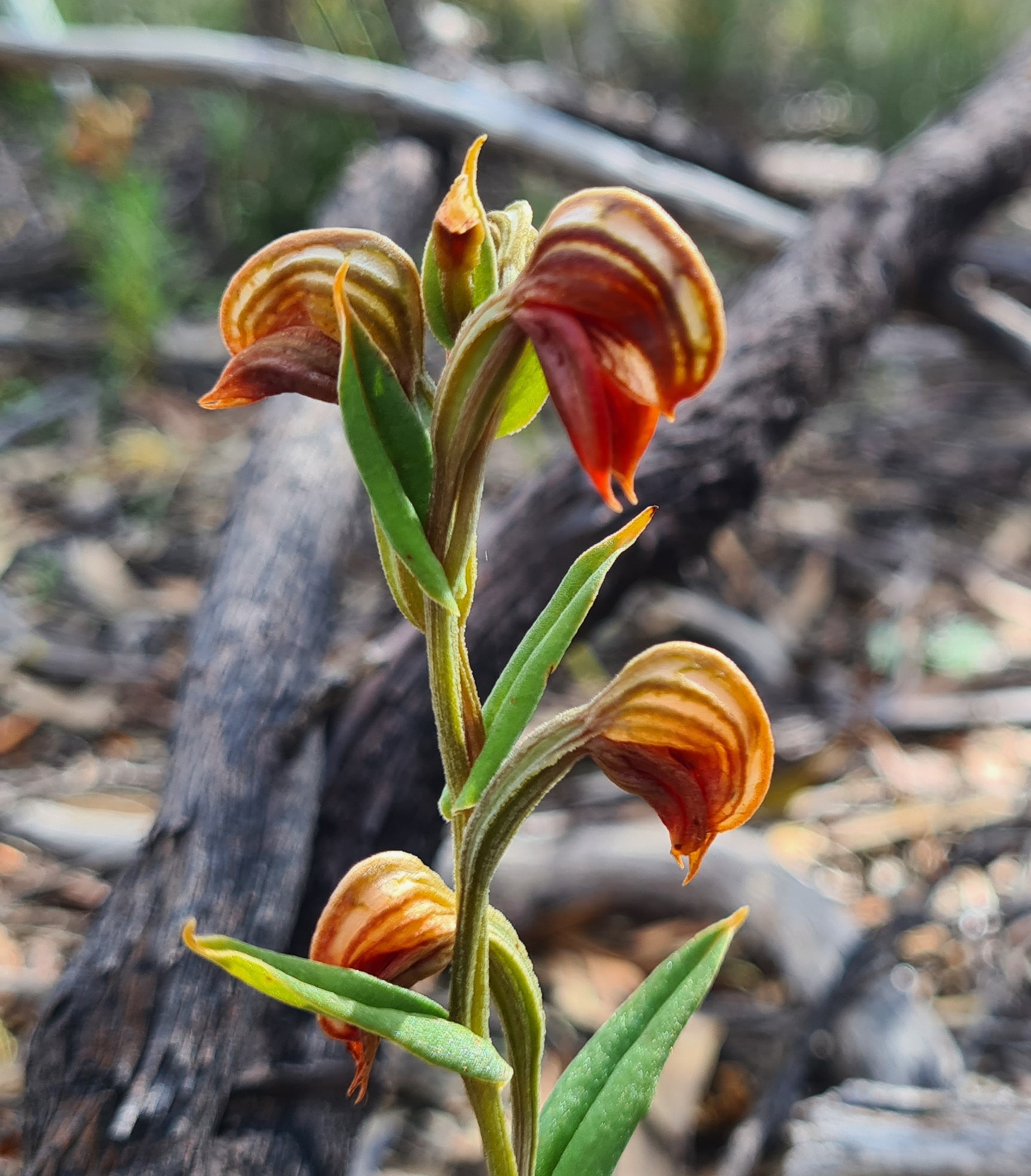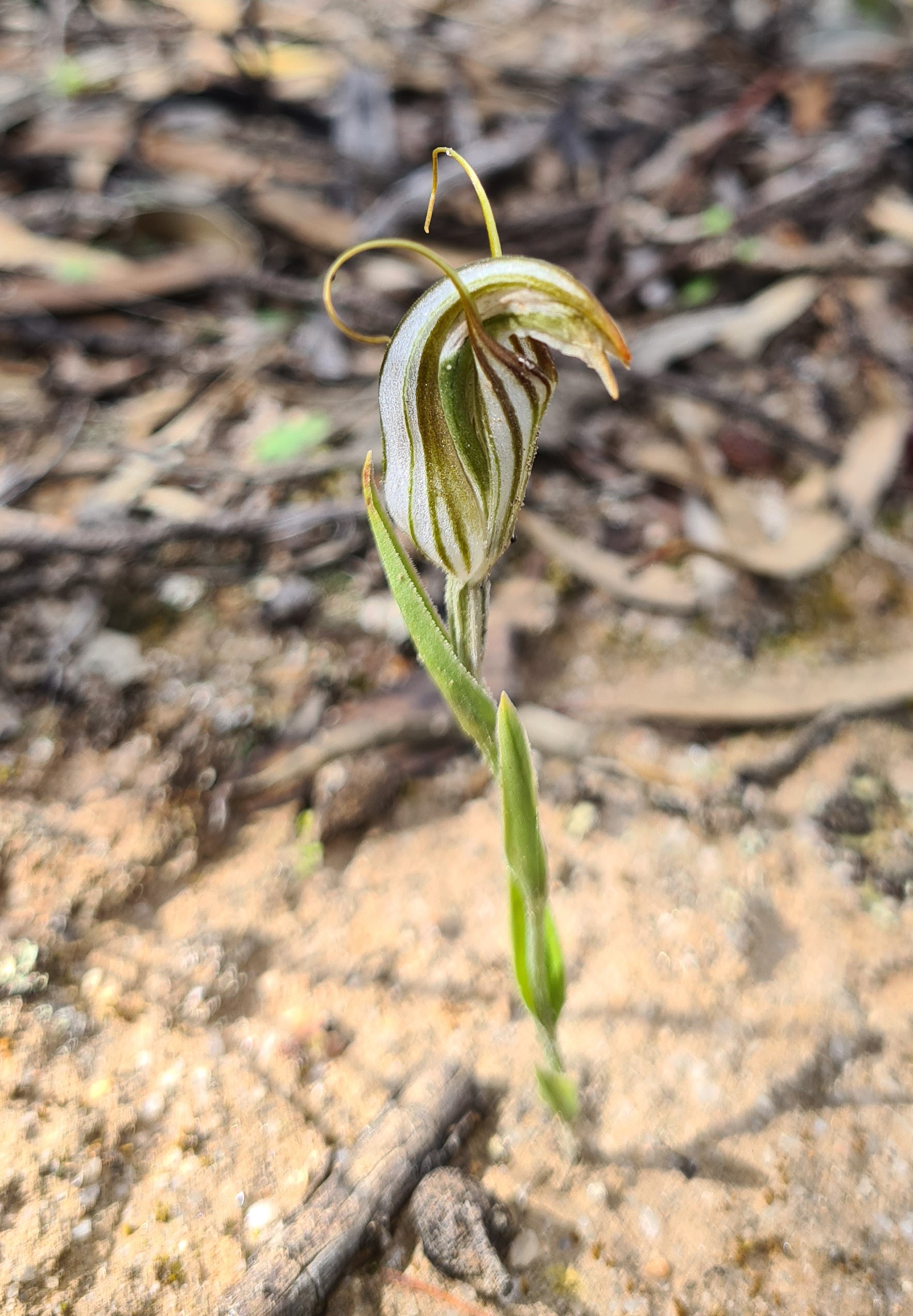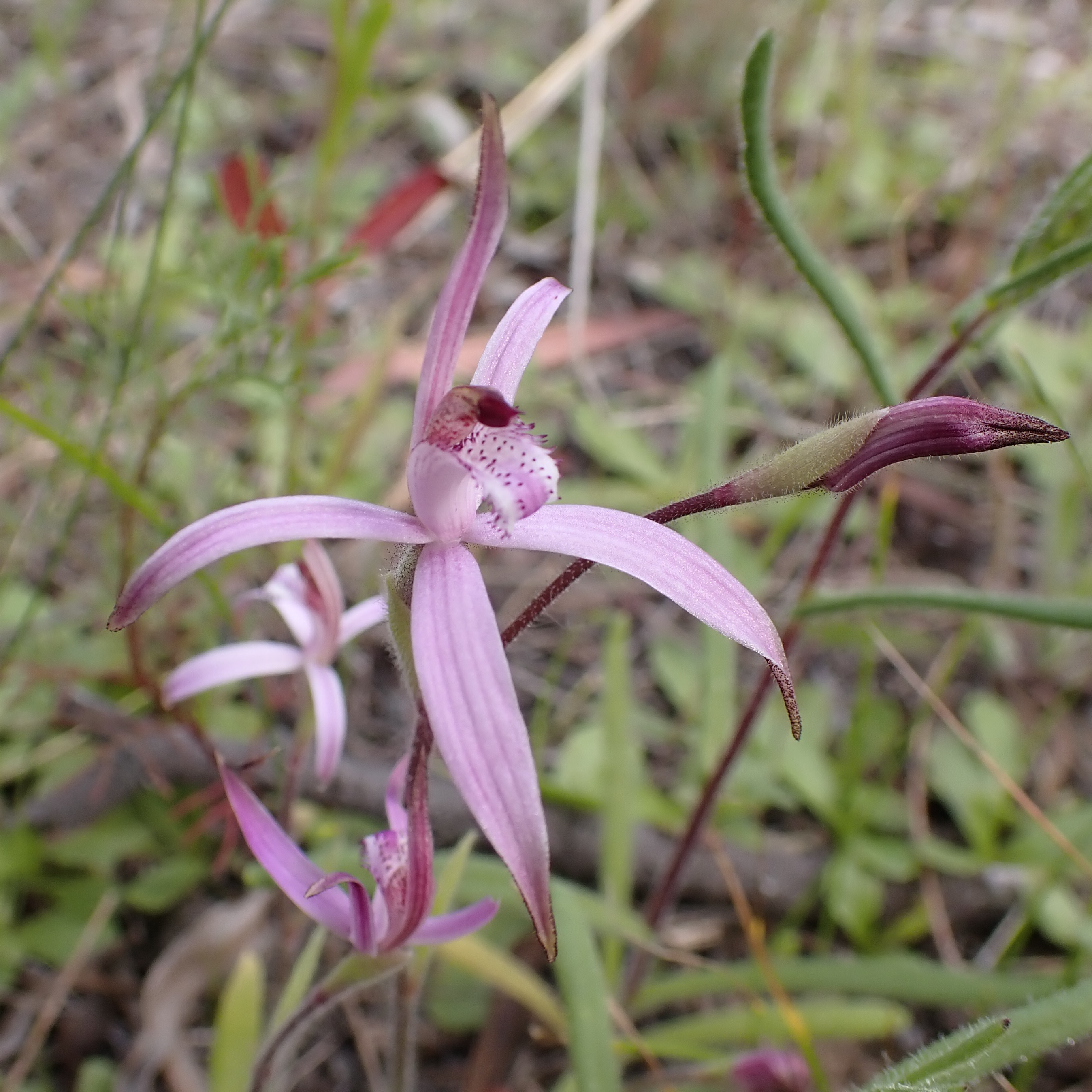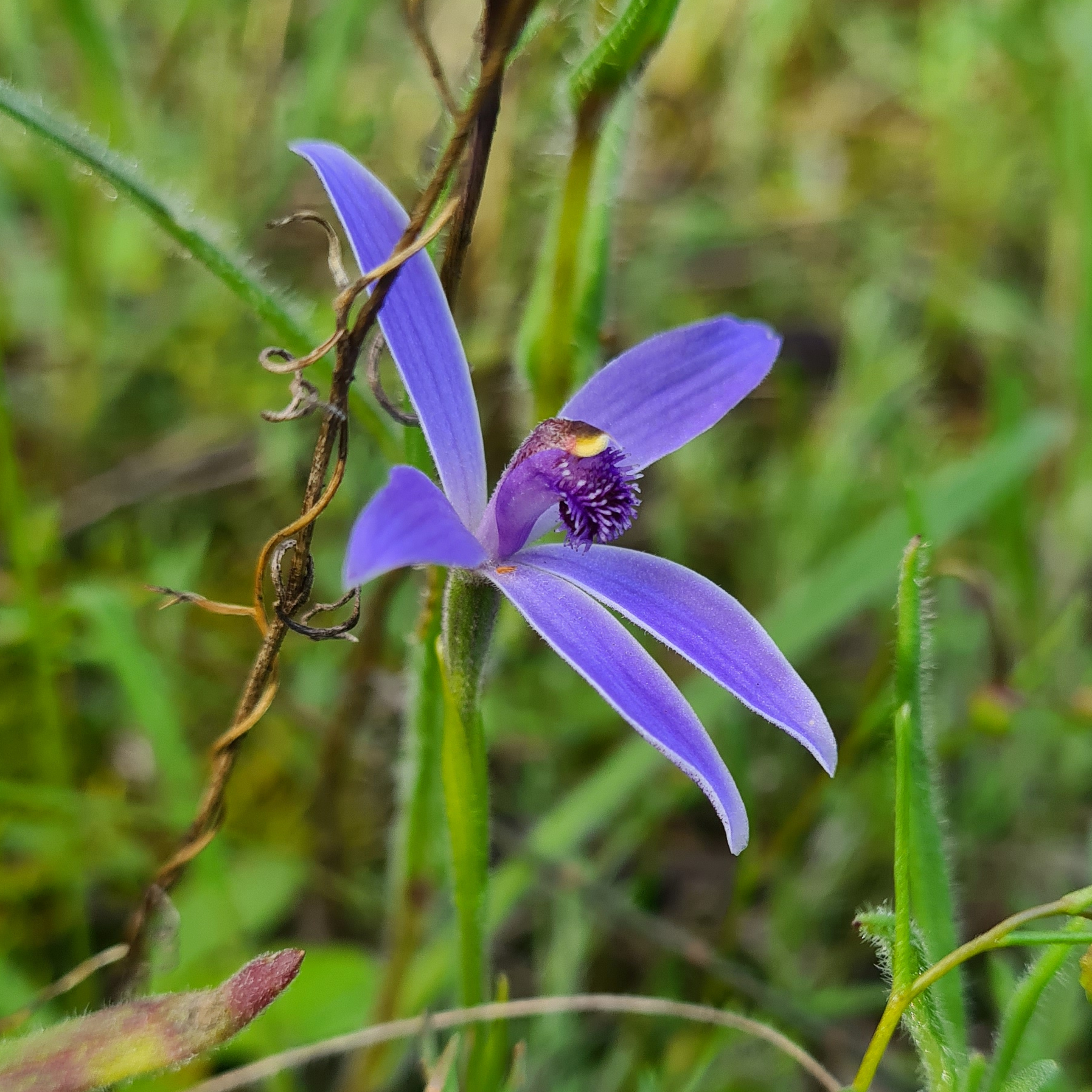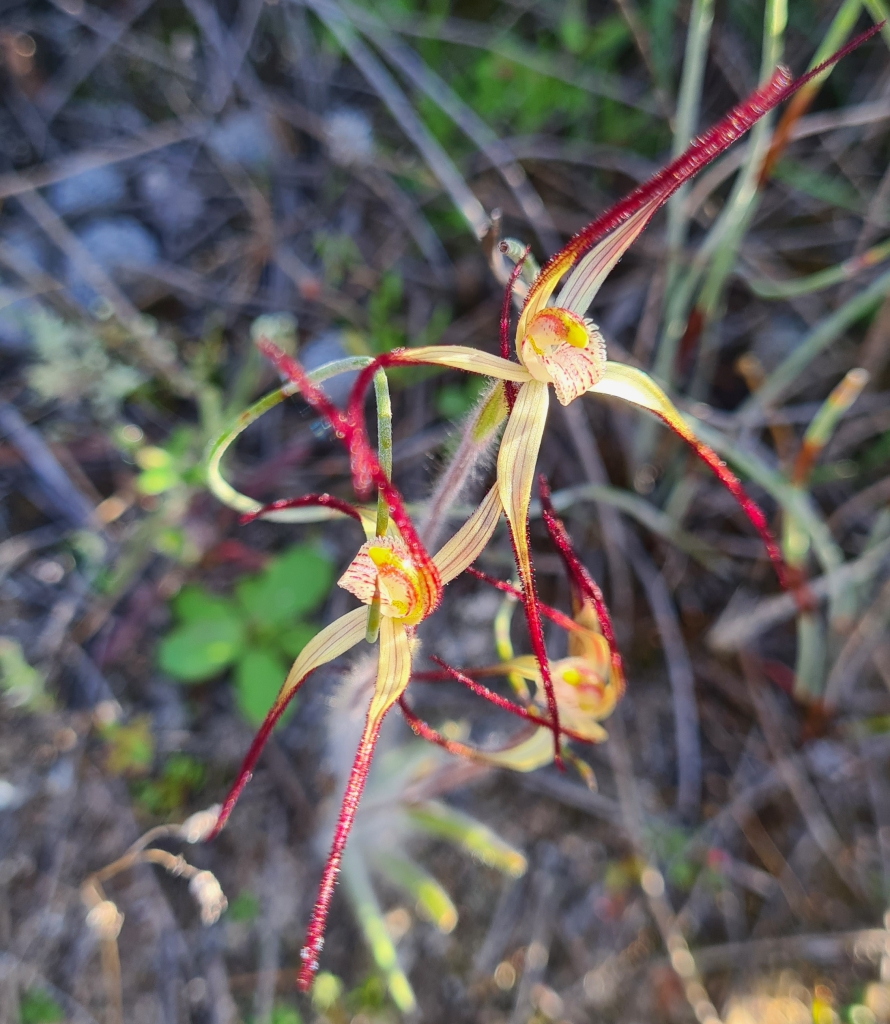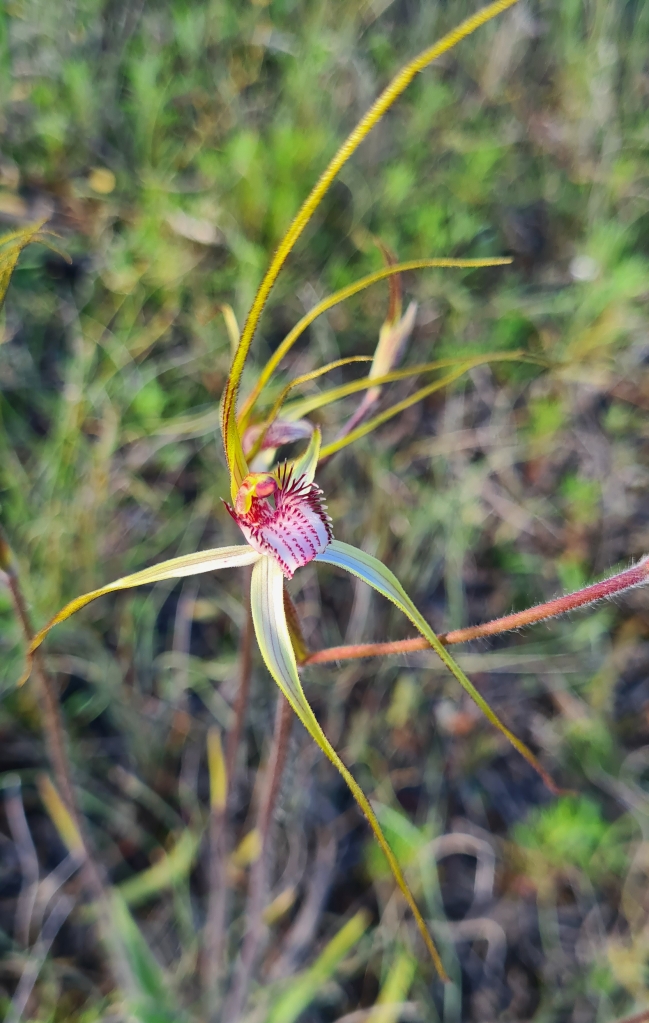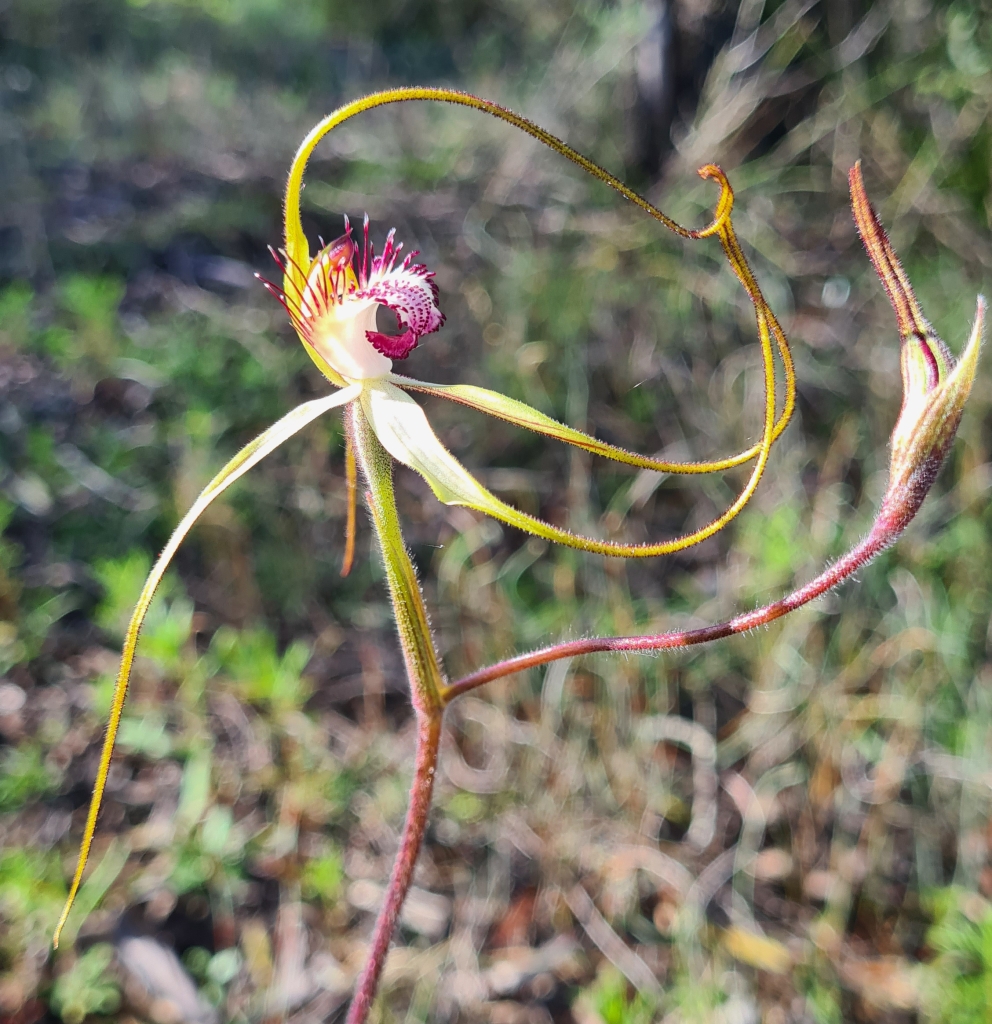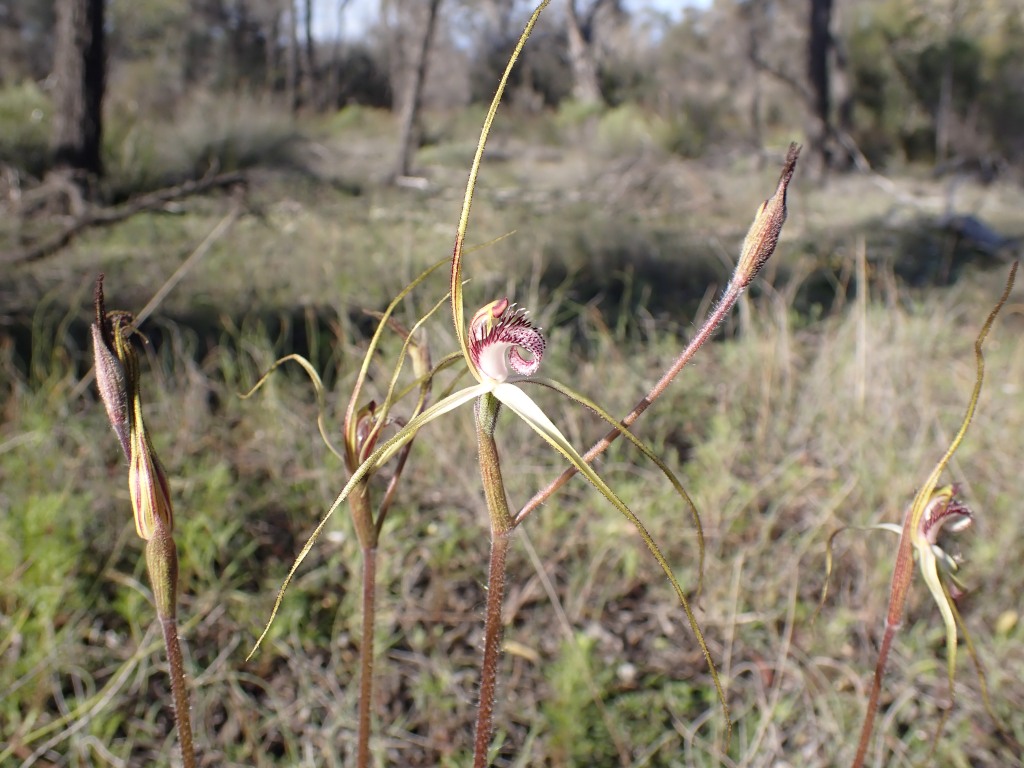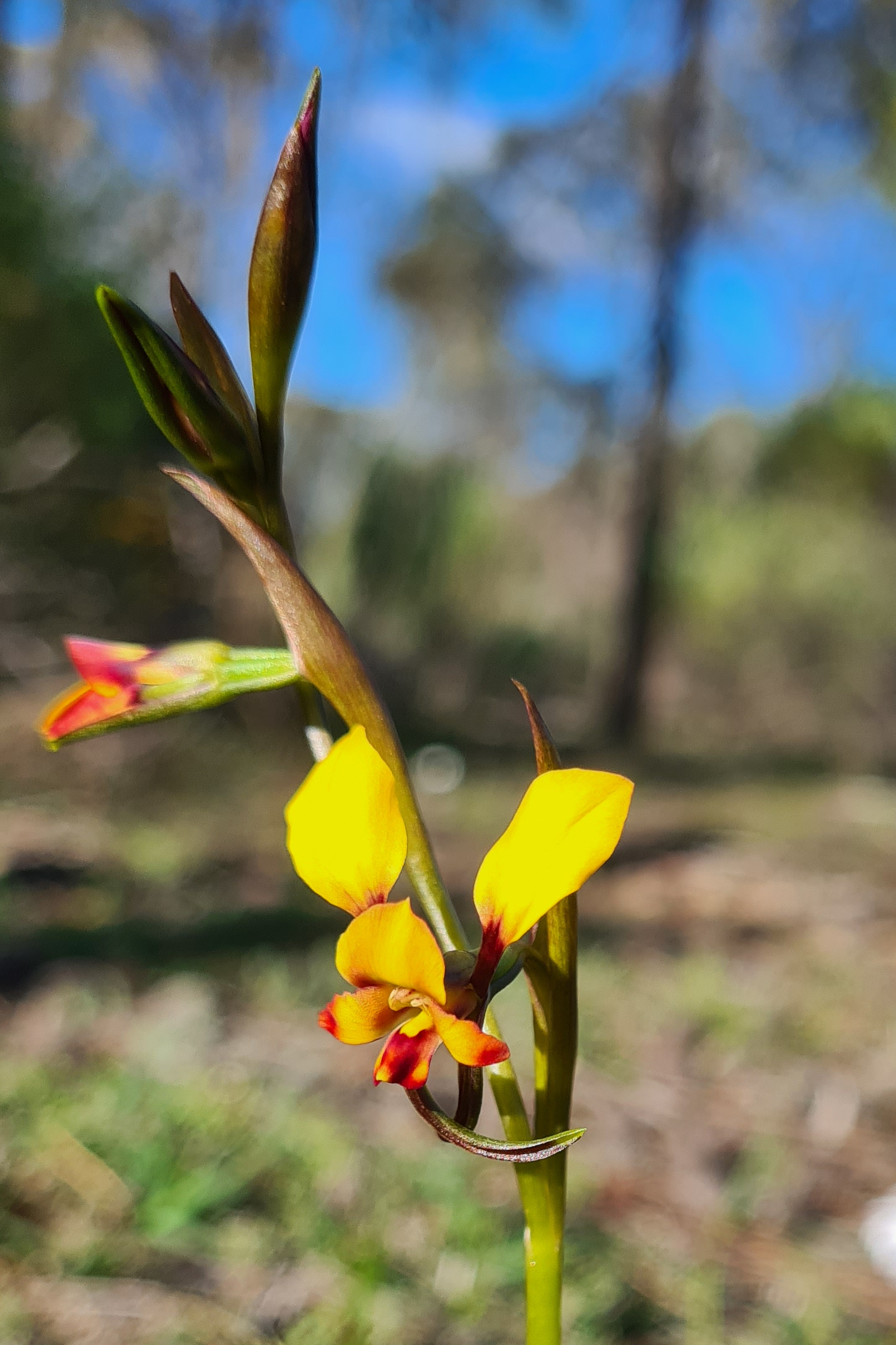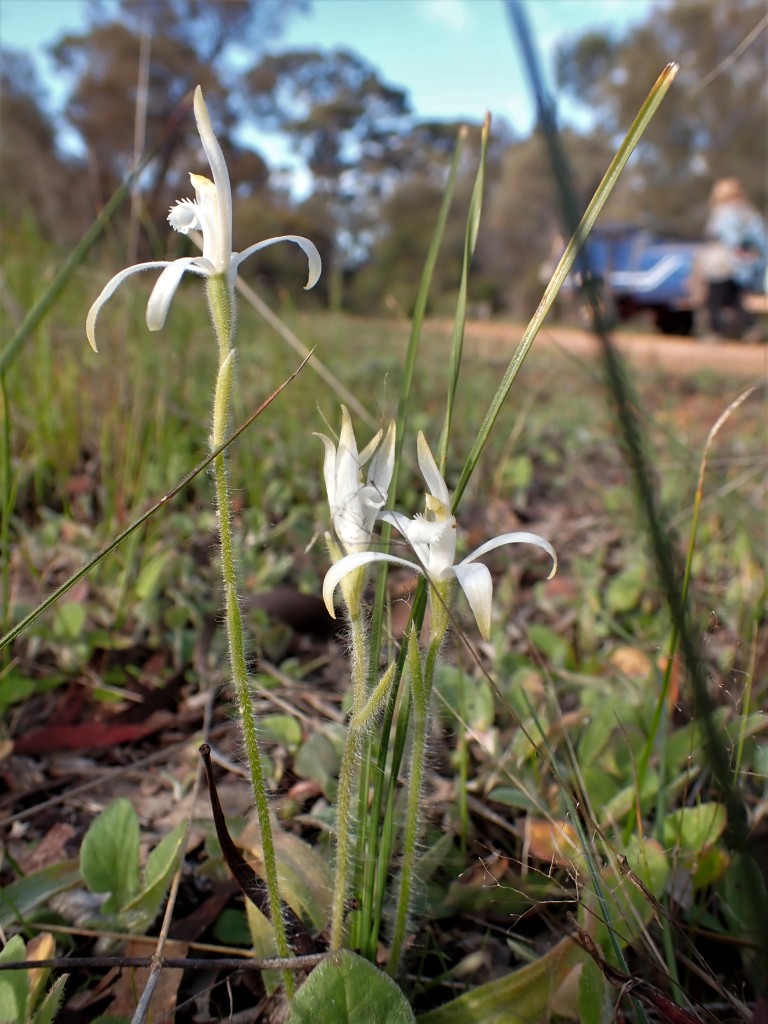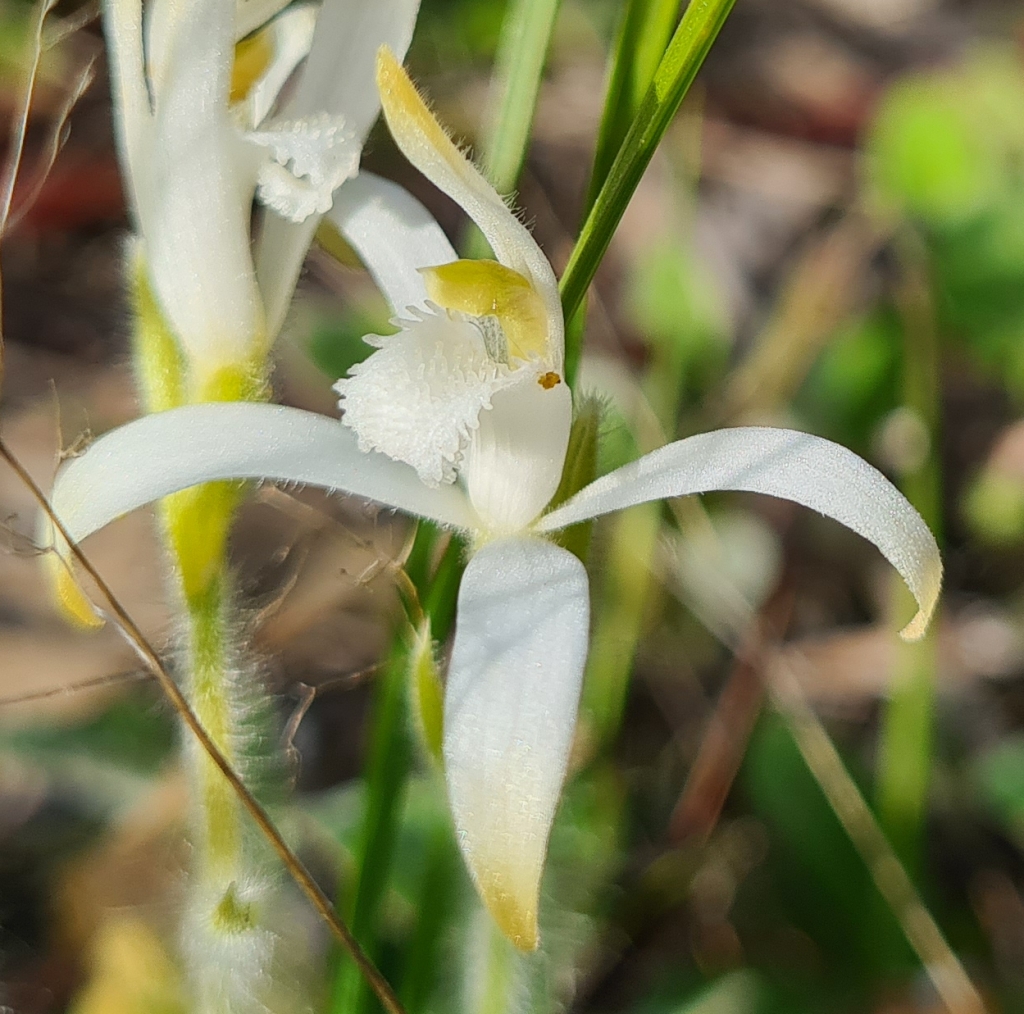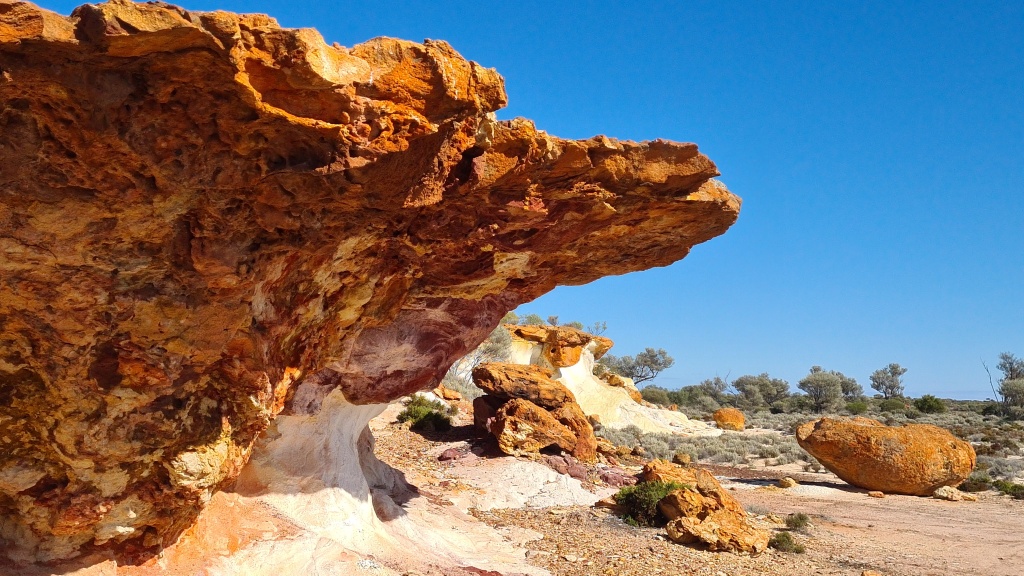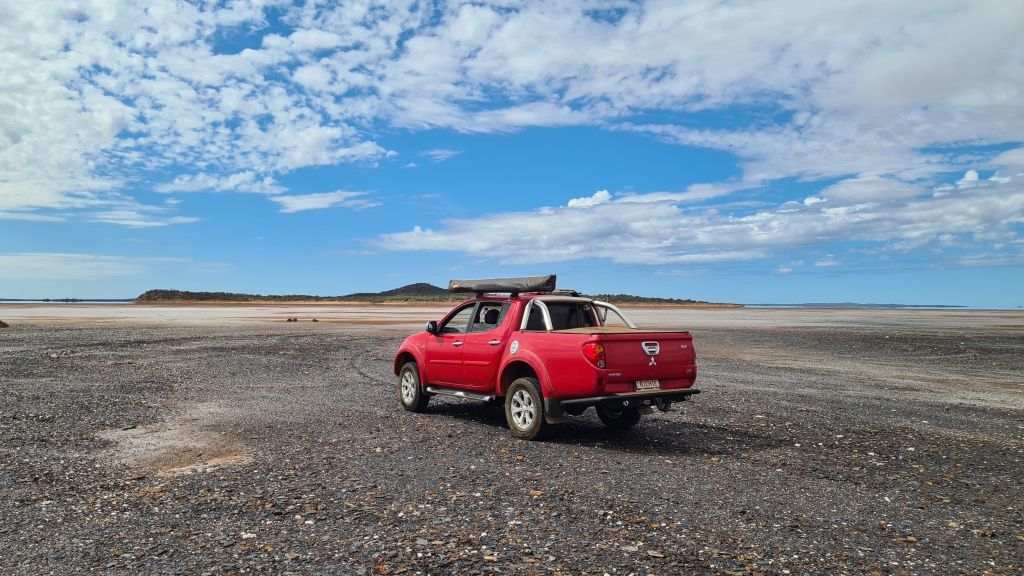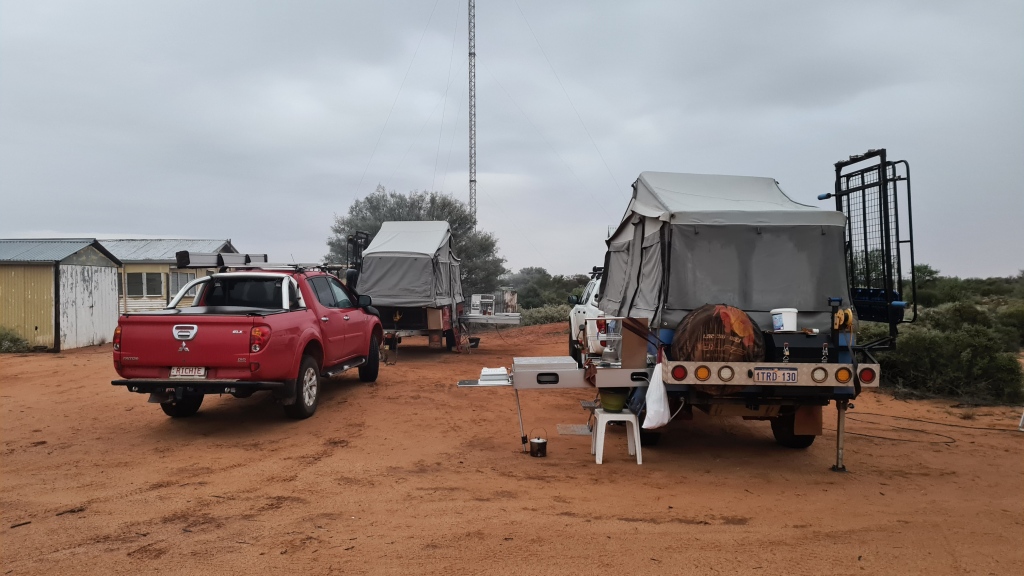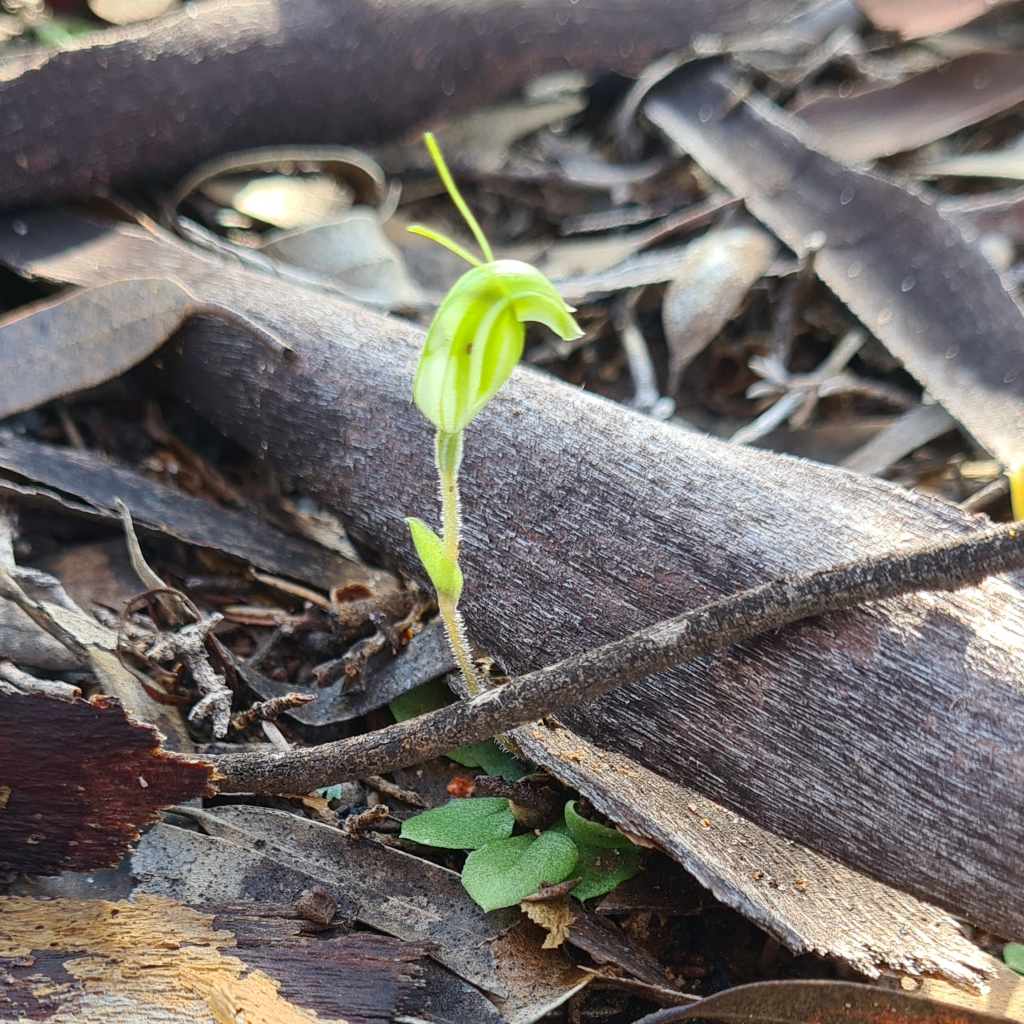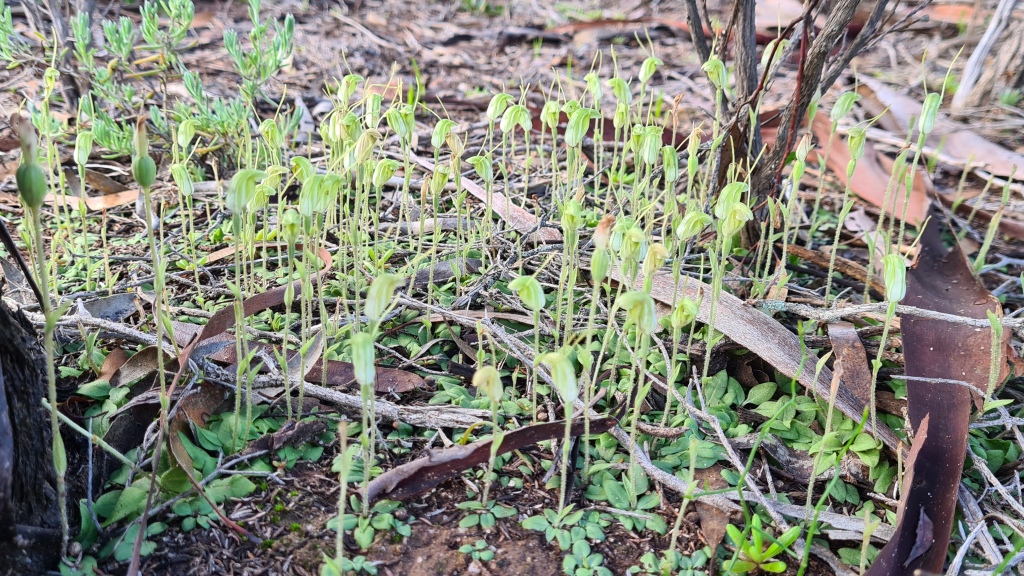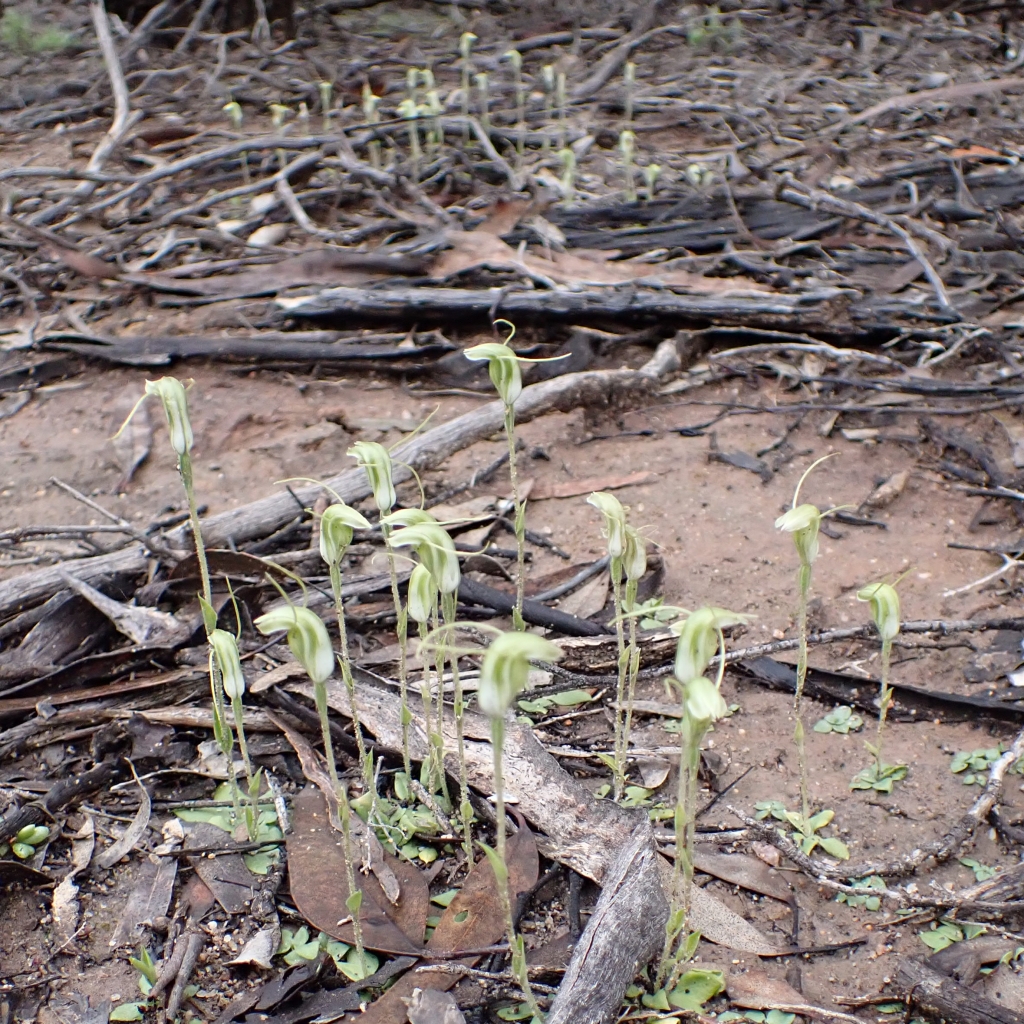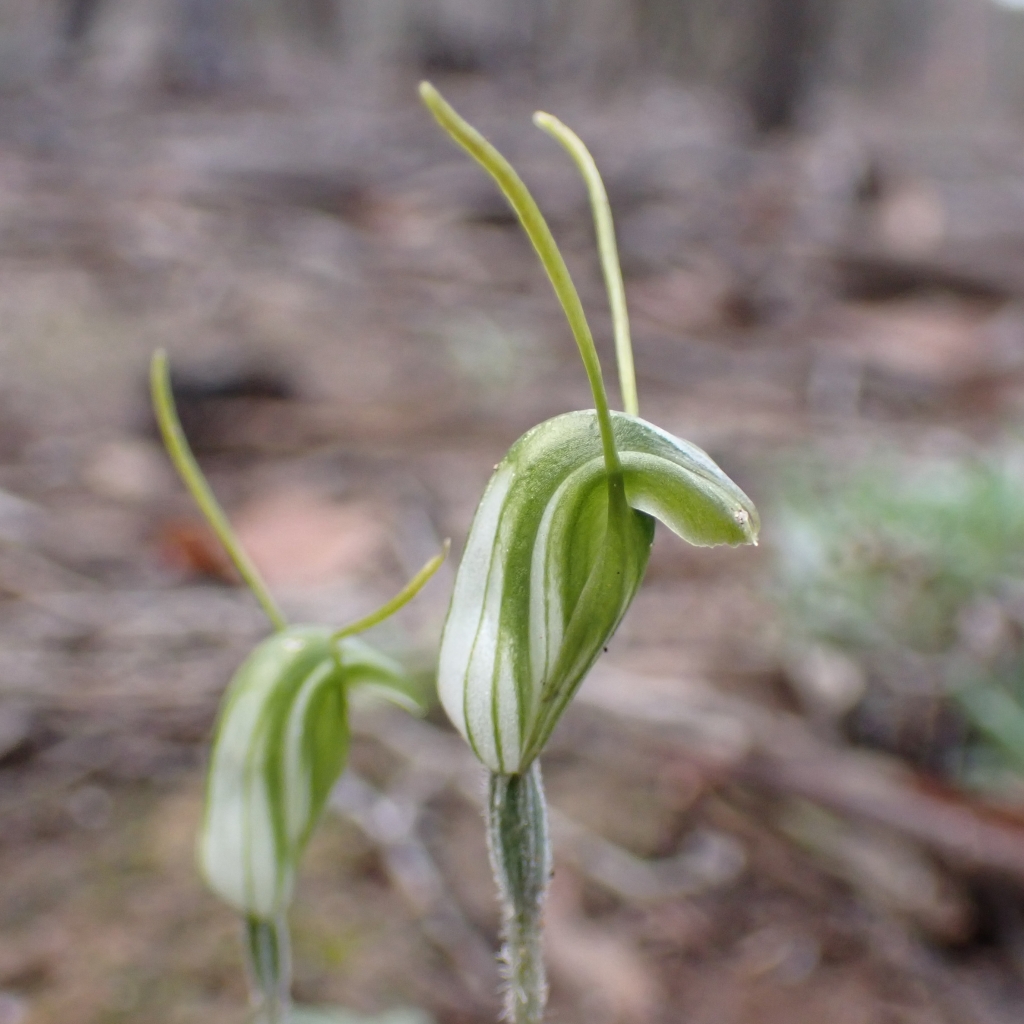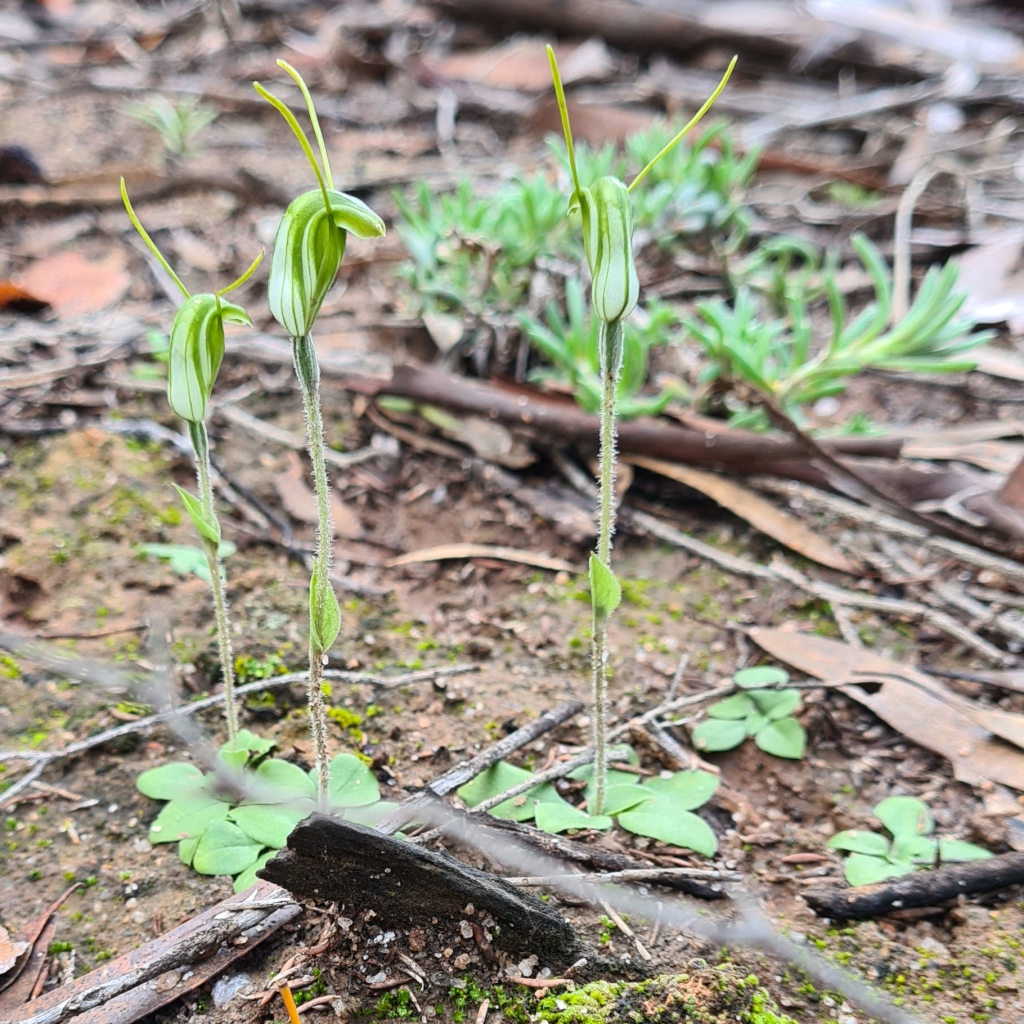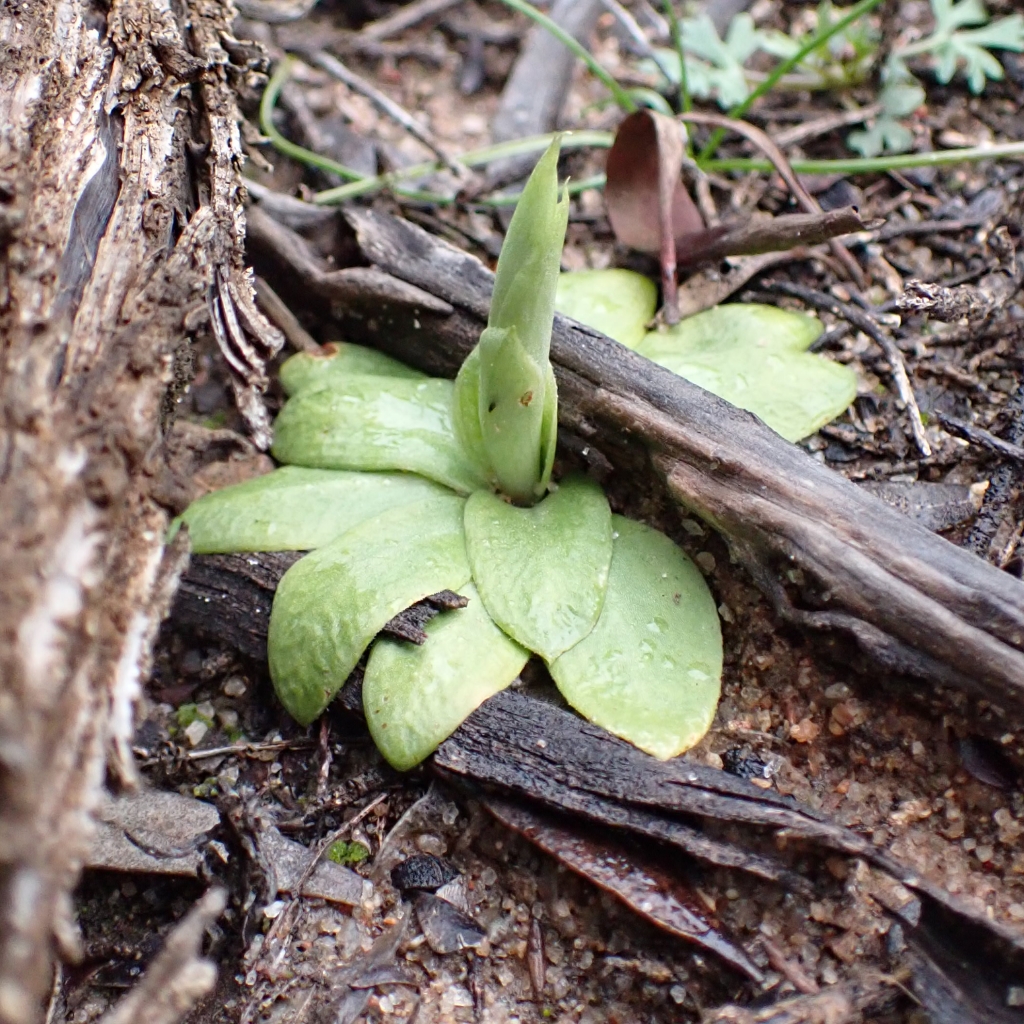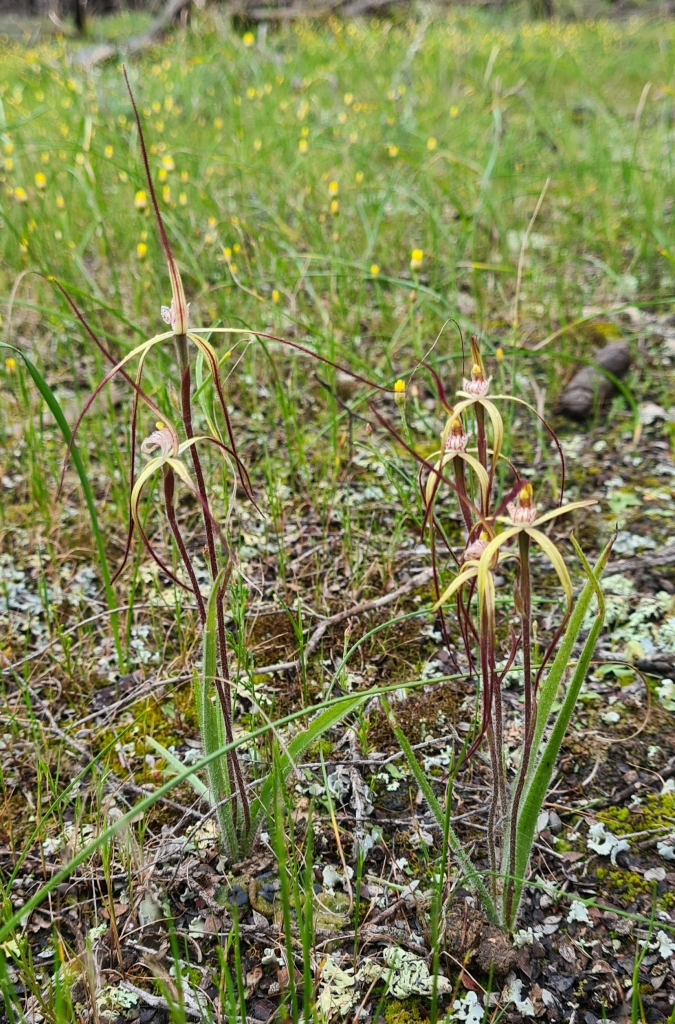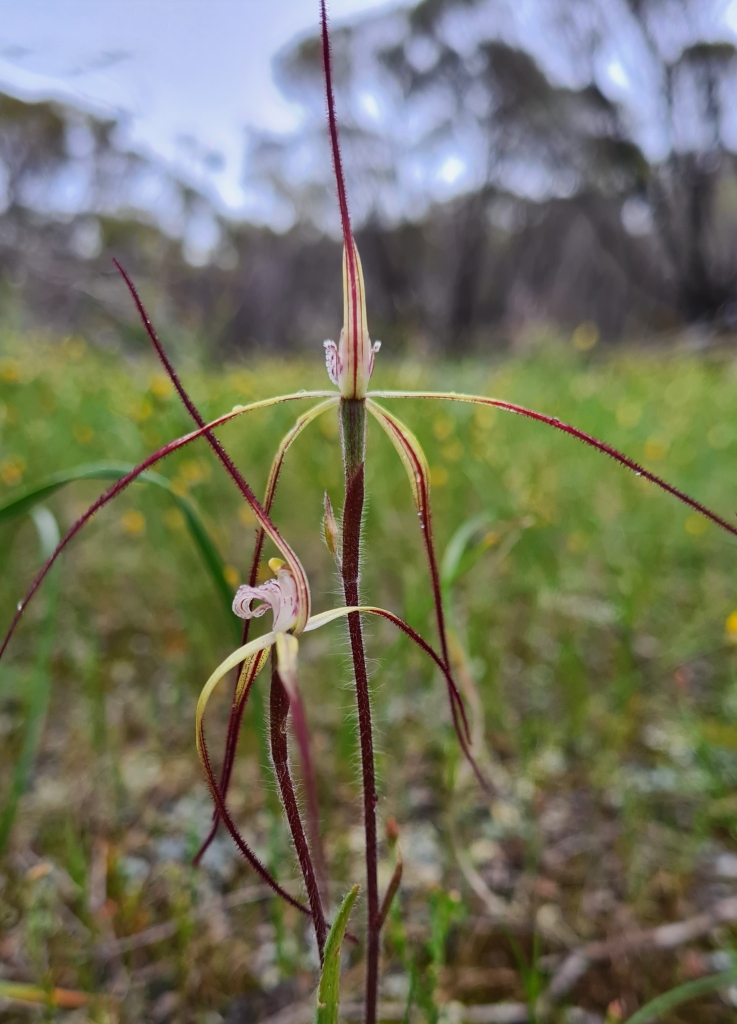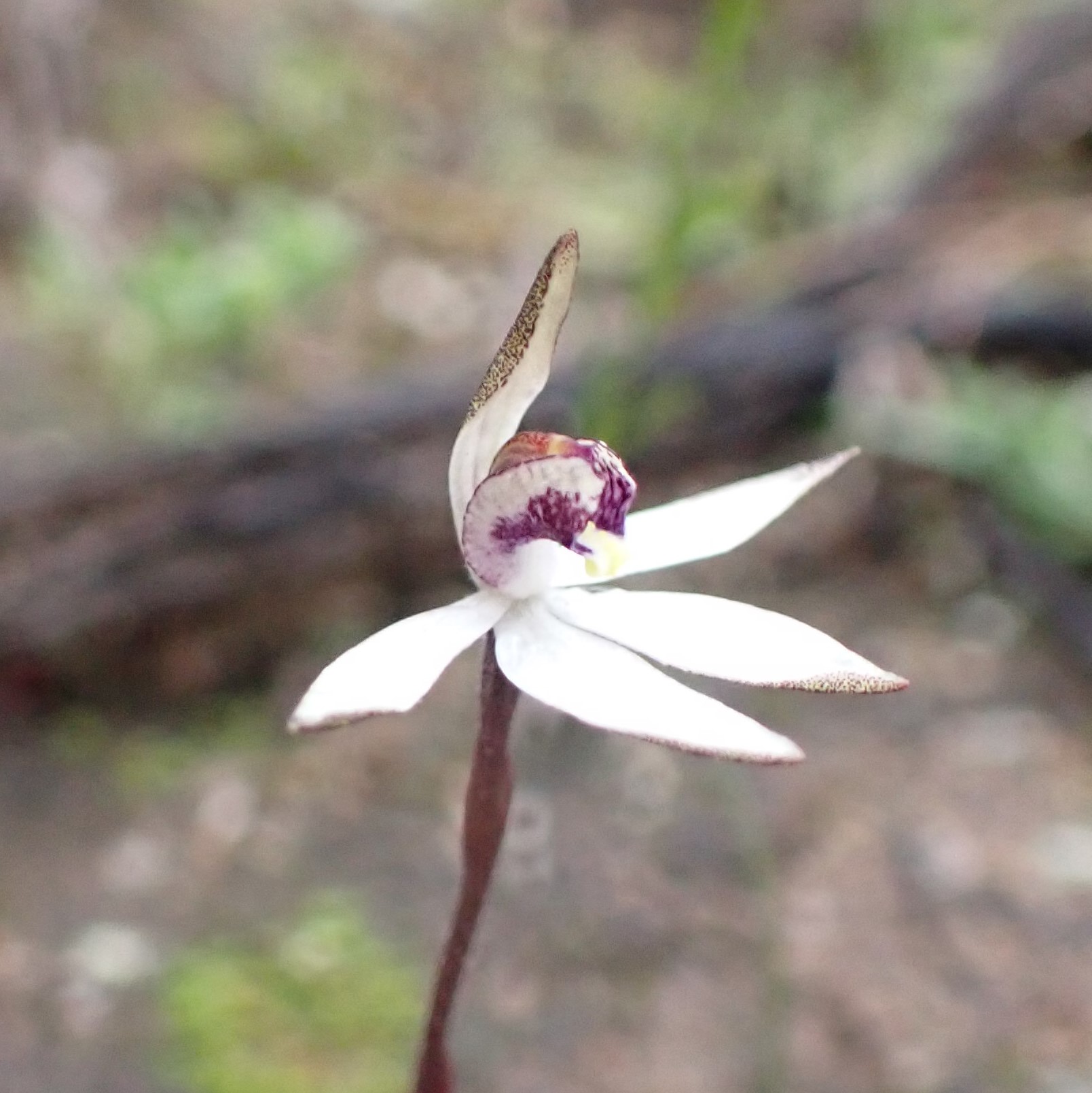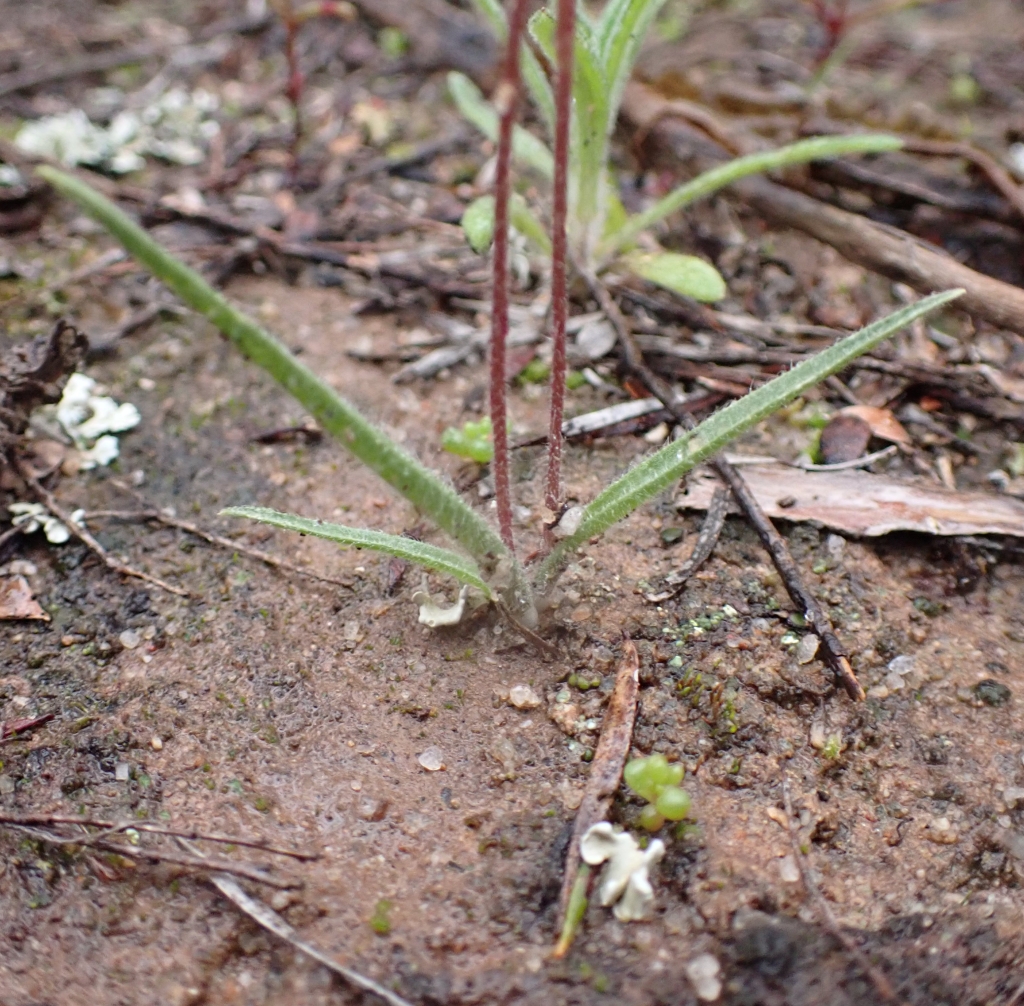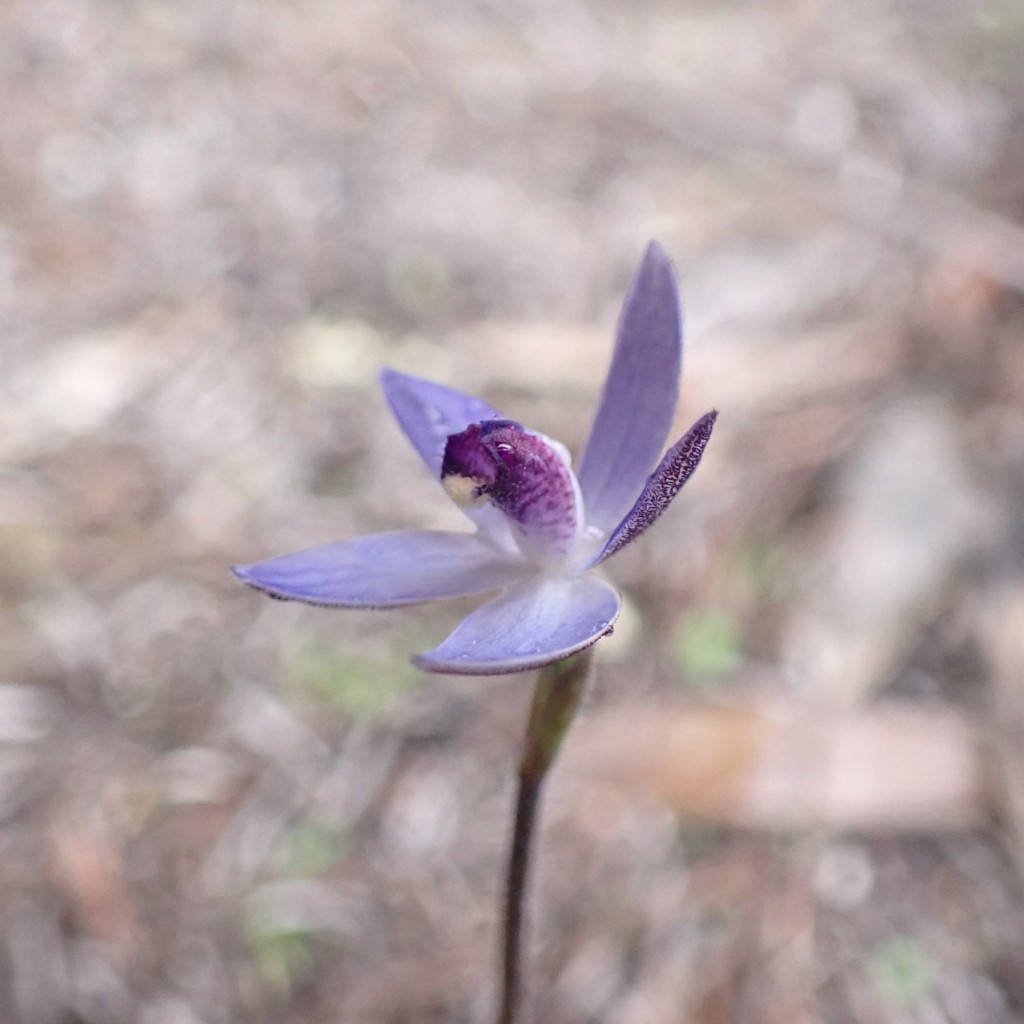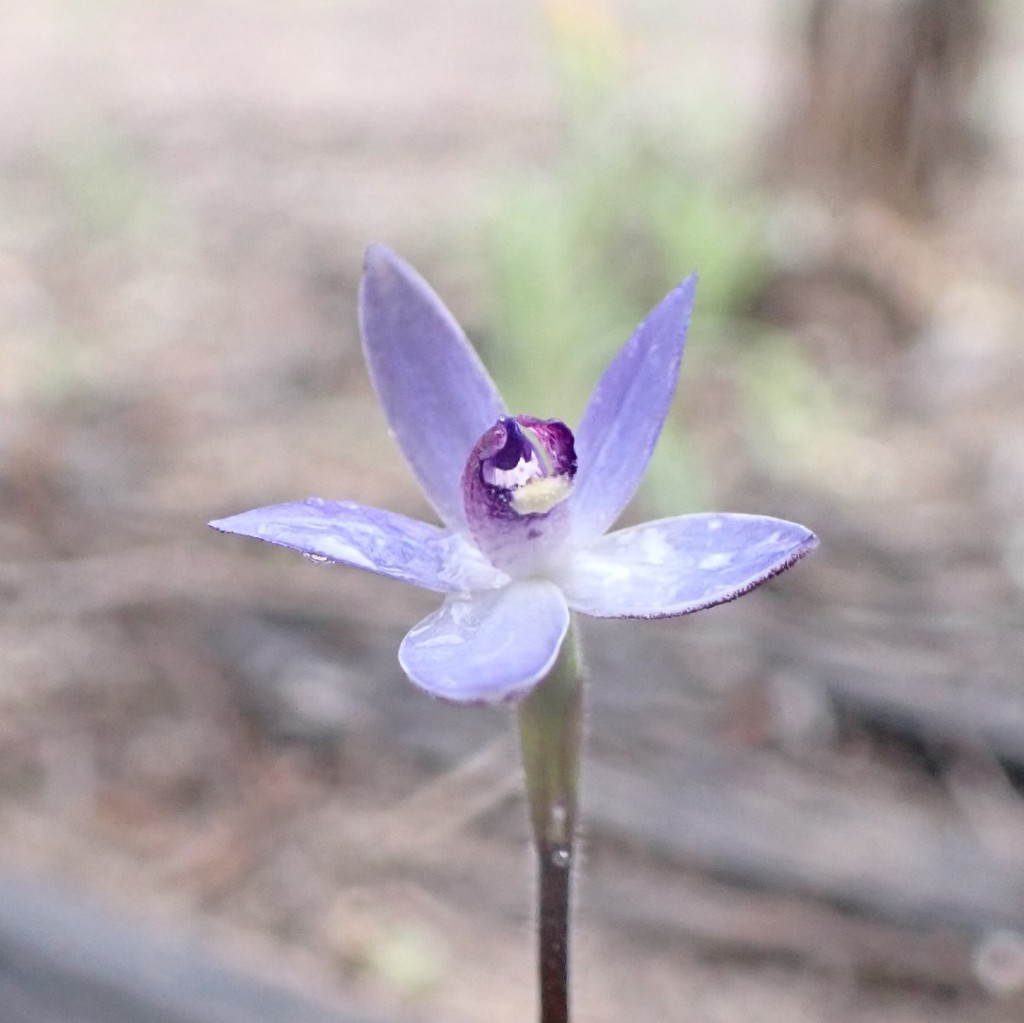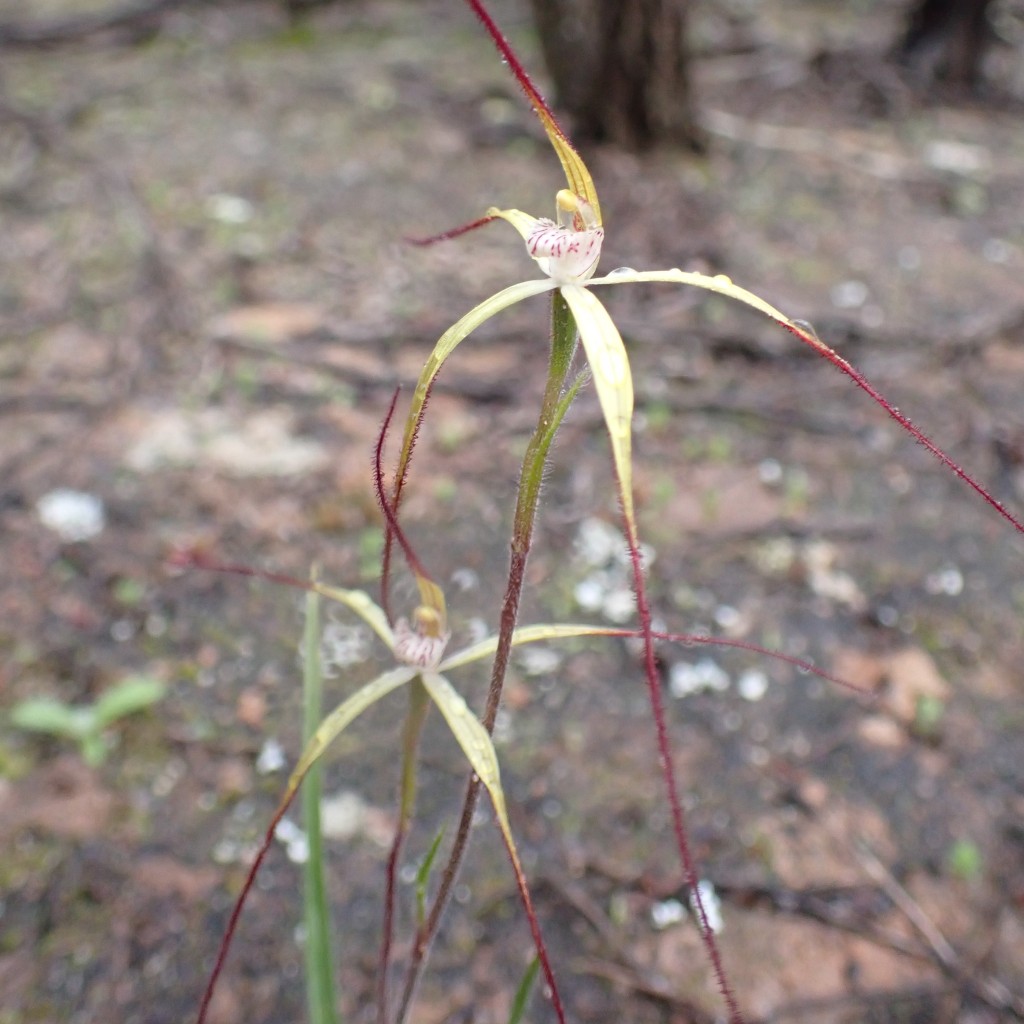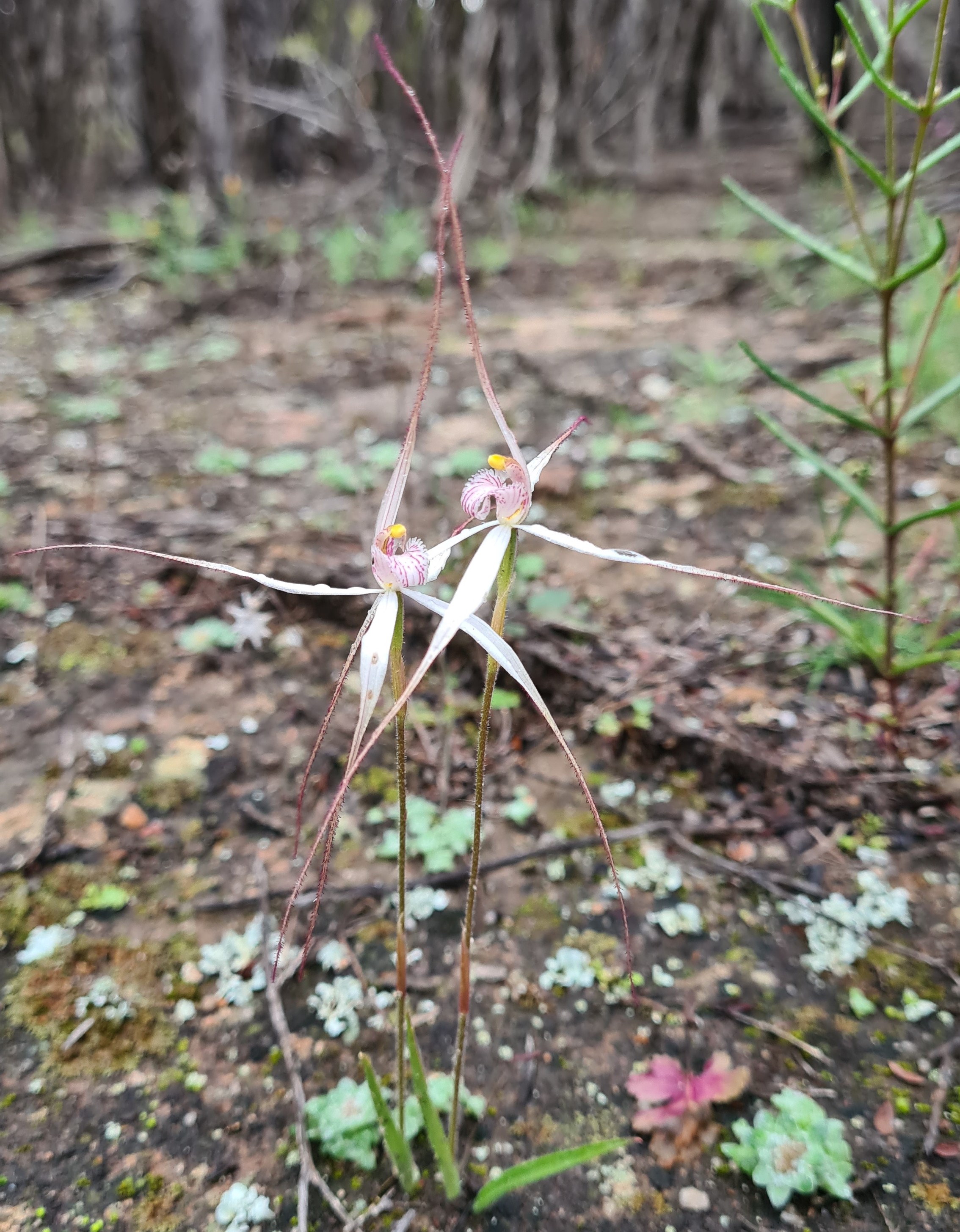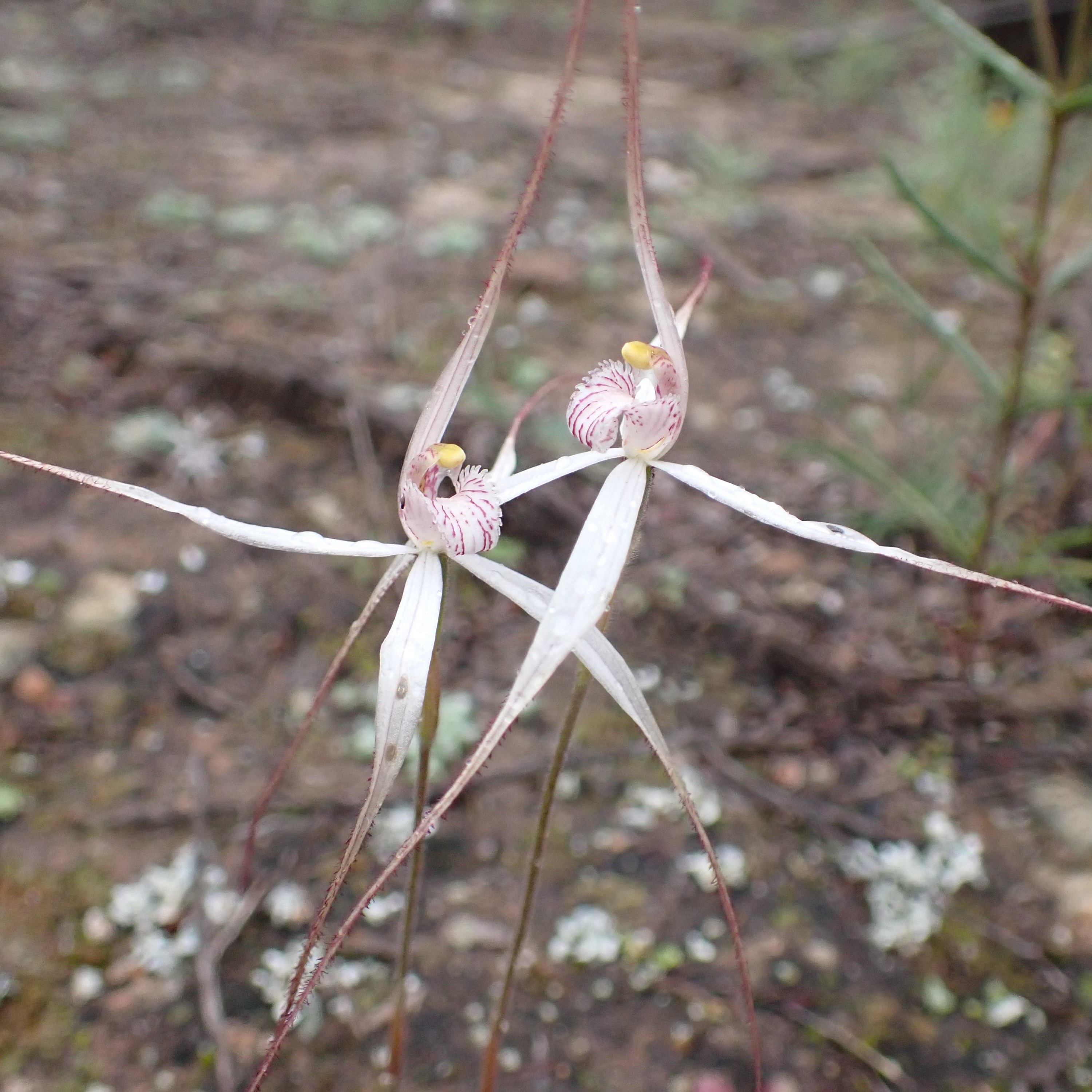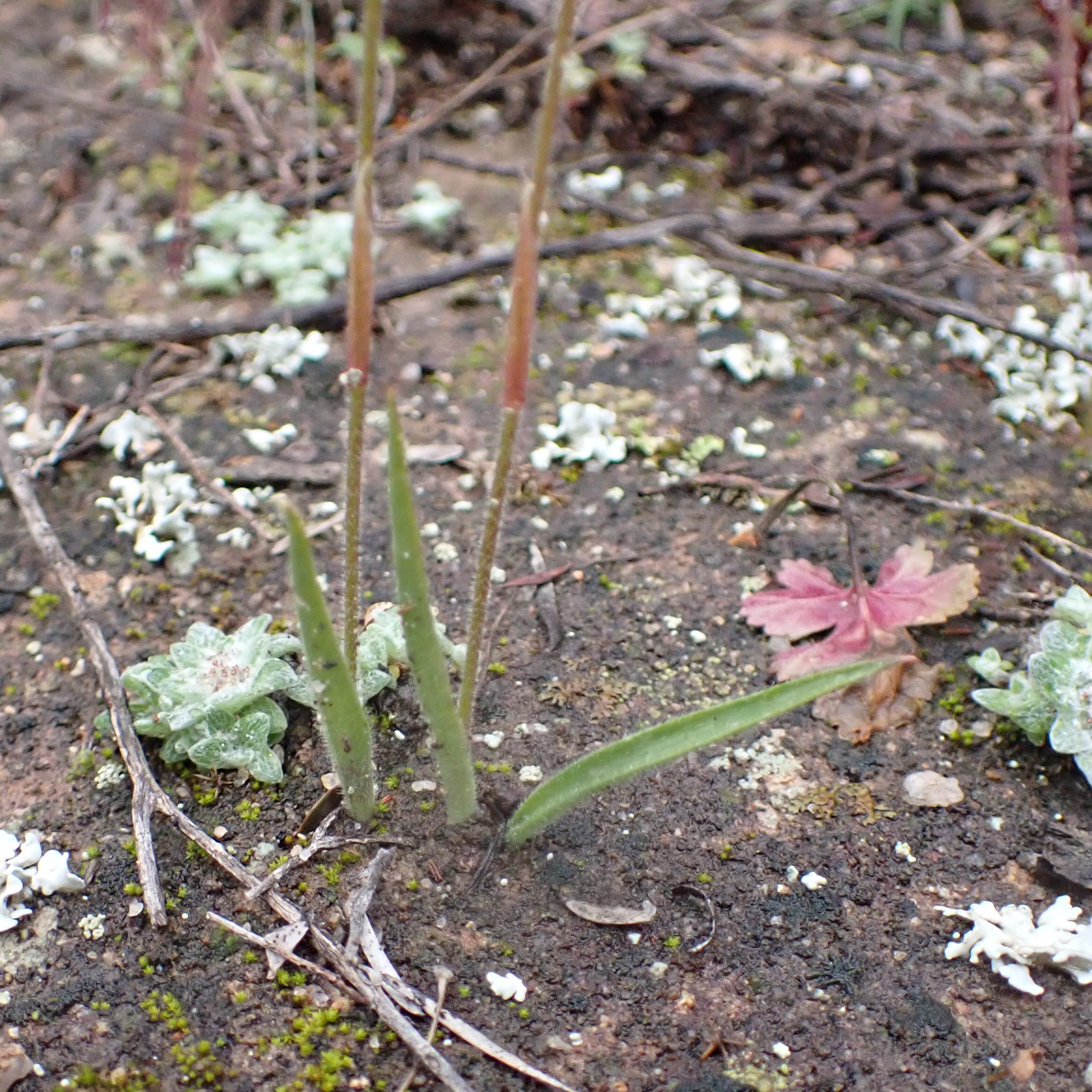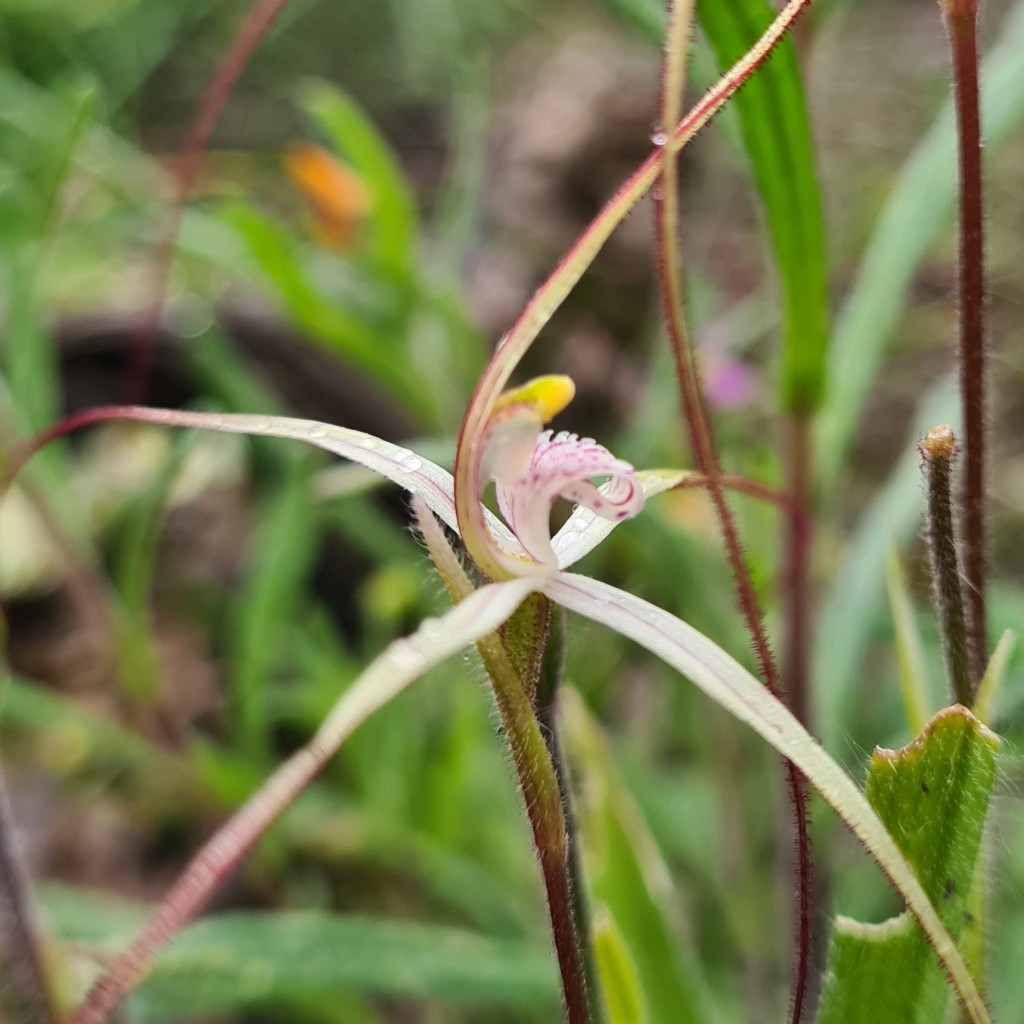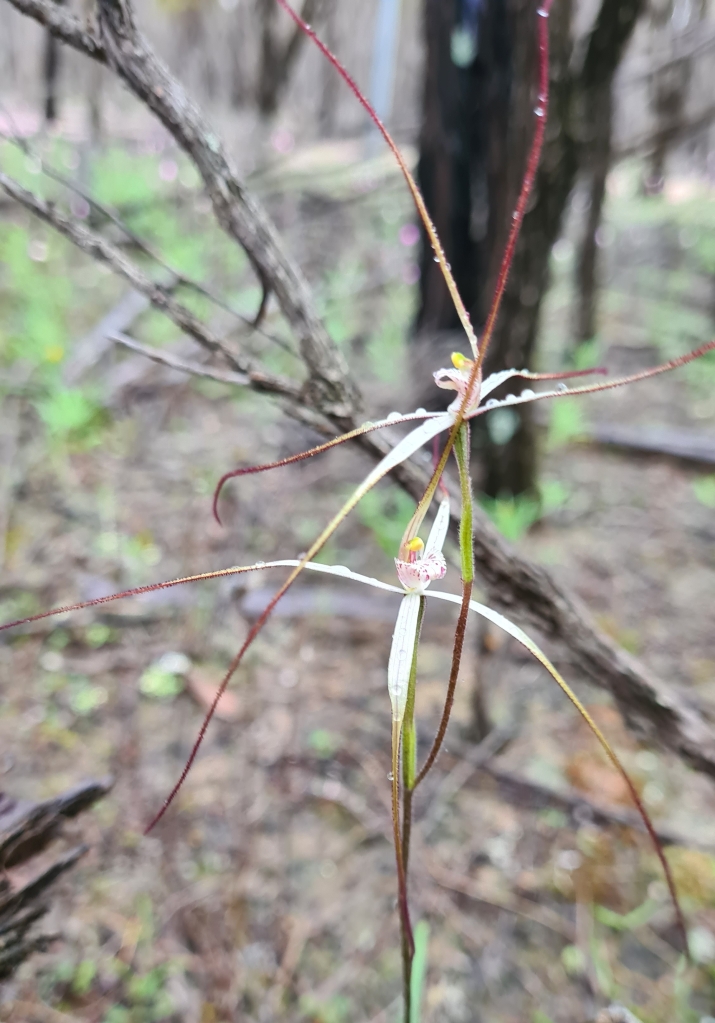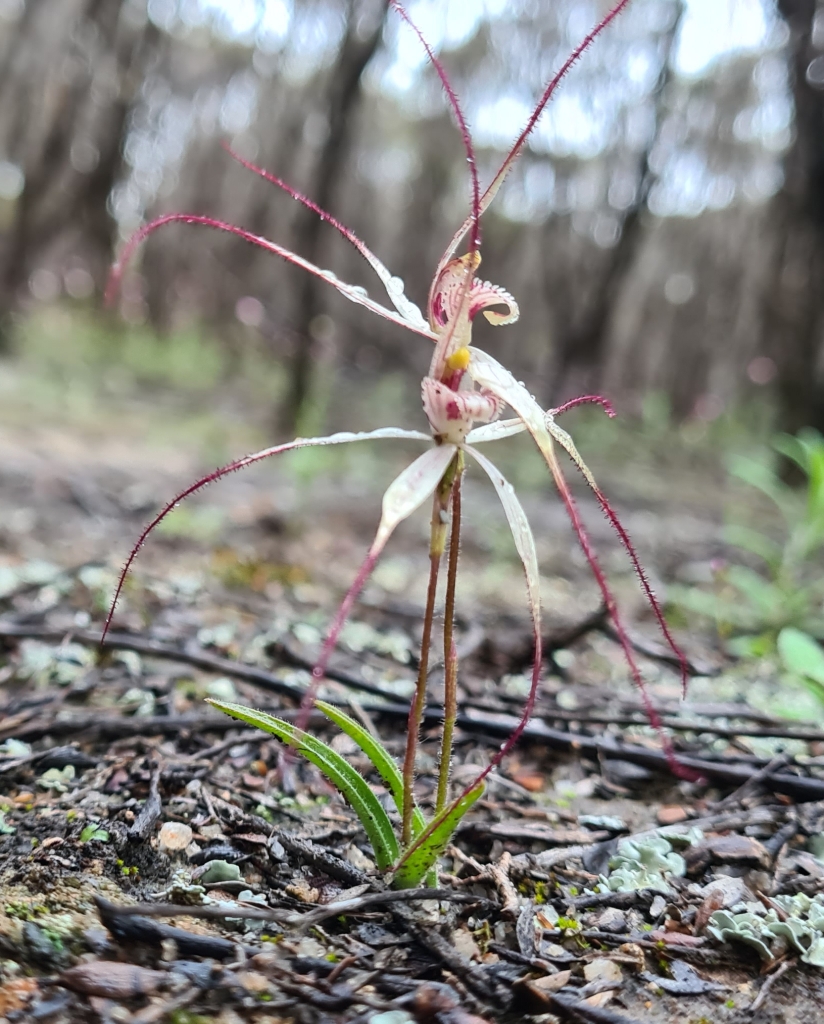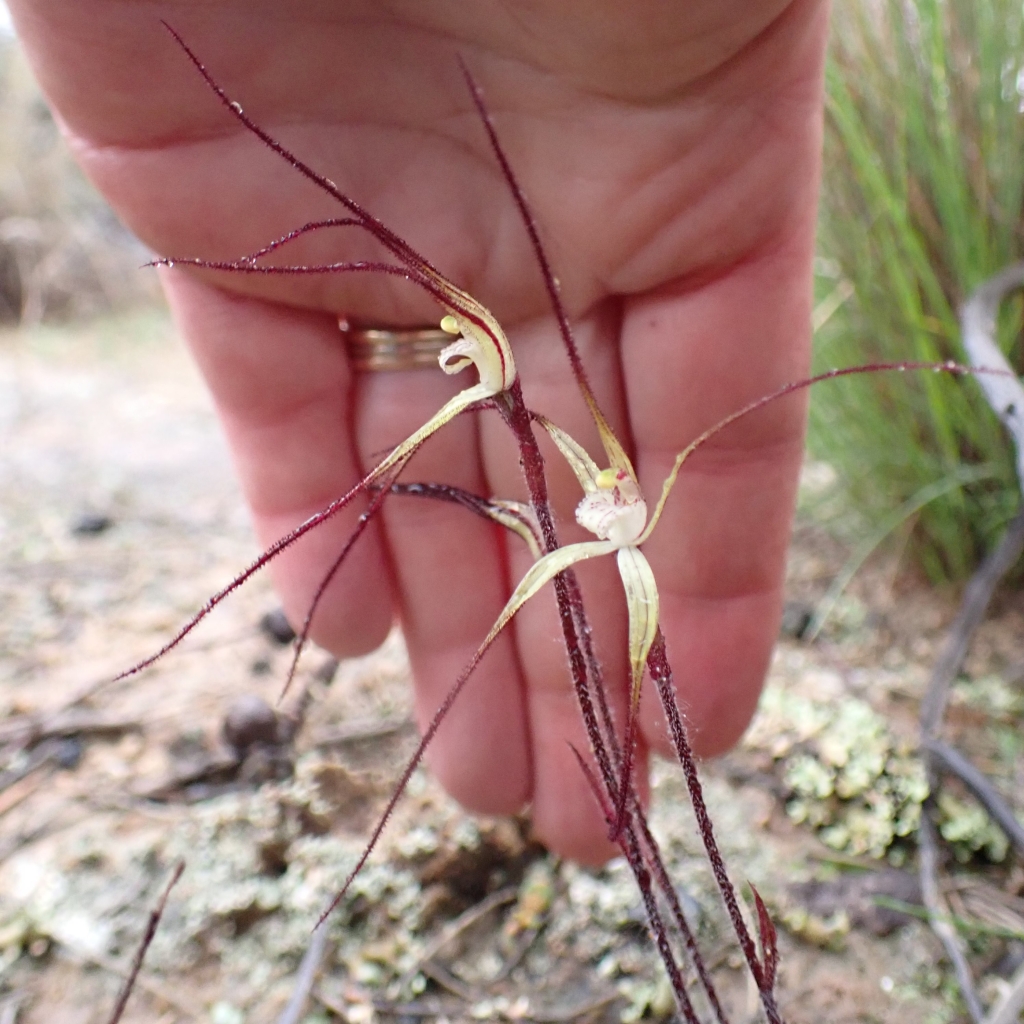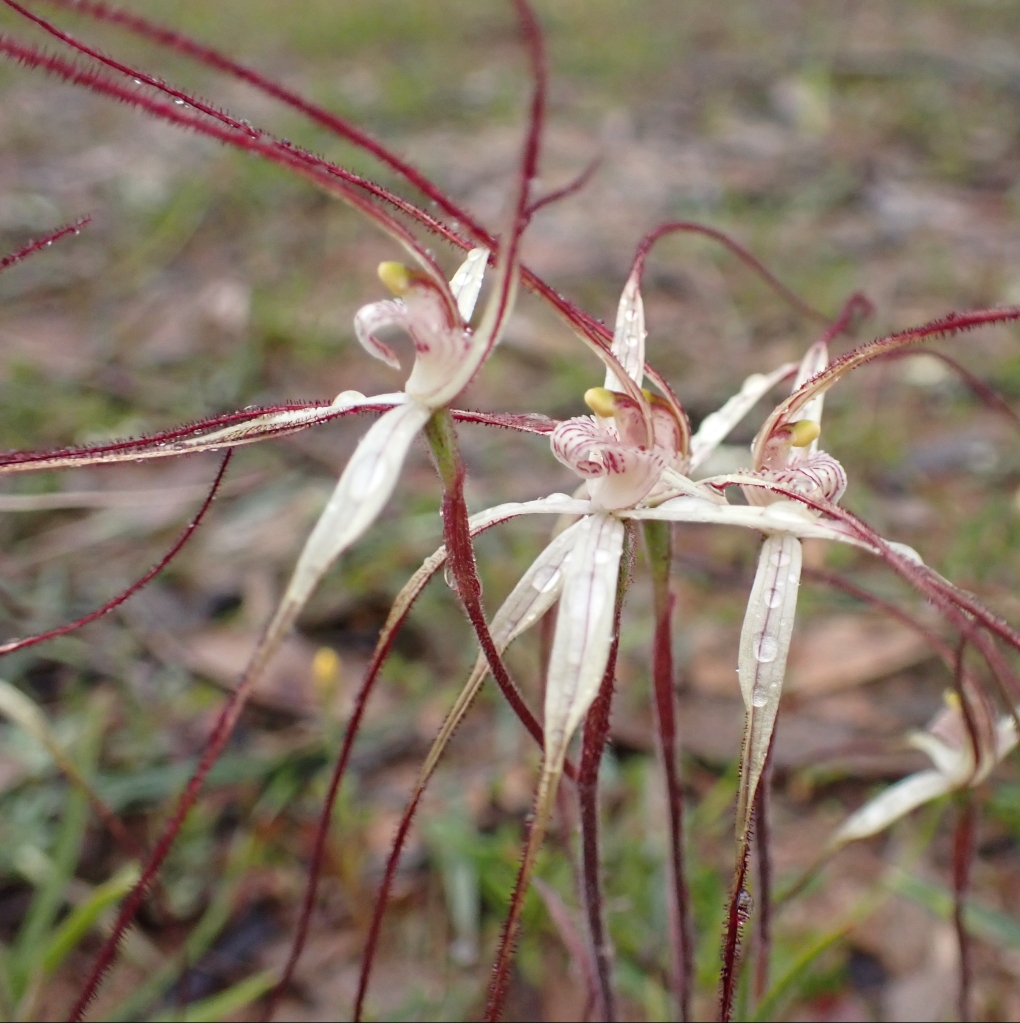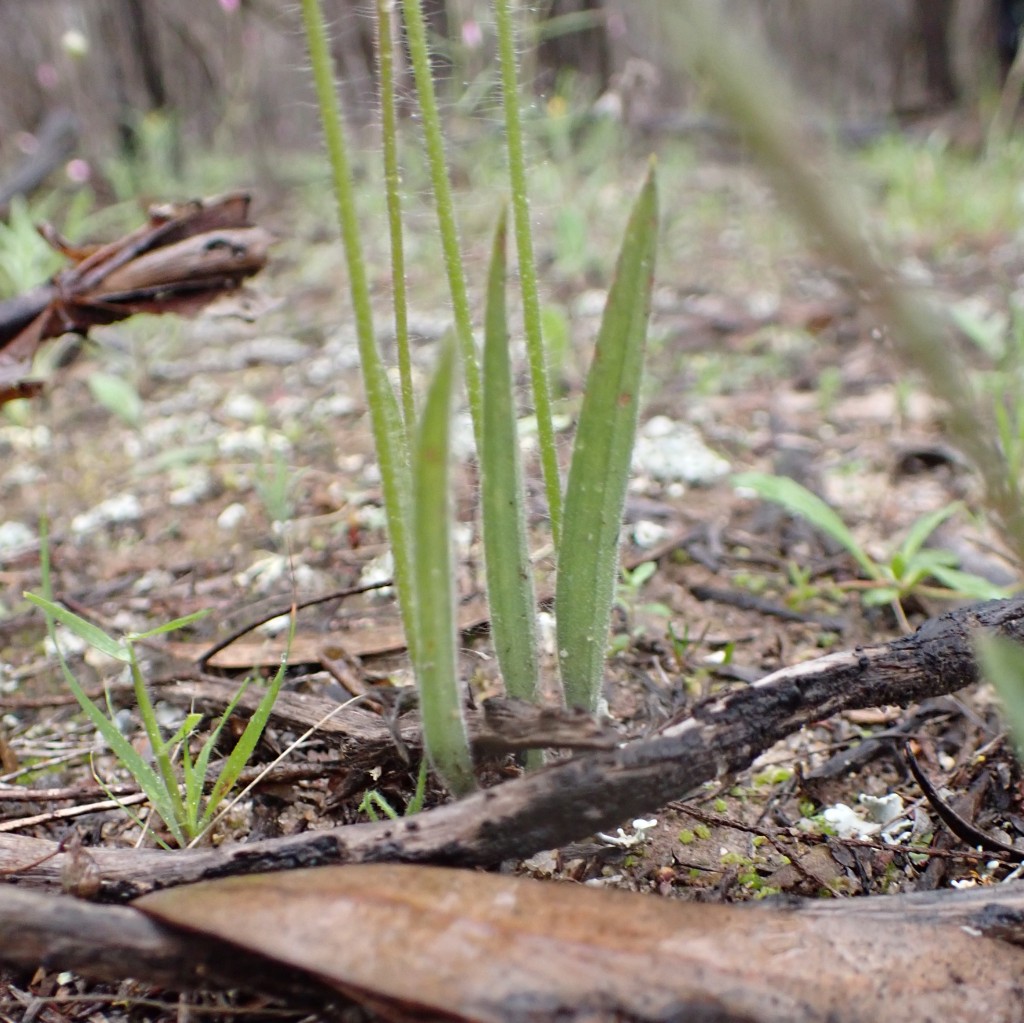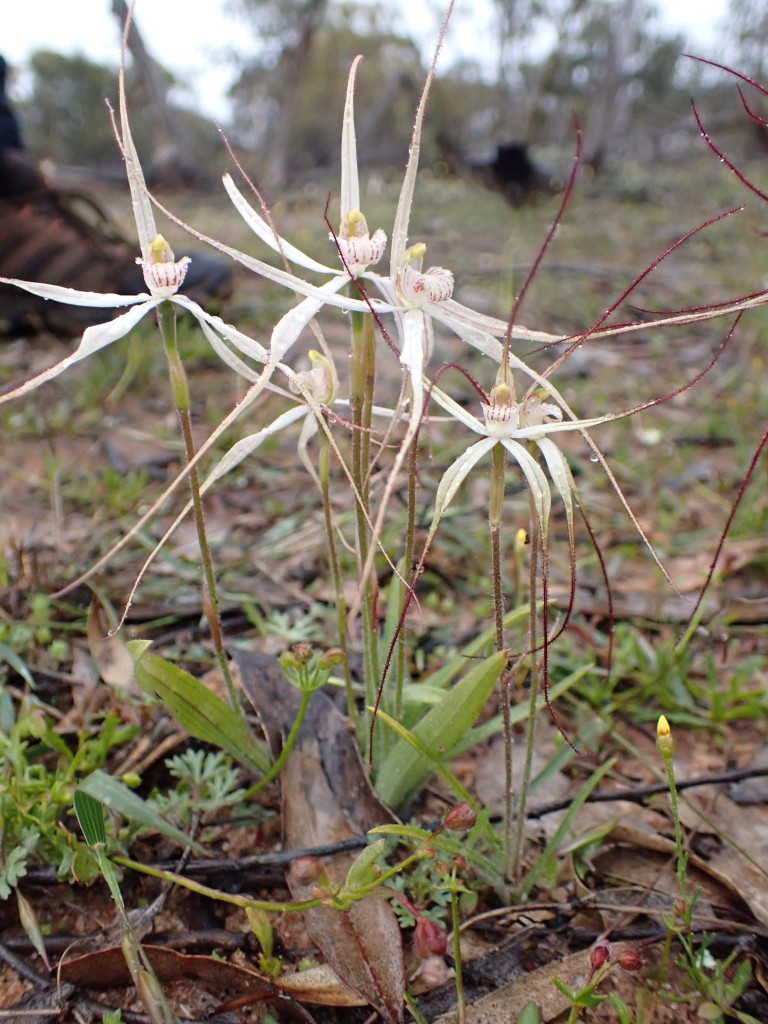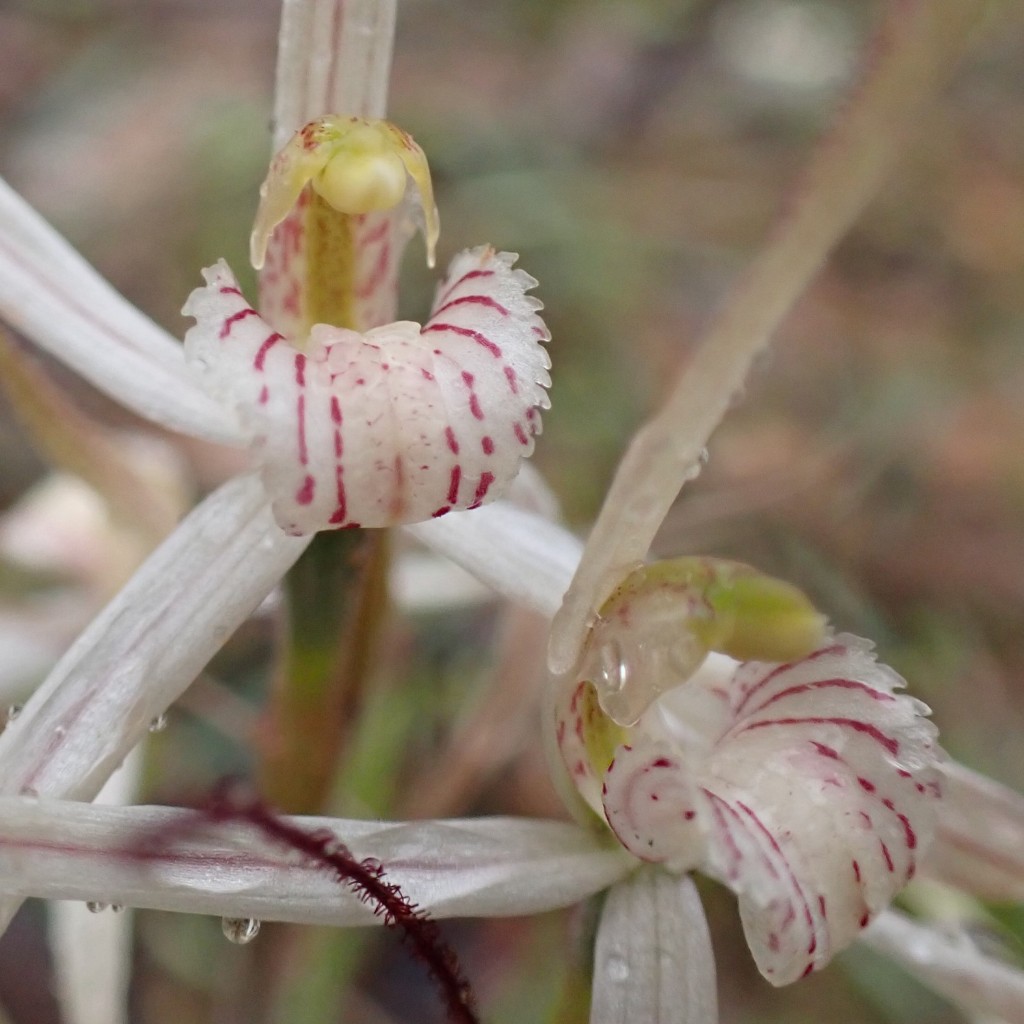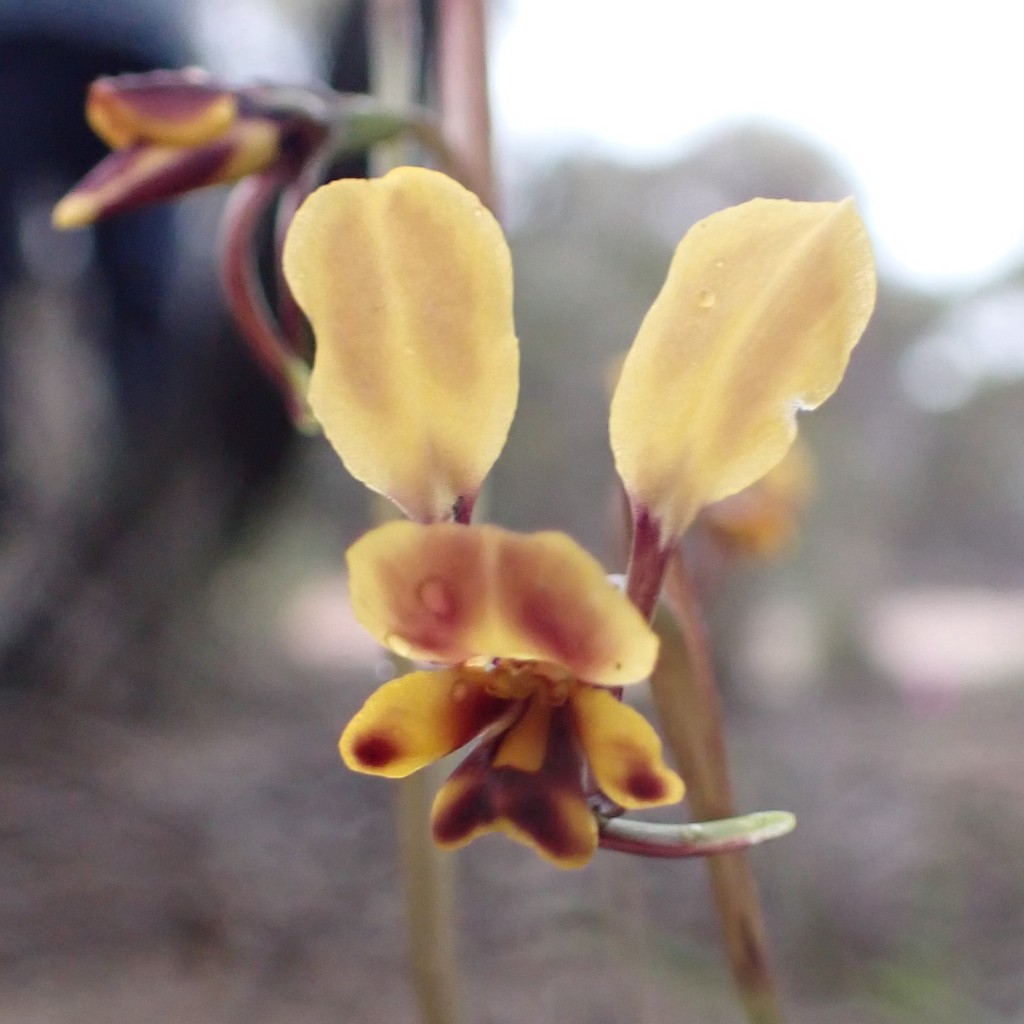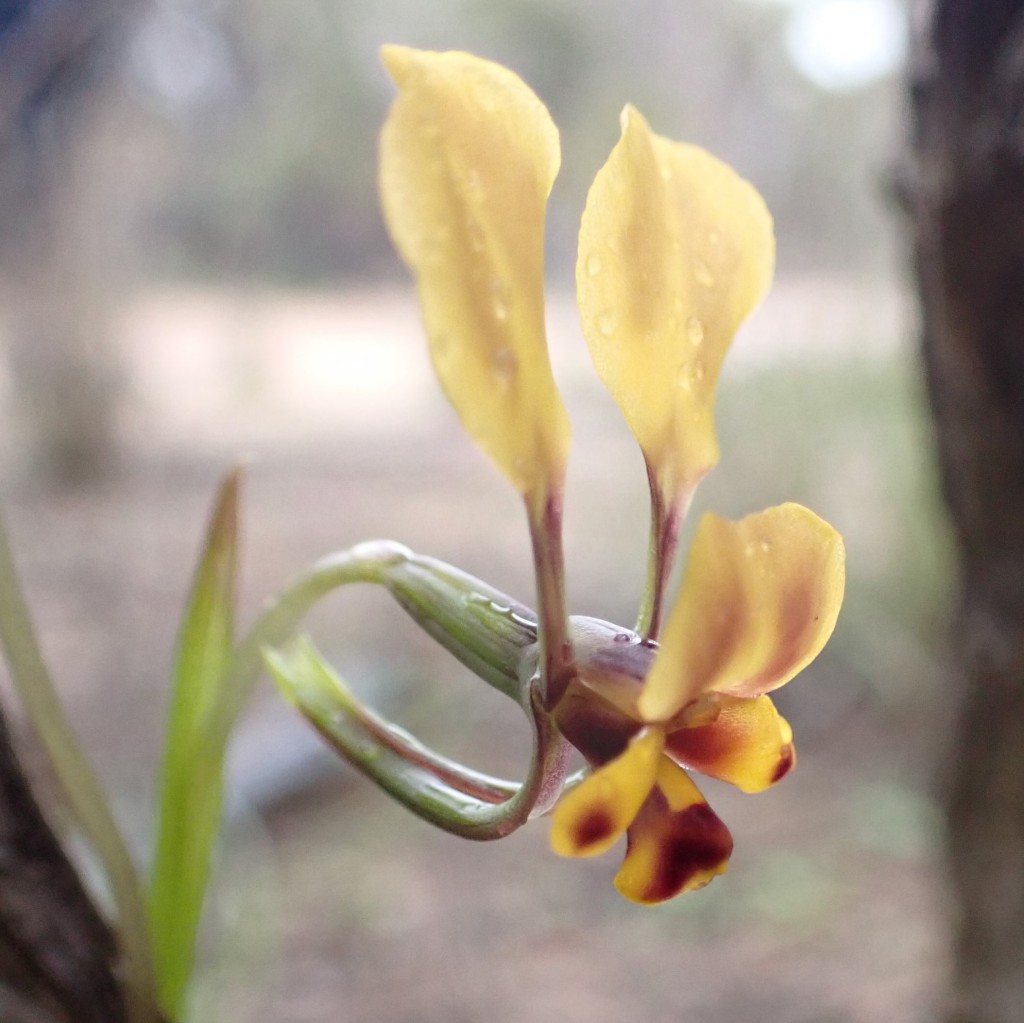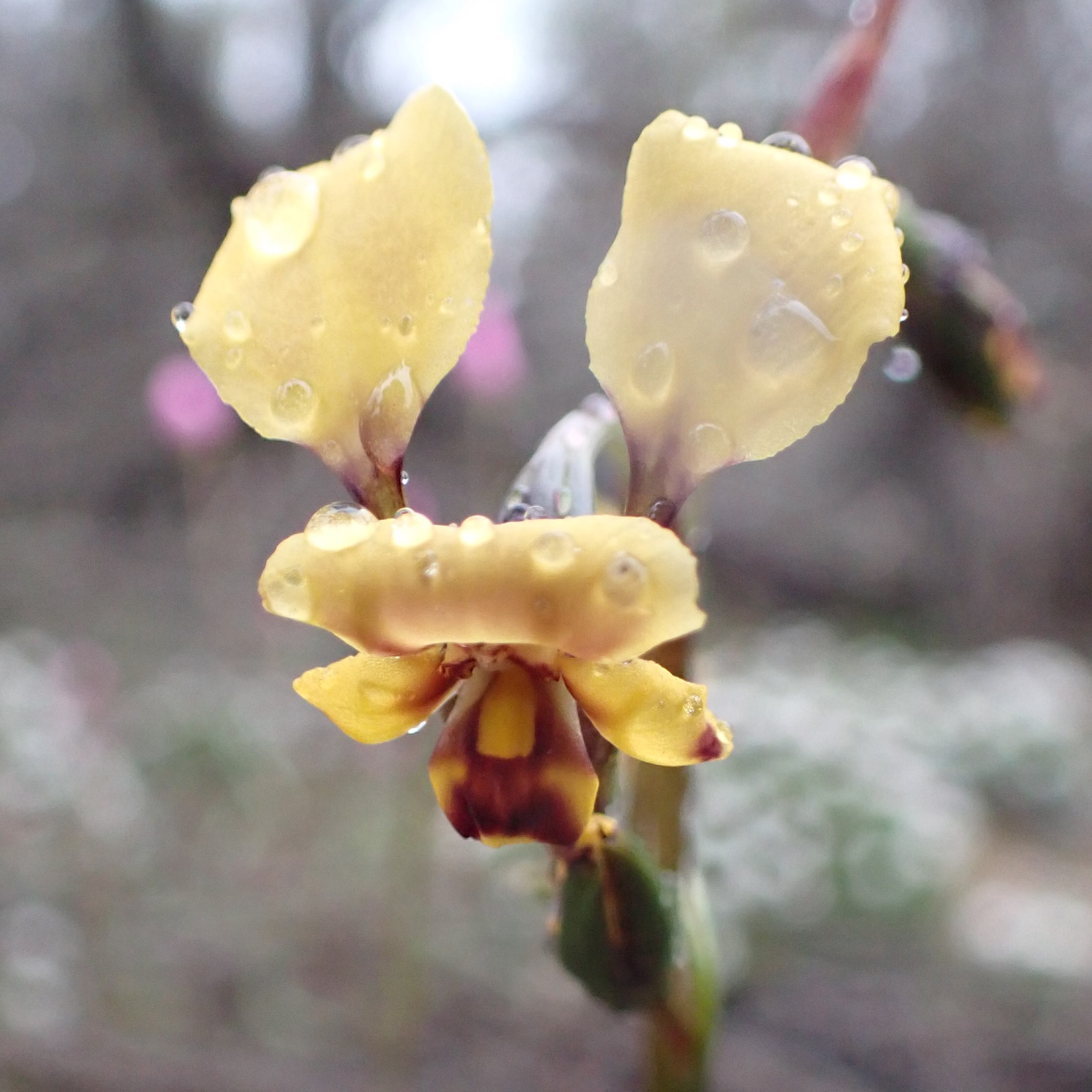Upon leaving the Jerramungup burnt are we head east looking for somewhere to park up for the night. We make it about 35kms when we pull into the Jacup Highway Park at the Fitzgerald River crossing. This will do, so we set up the camper and I do my best to drive over a log in my Ford Falcon, not the greatest idea 🙂 I’ve had.
Now we still have the late afternoon to go orchid hunting. As per our previous visit to this location, we are not disappointed. First, we find the Green spider/Fringed mantis orchid (Caladenia falcata) flowering in isolation and in small groups over the entire area we checked out.

Calli extend to mid lobe only 
Clubbed sepals 
Parent and hybrid child
As can be seen in the picture above the hybrid, Wheatbelt spider orchid (Caladenia x cala) was also found. It was amazing how many were actually found, as we usually find one or two only in each location.

Attractive hybrid 
Red hockey stick shaped calli 
Regularly found in twins 
Standing up to 400mm in height 
Long fringe segments to greenish-white, red-tipped labellum 
Long pendulous lateral sepals 
Another parent and hybrid child
And of course, we also found the other parent for the hybrid. The Stark white spider orchid (Caladenia longicauda subsp. eminens) occurs as far east as Ravensthorpe and grows in open woodlands so seems to fit the bill.

Broad labellum 
Broad bases to lateral sepals 
May be found in tight groups 
Bright white in colour 
Labellum yet to curl under
Next, we find the very special Lazy spider orchid (Caladenia multiclavia) which is recorded as occurring between Wongan Hills, Borden and Ravensthorpe. This unusual looking orchid is known for its upright petals and sepals plus the smooth striped labellum with a dense band of bristly headed calli.

Tied up with cobwebs 
All sepals and petals held upright 
Horizontally held flowers. 
Lazing with friends 
Greenish-yellow flowers with heavy red striping and shading 
Striped diamond shaped labellum 
Can stand up to 250mm in height 
A mobile labellum – Vertical to Horizontal 
Dorsal sepal and petals almost joined. 
Lazing in the late afternoon sunshine
We also come across a mixture of other orchids but not in great numbers, so I will record then with only 1 pic each. Firstly, there is the ever-reliable Cowslip orchid (Caladenia flava subsp. flava) and Common mignonette orchid (Microtis media subsp. media). Both are common, widespread orchids. Then the more rarely found, without a recent summer fire, Red Beaks (Pyrorchis nigricans) is discovered with a nine-flower inflorescence. Finally, a pale coloured Pink candy orchid (Caladenia hirta subsp. rosea) and possibly a Ravensthorpe rufous greenhood (Pterostylis leptochila) yet to fully flower are found.

Cowslip orchid (Caladenia flava subsp. flava) 
Common mignonette orchid (Microtis media subsp. media) 
Pink candy orchid (Caladenia hirta subsp. rosea) 
Red beaks (Pyrorchis nigricans) 
Ravensthorpe rufous greenhood (Pterostylis leptochila)
One orchid not expected was the Common dragon orchid (Caladenia barbarossa) which is found flowering between Bindoon and Munglinup. There are only 4 species of dragon orchids, and all are endemic to WA. Only 2 specimens found but still very happy.

Column overlooks the large major callus 
Standing up to 300mm in height 
Spreading petals and lateral sepals 
Distinctive hairy labellum
However, one final orchid is found in decent numbers. The Drooping spider orchid (Caladenia radialis), is found flowering between Northampton and Ravensthorpe from August to October. The labellum can have smooth margins or tiny marginal teeth.

Drooping petals and lateral sepals 
Dorsal sepal can be held erect. 
Two distinct bands of calli 
Dorsal sepal can also droop 
Red striped labellum 
Stand up to 350mm in height
Back to camp due to the fading light.

We awake to a beautiful sunny morning, have breakfast then decide we will take some time this morning to complete a search down to the river. Fingers crossed for something new.
First up though I will post pictures of those orchids we come across that we also found in our afternoon search yesterday.

Drooping spider orchid (Caladenia radialis) 
Wheatbelt spider orchid (Caladenia x cala) 
Stark white spider orchid (Caladenia longicauda subsp. eminens) 
Ravensthorpe rufous greenhood (Pterostylis leptochila) 
Green spider orchid (Caladenia falcata) 
Common mignonette orchid (Microtis media subsp. media) 
Lazy spider orchid (Caladenia multiclavia)
Now for the new findings of the location. The Short-sepaled spider orchid (Caladenia brevisura) is found between Jerramungup and Israelite Bay from August to October. Only one specimen found, and not the best picture, but a record non the less. Another sole specimen found was that of the Bee orchid (Diuris laxiflora) which flowers September to early November between Gingin and Esperance.

Short-sepaled spider orchid (Caladenia brevisura) 
Bee orchid (Diuris laxiflora)
Blue sun orchids are found in good numbers closer to the river. Now identifying them is needed. As I am writing this account over 12mth later I am identifying them from pictures taken. Based on these I feel some to be Scented sun orchid (Thelymitra macrophylla) due to the broad leaf and large numerous flowers. Others though have thin leaves with fewer flowers, so are most likely the Shy sun orchid (Thelymitra graminea). Both are recorded as flowering in the Shires of Ravensthorpe and Jerramungup during the month of October.

Shy sun orchid (Thelymitra graminea) 
Shy sun orchid (Thelymitra graminea) 
Shy sun orchid (Thelymitra graminea) 
?? sun orchid (Thelymitra sp.) 
Scented sun orchid (Thelymitra macrophylla) 
Scented sun orchid (Thelymitra macrophylla) 
Scented sun orchid (Thelymitra macrophylla) 
Scented sun orchid (Thelymitra macrophylla) 
?? sun orchid (Thelymitra sp.) 
Sun orchid with Green spider orchid 
?? sun orchid (Thelymitra sp.)
It is 11am so we had better push on as we need to arrive home in Esperance today. One last stop is made at Kukenarup Memorial, where we enjoy a spot of lunch before one last exploration for orchids.

































































